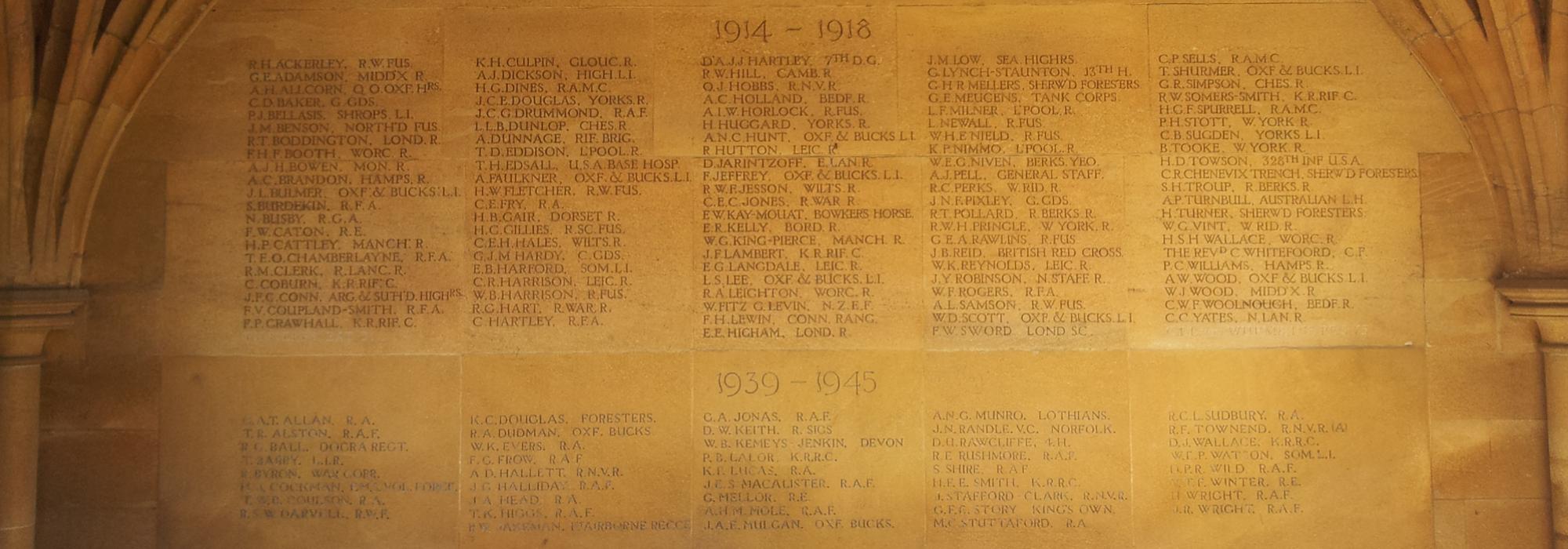
The Merton College War Memorial
It is easy to walk past the College War Memorial, situated under the Fitzjames Arch between Front and Fellows' Quads, without taking a second glance at the names listed. To mark the centenary of the outbreak of the First World War in 2014, we found out more about the men who lost their lives in 'The War to End All Wars'. Our research then continued to cover those who had fallen during the Second World War.
There are 109 names listed on the memorial under the dates '1914-1918', among them six College servants, a Fellow's son, an Olympic athlete - and two German Rhodes Scholars, whose names were added in 1994, after a campaign by Tom Braun, then Tutor in Ancient History, who had himself come to Britain as a refugee from Germany in 1938. To reflect the equality of sacrifice, no military ranks are listed on the memorial.
Ranks were likewise not included against the 43 names that were added to the memorial in 1947 following World War II.
Here are some of the faces and stories connected to these names.
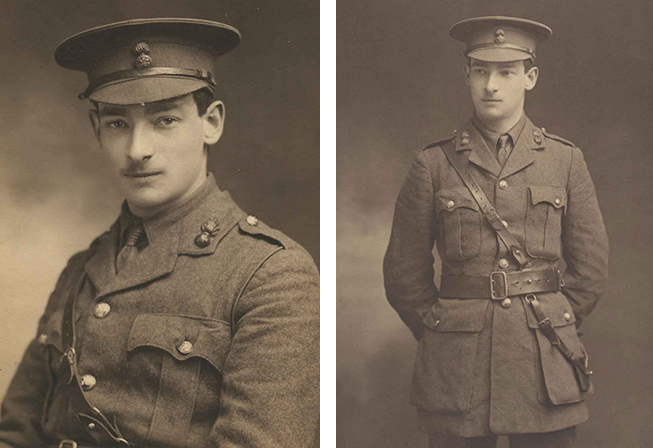
3rd Battalion, attached to 1st Battalion, Royal Welch Fusiliers
Born 15 February 1892 in Newton Abbot, Devon
Killed in action 16 May 1915, aged 23
Buried at Pont-du-Hem Military Cemetery, La Gorgue, France
Ronald Ackerley, known to his family as Hermann, was the eldest son of Dr Richard Ackerley & Eliza Helen, née Page, of Llandrindod Wells.
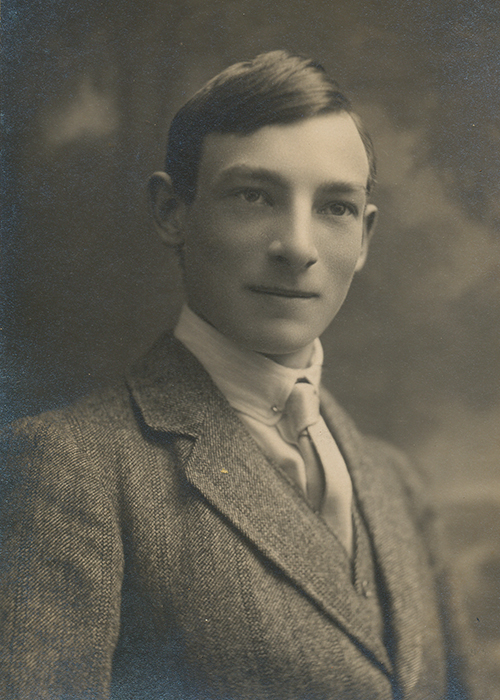
He was educated at Eton, and came up to Merton College as a Postmaster. Whilst at Oxford he was a member of the Officers’ Training Corps.
He volunteered for service on 8 August 1914, and was gazetted to the 3rd Royal Welch Fusiliers as Second Lieutenant. He went to the front on 1 February 1915.
He was killed in action at Festubert, on 16 May 1915.
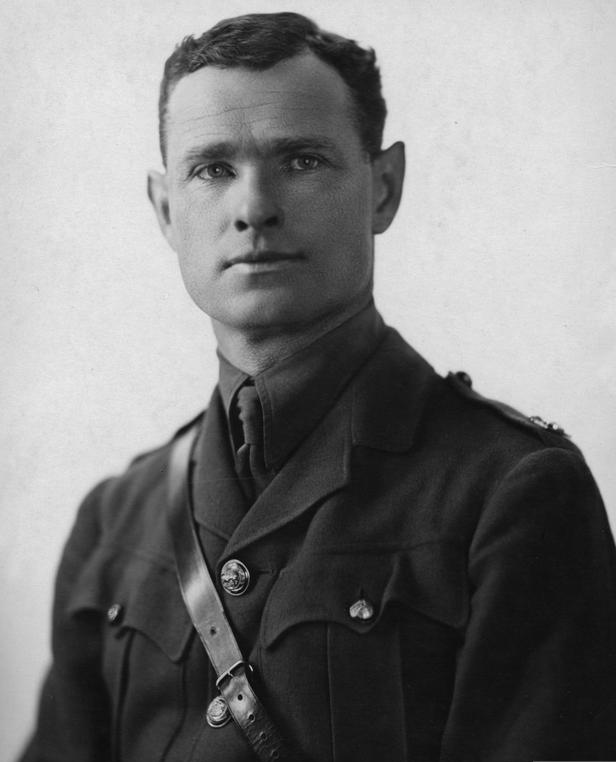
7th (Reserve) Battalion, Middlesex Regiment
Born 28 December 1894 in London
Killed in action 24 August 1918, aged 23
Buried at Bellacourt Military Cemetery, Rivières, France
Gilbert Adamson was the son of John William Adamson, a Professor at Kings College London, and Caroline Amanda, née Knapman, of 44 Whitehall Park, Highgate, London.
He was educated at the City of London School, and came up to Merton in 1914.
He received his commission in the Middlesex Regiment on 5 March 1915, subsequently serving with C Company of the 7th Battalion on the Western Front from July to August 1917 and again from October 1917 to August 1918. He was awarded the Military Cross on 28 May 1918.
He was killed in action in the attack on Summit Trench, Croisilles, France, on 24 August 1918.
2/4th Battalion, Oxfordshire & Buckinghamshire Light Infantry
Born 1882 in Oxford
Died from diabetes, 3 January 1919, aged 36
Buried at Rose Hill Cemetery, Oxford. Also commemorated on a memorial at St Mary and St John Church, Cowley.
Alfred Allcorn was the eldest son of Alfred Frederick Allcorn and Kate, née Benson, of Cowley, Oxford. He was married to Mondona Annie, née Willcox, in 1911, and they had a child, also called Alfred, the following year.
He worked as a College Porter, and lived in Argyle Street, a 20-minute walk from Merton just off the Iffley Road.
Before the war he served as a territorial in the Royal Army Medical Corps for four years; he enlisted in the Oxfordshire Yeomanry, also known as the Queen’s Own Oxfordshire Hussars — or the ‘Queer Objects On Horseback’! — on 10 December 1915, and joined the 3/1st Battalion.
He sailed for France on 16 December 1916, in all likelihood one of a number of Hussars who joined the 1/4th Battalion on the Somme shortly before Christmas that year.
He suffered gunshot wounds to his left eye in September 1917, and his left leg in April 1918, after which he was sent back to England. There it was discovered he was suffering from diabetes, and in August he was discharged as ‘permanently unfit for further military service’, which had been ‘aggravated by active service’.
He died in Oxford on 3 January 1919, leaving his wife to bring up her three children – two from a previous marriage – on a Widow’s War Pension.
Thanks to the efforts of the Soldiers of Oxfordshire Trust and the In From the Cold Project, in 2012 the Commonwealth War Graves Commission accepted him as a casualty of the First World War, and commissioned a new headstone for his grave.
Additional information from Michael Cross at the Soldiers of Oxfordshire Trust; with thanks to the Oxfordshire Family History Society.
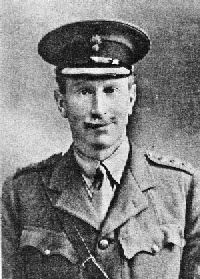
1st Battalion, Grenadier Guards
Born 5 December 1870 in Lewisham, London
Killed in action 29 July 1917, aged 46
Buried at Duhallow ADS (Advanced Dressing Station) Cemetery, near Ypres, West Flanders, Belgium. Also commemorated on the Lord's Cricket Ground MCC Members WWI war memorial in the Lord's Pavilion.
Cecil Baker was the third son of Arthur Henry Baker JP FRS and Clara, née Mortimer, of Elderslie, Beckenham, Kent. He married Gwendoline Maud Peyman on 6 October 1898.
He was educated at The Abbey School in Beckenham, Kent; and at Sherborne School, where he was a member of the cricket 1st XI, and the rugby 1st XV. Whilst at Merton he was a member of the OURUFC 1st XV, which he captained in 1892. He later played for Blackheath and Barbarians. In 1895 he became a member of the Stock Exchange.
On the outbreak of war he was given a commission as Second Lieutenant in the Royal Naval Volunteer Reserve Anti-Aircraft Corps, but was transferred to the Grenadier Guards (Special Reserve) in September 1915, where he was promoted to Lieutenant in January 1916 and Acting Captain in January 1917. He served with the Expeditionary Force in France and Flanders from 28 October 1915, and was wounded during April 1916.
He was killed in action at Le Bois des Crapouillots, near Ypres, France on 29 July 1917.
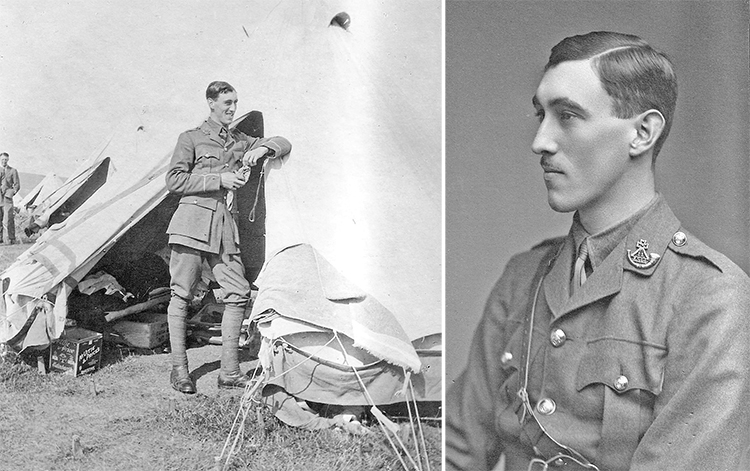
5th (Service) Battalion, King's (Shropshire Light Infantry)
Born 19 April 1893 in Kensington, London
Killed in action 24 August 1916, aged 23
Commemorated on the Thiepval Memorial, Somme, France. Also commemorated on the war memorial at Shrewsbury Cathedral.
Philip Bellasis was the youngest son of William Dalglish Bellasis and Marie Sophie Dalglish Bellasis (daughter of the Marquis de Guerry de Lauret) of Stanley, Goring, Oxfordshire.
He was educated at the Oratory School, Birmingham, and matriculated at Merton in 1912. While at Oxford he was a keen hockey player, and a member of the Officer Training Corps.
He was made a Captain in August 1915, and shortly afterwards received shrapnel wounds to his left thigh and right hand at the battle of Hooge, for which he was hospitalised at Étaples.
He had sick leave from 5 October to 5 December 1915, returning to his Battalion in April 1916.
He was killed by a shell at Delville Wood, during the Battle of the Somme, on 24 August 1916.
His body not having been found, his name is among those of 72,000 officers and men of the United Kingdom and South African forces who died in the Somme sector before 20 March 1918, on the Thiepval Memorial in France, the Memorial to the Missing of the Somme, who have no known grave.
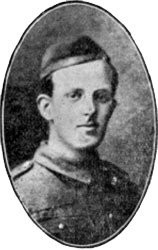
4th Battalion, Northumberland Fusiliers, commanding 149th Trench Mortar Battery
Born 23 July 1891 in Airdrie, Scotland
Killed in action 27 May 1918, aged 26
Commemorated on the Soissons Memorial, Aisne, France; and on a family gravestone in New Monkland Cemetery, Strathclyde
John Benson was the son of John Benson and Jeanie Law Martin Benson of Marionville, Airdrie.
He was educated at Airdrie Academy, St Salvators in St Andrew’s and Fettes College – where he played cricket for the First XI – before matriculating at Merton in 1910. Whilst at Oxford he played cricket for the Oxford Freshmen.
He enlisted in the 9th (Glasgow Highlanders) Battalion, Highland Light Infantry in September 1914, and was gazetted to the 6th (City of Glasgow) Battalion in October of the following year.
Twice previously wounded, he was killed in action between Craonne and Pontavert on the Aisne, on 27 May 1918. The 4th Battalion, Northumberland Fusiliers virtually ceased to exist after the Battle of the Aisne, because so many fusiliers were killed, wounded or captured. His death was only confirmed in November 1918.
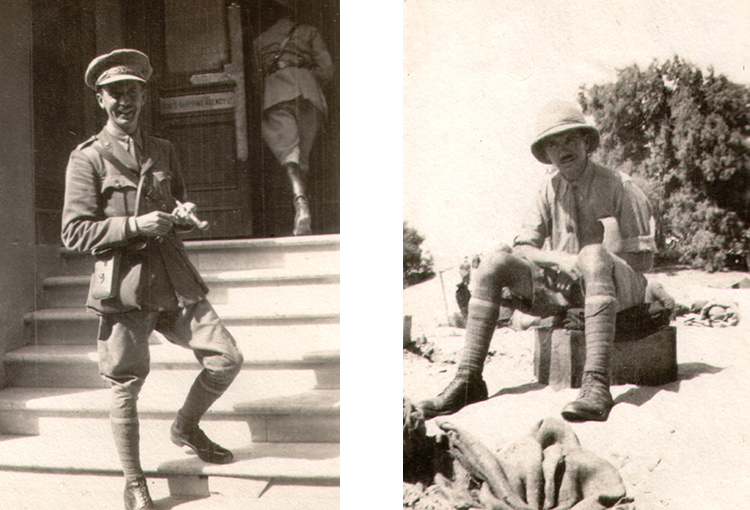
1/10th (County of London) Battalion (Hackney), London Regiment
Born 8 June 1883 in Selly Park, Birmingham
Killed in action 2 November 1917, aged 34
Buried at the Gaza War Cemetery, Israel/Palestine. Also commemorated on the Berkswell, Solihull, and Sidmouth war memorials, and at King Edward’s School.
Ralph Boddington was the son of Samuel Boddington, a wool merchant, and Elizabeth Mary, née Pask Hughes, of Birmingham. He married Muriel Jessie Harris on 12 October 1910 at Stoneleigh, Warwickshire. They had one son, Paul, born in 1913.
Ralph was educated at King Edward’s School, Birmingham and matriculated at Merton in 1902, taking a BA in 1905 and an MA in 1909. Before the war he worked as a solicitor in Sidmouth, Devon, before becoming senior partner in the firm of Hooper, Ryland and Boddington, Birmingham.
By March 1915, Ralph had joined the Arden Volunteer Rifle Corps, formed in December 1914; in July 1915 The Coventry Herald reported that he had qualified as a second-class shot at the 2nd Battalion Camp in Warwick. He was made Second Lieutenant at the start of August 1916.
He was killed in action at Rafa-Belah ridge, Gaza, on 2nd November 1917.
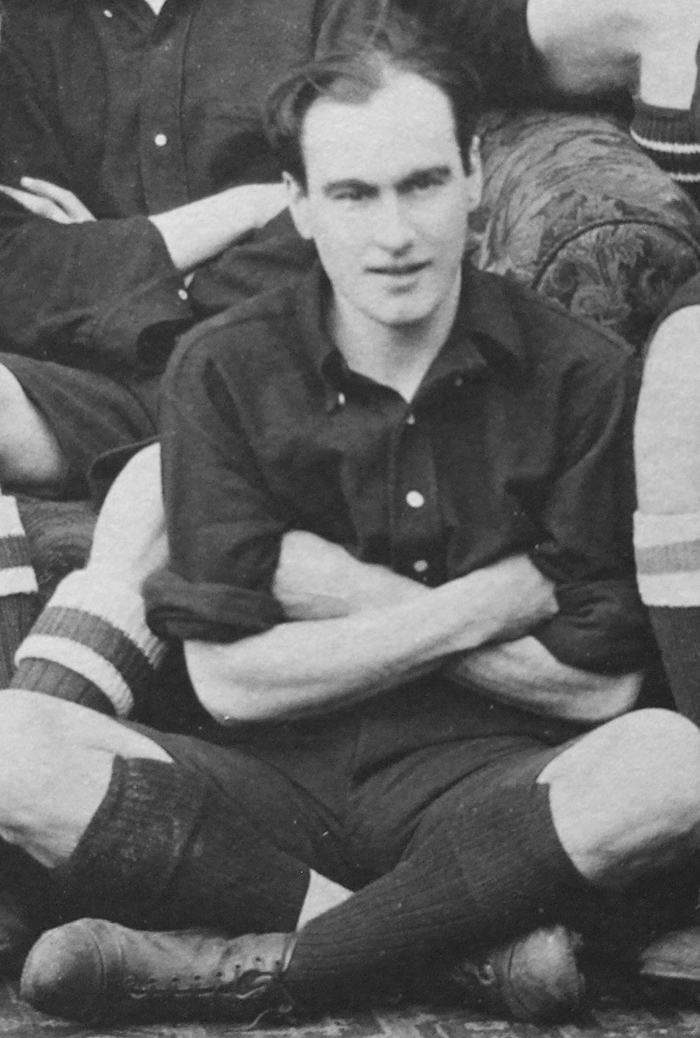
6th (Reserve) Battalion, attached to 2nd Battalion, Worcestershire Regiment
Born 9 January 1889 in Teddington, Middlesex
Missing, believed killed in action 25 September 1917, aged 28
Commemorated on the Tyne Cot Memorial, Belgium. Also commemorated in St Peter’s Church, Old Woking, Surrey, and on Woodham War Memorial, Woking.
Francis Booth was the son of Francis Henry Arthur Booth and Florence Eliza, née Giffard, of Hoe Place, Old Woking, Surrey. His father was a successful stockbroker on the London Stock Exchange, and the family lived before the war in Hoe Place, Old Woking, a 17th-century house now occupied by Hoe Bridge School. Francis was one of 11 children – six boys and five girls; his younger brother, Major Laurence Elliot Booth MC and Bar, was also killed in the Great War.
He was educated at Shrewsbury, and matriculated at Merton in 1908, taking his BA in 1914. He then travelled to Canada to study at St Chad’s Theological College, Regina, Saskatchewan.
He enlisted in King Edward’s Horse in August 1914, receiving his commission in the Worcestershires in November, and served in France and Belgium. Seriously wounded in December 1915, he rejoined his regiment after nine months.
He was posted as missing, believed killed in action near Gheluvelt, on 25 September 1917, whilst leading his company forward during the Battle of the Menin Road Ridge.
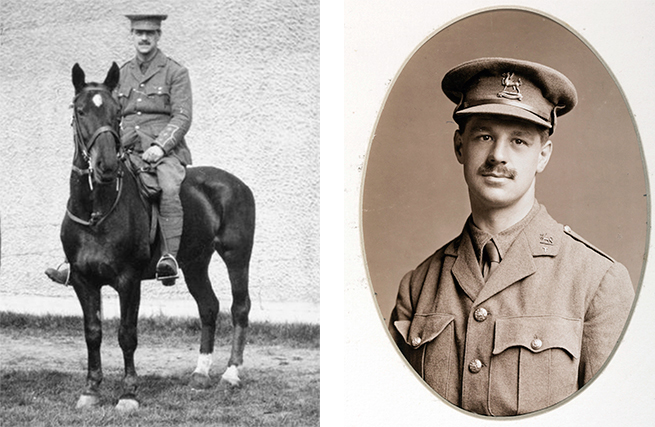
2nd Battalion, Monmouthshire Regiment
Born 15 December 1885
Killed in action 2 March 1917, aged 31
Buried at the Guards’ Cemetery, Combles, Picardy, France. Also commemorated on the Usk war memorial, Monmouthshire.
Alfred Bowen was the elder son of Alfred E. Bowen and Emily Marianne Bowen of Castle Vale, Usk, Monmouthshire, Wales. He married Jean Gertrude (née Wilton) of Winnipeg, Canada.
He was educated at Monmouth Grammar School and at Marlborough College, and matriculated at Merton in 1903. Before the war he practiced as a solicitor in Pontypool.
A Major in the 4th Volunteer Battalion, South Wales Borderers, he was mobilized as Captain on 4 August 1914, and was sent to France in November. He was awarded the DSO on 3 July 1915. His DSO citation reads:
“On the 13th May, 1915, east of Ypres, though wounded in two places in the head before dawn, he refused to leave his company, and continued to command it with conspicuous ability. After the action was over and the battalion returned to La Brique, he was found to be suffering from two other wounds in the body. He was then sent to hospital.”
He was placed in command of the regiment in August 1915, promoted to Lieutenant-Colonel in September, and awarded a bar to his DSO on 12 March 1917. He was also Mentioned in Dispatches three times.
Alfred Bowen was killed in action at Saillisel, on 2 March 1917.
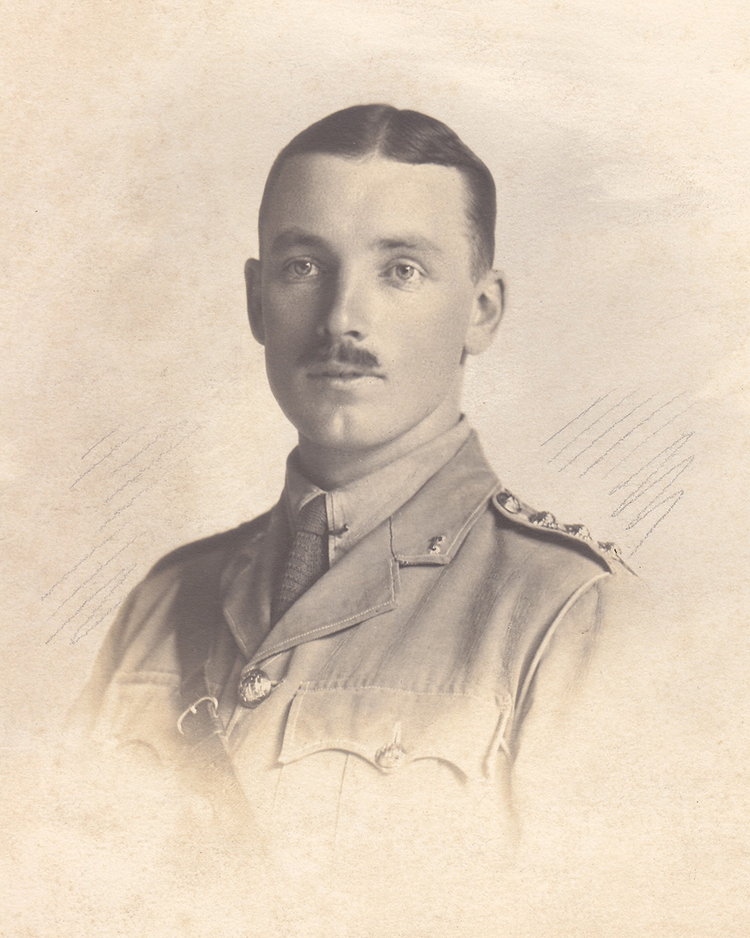
1/4th Battalion, Hampshire Regiment
Born 7 September 1885 in Suffolk
Killed in action 21 January 1916, aged 30
Commemorated on the Basra Memorial, Iraq. Also commemorated at All Saints Church, Crondall, Hampshire.
Arthur Brandon was the son of the brewer Arthur J Brandon and Kate Alethea, née Foulsham, of Redfields, Church Crookham, Hampshire.
He was educated at Uppingham School, and matriculated at Merton in 1904. He worked in brewing, firstly at Brakespear’s of Henley and Stewart Paterson’s of Norwich before joining his father’s company, Brandon's Putney Brewery Ltd, in January 1912.
As the holder of a commission in the 4th Hampshire Territorial Force, he was mobilized in August 1914, and served first in the campaign of the Persian Gulf, where he was invalided, resulting in his transfer to India for some months.
Arthur Brandon was killed in action on 21 January 1916 near Felahie in Mesopotamia during the Battle of Hanna, part of the unsuccessful campaign to relieve Kut-El-Amara, an 8,000 strong British-Indian garrison in the town of Kut, 100 miles south of Baghdad.
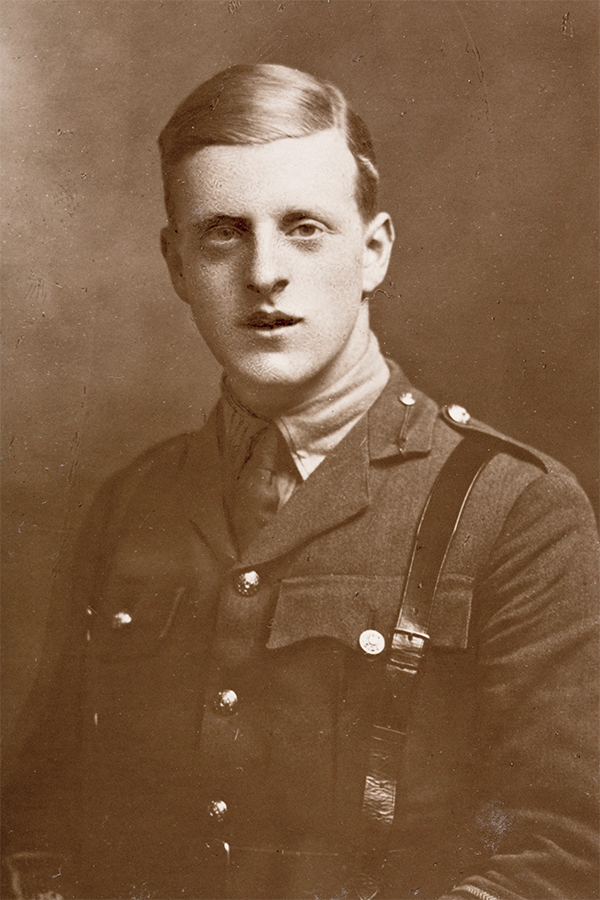
4th Battalion, attached to 5th (Service) Battalion, Oxfordshire and Buckinghamshire Light Infantry
Born 18 September 1894 in Yorkshire
Missing, presumed killed in action, 3 May 1917, aged 22
Commemorated on the Arras Memorial, Pas-de-Calais, France.
John Bulmer was the third son of Revd Edward Philips Bulmer and Elizabeth, née North, of 1 Brooklands, Filey, North Yorkshire. He had four brothers and a sister.
He was educated at Marlborough College where he was head boy in 1913, and knew TS Eliot while at Merton.
He volunteered for service in October 1915, and went to France the following March. Wounded on 6 September 1916, he was sent home; he rejoined his regiment in January 1917.
He was posted as missing, presumed killed in action, during an attack near Cherisy on 3 May 1917.
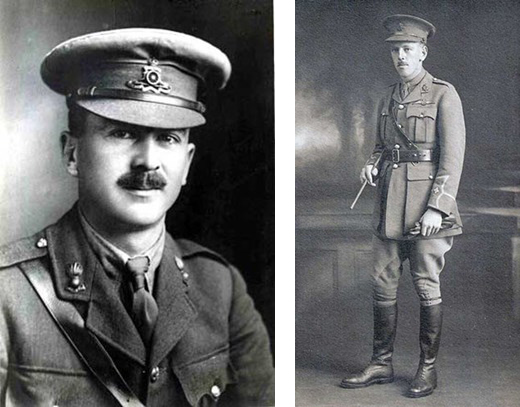
Royal Field Artillery, attached to 10th Trench Mortar Battery
Born 16 October 1885
Killed in action 27 September 1915, aged 29
Commemorated on the Loos Memorial, Pas-de-Calais, France.
Sydney Burdekin was the son of Sydney Burdekin of 197 Macquarie Street, Sydney, Australia. His family had a Queensland river, a hotel and an Australian warship named after them. Sydney senior was a noted politician and Mayor of Sydney in 1890, and the family home was the centre of high society.
He was educated at the Armidale School in New South Wales, before leaving Australia to come to Merton in 1904. He did not complete his degree, leaving Merton in June 1906, after which he played rugby for Rosslyn Park before returning to Australia in 1912.
Returning to Britain in 1915, he was gazetted as Second Lieutenant in February, and joined the Royal Field Artillery, serving in France.
Sydney Burdekin was reported missing on 27 September 1915, during the Battle of Loos.
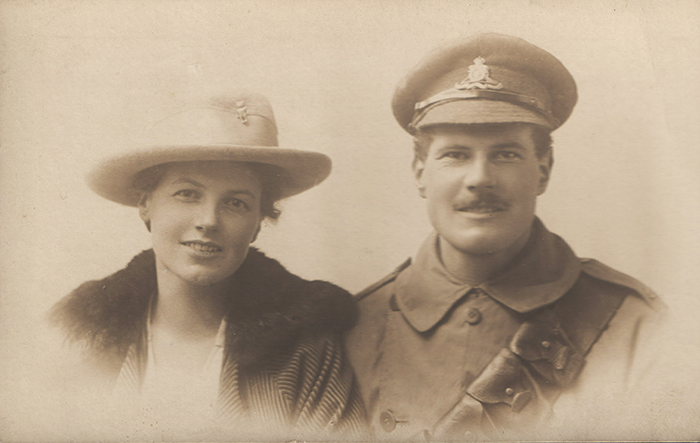
156th (Oxfordshire) Heavy Battery, Royal Garrison Artillery
Born 1895 in Coombe, Oxfordshire
Killed in action 8 October 1918, aged 23
Buried at Zantvoorde British Cemetery, Belgium.
Norman Busby was the son of Alfred Luther Busby and Laura, née Bedding, of 90 Walton Street, Oxford. Alfred went to South Africa in 1902 and was not heard from again.
Norman joined the Royal Garrison Artillery in November 1915 and was posted overseas on 19th June 1916.
He was killed in action on 8 October 1918, and was buried in a (marked) roadside grave at a point between Wervicq and Tenbrielen, near Ypres, Belgium. His body was exhumed and reburied at Zantvoorde Military Cemetery, on 1 September 1925.
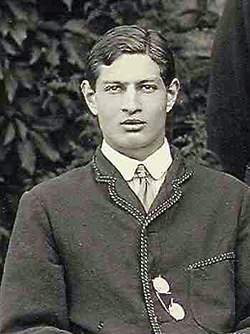
3rd (Reserve) Battalion, Oxfordshire and Buckinghamshire Light Infantry
Born 27 January 1892 in Wandsworth, London
Killed in action 5 June 1916, aged 24
Buried at Écoivres Military Cemetery, Mont-St-Éloi, Pas-de-Calais, France.
Aubrey Carew Hunt was one of three sons of Revd Robert Walter Carew Hunt and Mildred Mary Hamilton, née Bryans, of Albury Rectory, Tiddington, Wheatley, Oxfordshire.
He was educated at St Edward’s School, Oxford, where he was a member of the 1911 Elite Rowing IV. (Two of the other rowers and the cox lost their lives in the war, and the fourth was severely wounded and had a leg amputated.) Whilst at Merton he rowed in the College VIII for two years, and was President of the Stubbs Society; he took a second-class degree in Modern History in 1913.
He was gazetted (as Second Lieutenant) on 21 August 1914, and served in France. He was severely wounded at the Battle of Loos, and only returned to France a week before his death.
On his first night in the trenches since his return, he was killed by a stray bullet whilst superintending the erection of some wire netting, on 5 June 1916.
2nd Battalion, Special Brigade, Royal Engineers
Born 26 September 1884 in Sussex
Killed in action 28 June 1916, aged 31
Buried at Tranchée de Meknès Cemetery, Aix-Noulette, Pas-de-Calais, France. Also commemorated on a wooden war shrine at St Paul’s Church, Brighton.
Frederic Caton was the son of Edwin Charles Caton and Olivia, née Cole, of 6 Waterloo St, Hove, Brighton.
He was educated at Brighton Grammar School, and read Chemistry at Merton. He went on to work at the Wellcome Chemical Research Laboratories, and taught at East London College, at Taunton School, and in Staffordshire. In 1907 he was made a Fellow of the Royal Society of Chemistry.
He joined the Inns of Court Officers Training Corps in April 1915, and after training at Berkhamsted was gazetted on 21 June, joining the 11th South Staffordshire Regiment in July. It was recognised, however, that his scientific knowledge should be utilised, and he was therefore sent to the Staff College at Cambridge for special training. In March, 1916, he was transferred to the recently-formed Special Brigade of the Royal Engineers, responsible for the use of poison gas, and soon afterwards proceeded to France.
He was killed in action at Bully-Grenay, on 28 June 1916.
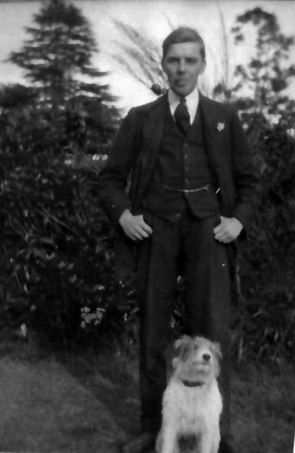
22nd (Service) Battalion, Manchester Regiment
Born 18 September 1890 in Brighton, East Sussex
Killed in action 14 March 1917, aged 26
Buried at Gommecourt British Cemetery No.2, Hebuterne, France. Also commemorated at Eton College, on the Surrey CCC War Memorial at the Oval, and at the Reform Club, London.
Hubert Cattley was the son of Hubert Toulmin Cattley and Lilian, née Pennington, of 17 Hyde Park Terrace, London. His mother was one of the first women to study mathematics at the University of Cambridge; his maternal grandfather was the Liberal MP for Stockport.
He was born in Brighton, was at Eton before coming up to Merton, and before the war he worked as a bank clerk.
He volunteered on 25 September 1914 in St James's, and joined the Middlesex Regiment. He was sent to France on 17 November 1915, and transferred to the Manchester Regiment on 1 November 1916.
He was killed in action, in a hastily planned small-scale attack on German trenches near Bucquoy, on 14 March 1917.
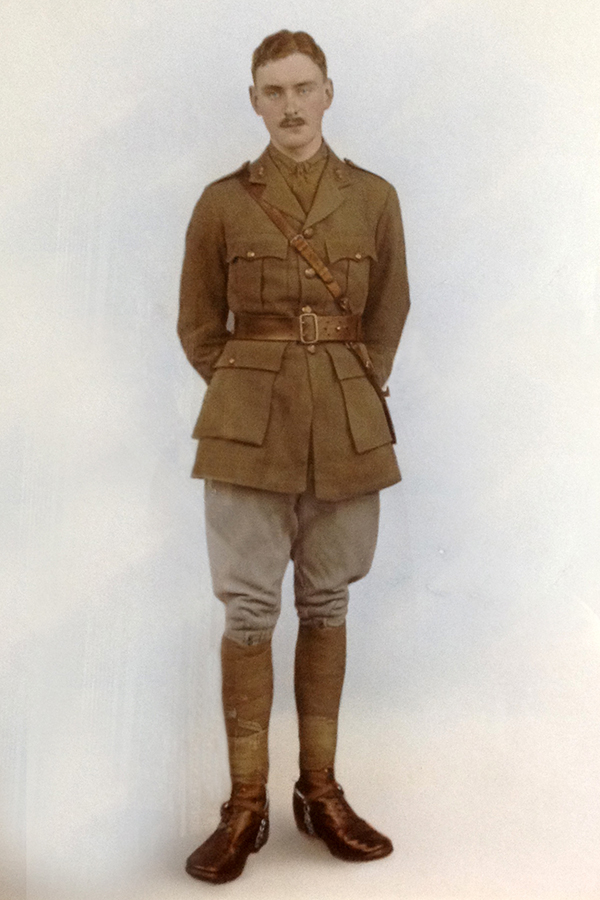
73 Brigade, Royal Field Artillery
Born 29 July 1893 at South Stoneham, Hampshire
Killed in action 18 August 1916, aged 23
Buried at Dantzig Alley British Cemetery, Mametz, France. Also commemorated on the War Cloister at Winchester College; the war memorial in Flexford Road, North Baddesley, Hampshire; on a memorial in St Matthew's Church, Otterbourne, Hampshire; and by a tree planted at the National Memorial Arboretum in Staffordshire.
Thomas Chamberlayne was the younger son of Tankerville James Chamberlayne, MP for Southampton, and his first wife Edith Rachel, née Ashley, of Cranbury Park, near Hursley, Hampshire.
He was educated at Twyford School and Winchester College before coming up to Merton in 1913.
He was gazetted on 6 October 1914, and was wounded at the Battle of Loos, September 1915.
He was killed in action during the Battle of Delville Wood on the Somme on 18 August 1916. His commanding officer wrote:
“His charming personality and courage endeared him to all his comrades, and I, personally, mourn the loss of one of my best officers. I am sure you will always be proud to know that your son died in the execution of his duty, in which he never flinched.”
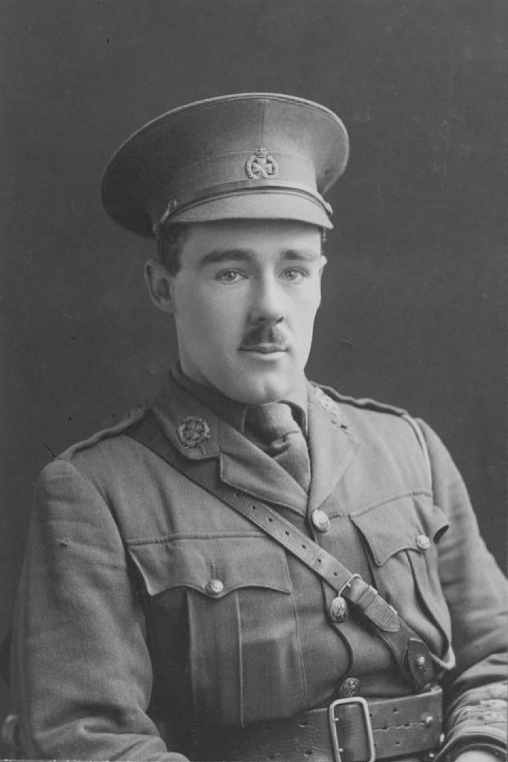
2/5th Battalion, Sherwood Foresters (Nottinghamshire and Derbyshire Regiment)
Born 5 March 1888 in Liverpool
Killed in action 21 March 1918, aged 30
Commemorated on the Arras Memorial, Pas-de-Calais, France. Also commemorated on the war memorial at St Nicholas Church, Hurst, Berkshire; and on a plaque in All Saints Church, Orpington, Kent.
Charles Chenevix Trench was the second son of Revd H. Francis & Isabella Clare Chenevix Trench, of Durwood, Sandhurst, Camberley, Surrey. He married Clare Cecily, née Howard, on 28 January 1915; they had a daughter, Isabel Clare, born 4 November that year.
He was educated at Gore Court School, Tunstall, Kent, and Charterhouse, and graduated from Merton in 1909. After University he worked as a lawyer. Soon after leaving college he joined the Inns of Court Officer Training Corps, rising to the rank of Captain.
At the outbreak of war the OTC relocated to Berkhamsted, and trained recruits. Wanting to see frontline action, Chenevix Trench joined the Sherwood Foresters; however the regiment was then sent to Ireland to quell the 1916 Easter Rising. (His sister, Cesca (Frances Georgiana), was a fervent supporter of the Nationalist cause and was in Ireland at the time; they breakfasted together while Chenevix Trench was on two days’ leave.) He was sent to France on 26 February 1917, and promoted to Major in August.
He was killed in action during the German Spring Offensive, on 21 March 1918. He was wounded twice early on in the fighting but carried on leading his men until he received his final fatal wound. He was carried on a stretcher back to the Battalion headquarters dug-out where he died. He was Mentioned in Dispatches on 7 April.
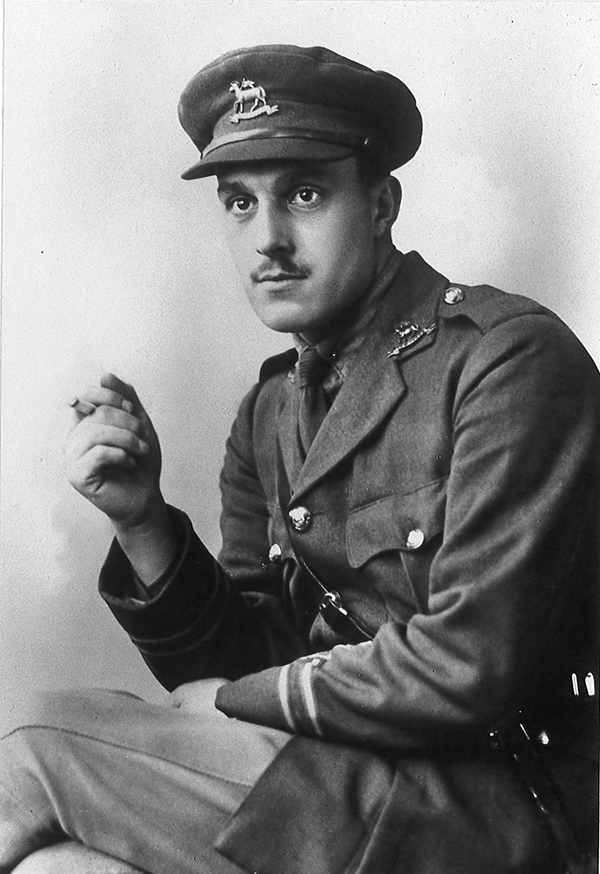
King’s Own (Royal Lancaster Regiment), attached to 6th (Service) Battalion, Queen’s (Royal West Surrey Regiment)
Born 28 October 1885 in Paddington, London
Killed in action 9 April 1917, aged 31
Buried at Faubourg D’Amiens Cemetery, Arras, France. Also commemorated on the war memorial at St John the Baptist Church, Windlesham, Surrey.
Ronald Clerk was the son of John Somervail Clerk and Dora Agnes, née Carew, of Foresters, Windlesham, Surrey.
He was educated at Malvern College, and took his BA at Merton in 1908. He then became Assistant Master at Windlesham School.
In August 1914 he obtained a Commission in the Royal West Surrey Regiment and went with his battalion to the front in June 1915. He was promoted to Captain in July 1915.
Clerk was killed at Arras whilst leading his company into action, on 9 April 1917. His Commanding Officer wrote to his parents:
“Your son was killed on the morning of 9th April to the lasting sorrow of his many friends here. His death was almost instantaneous… His loss will be felt by us all… He played the game until the last dying at the head of his company.”
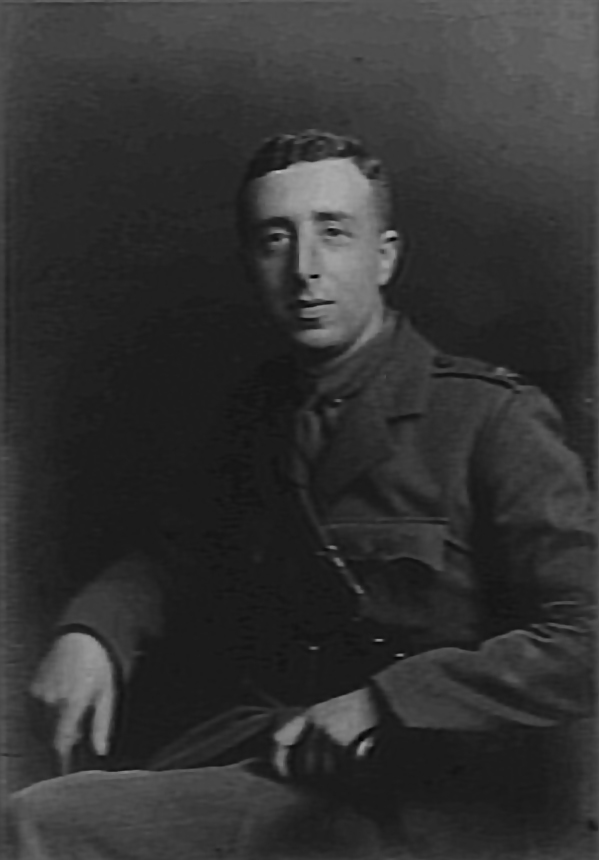
18th (Service) Battalion (Arts & Crafts), King’s Royal Rifle Corps
Born 11 August 1884 in Kensington, London
Killed in action 31 July 1917, aged 32
Commemorated on the Ypres (Menin Gate) Memorial, West Flanders, Belgium.
Charles Coburn was the son of Henry Isaacs Coburn, a lawyer, and Adah Israel, née Montefiore, of 22 Pandora Road, London. He was married to Dorothy Lindo, née Henry, of 50 Canfield Gardens, London.
He attended St Paul’s School and came up to Merton in 1903. He played rugby for his school, the College, and in trial games for the University. He obtained BA and BCL degrees, and became a solicitor in 1909.
Following service in the Metropolitan Special Constabulary, he enlisted in the Inns of Court Officer Training Corps on 30 October 1916, and after passing through one of the Berkhamsted Cadet Schools obtained a temporary commission in the King’s Royal Rifle Corps on 26 April 1917.
He went to France to join his Battalion in Flanders, and saw action for the first time at the Battle of Messines on 7 June; a week later he took part in the successful attack on ‘Olive Trench’. At 3:50am on 31 July he led his men into action near the village of Hollebeke; he was killed later that morning during an assault on a farm.
The adjutant of his Battalion wrote:
"During the short time he was with us he showed himself to be a gallant, reliable, and devoted officer."
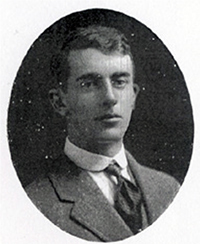
1/7th Battalion, Argyll & Sutherland Highlanders
Born 12 April 1892
Died of wounds 1 May 1917, aged 25
Buried at Wimereux Communal Cemetery, Pas-de-Calais, France. Also commemorated on the Tillicoultry war memorial.
James Conn was the only son of Reverend Joseph Conn and Christina, née Caldwell, of The Manse, Tillicoultry, Clackmannanshire.
He was educated at Cargilfield and Fettes College before matriculating at Merton in 1911.
He enlisted on 5 October 1914 as a Second Lieutenant, and went to France in May 1915, where he was severely wounded in the shoulder and gassed, only returning to the front in early 1917.
Wounded in action on 23 April 1917, he died at Wimereux eight days later; his promotion to Captain was posthumous. His father died just over two years later. A window in Tillicoultry Parish Church was given in memory of them both by Mrs Conn.
173 Brigade, Royal Field Artillery
Born in 1897 in Steyning, Sussex
Killed in action 2 July 1917, aged 20 or 21
Buried in Lone Tree Cemetery, Mesen, West Flanders, Belgium. Also commemorated on the Southam and Bishops Cleeve war memorials, Gloucestershire; on Blundell’s School war memorial; and on his grandparents’ grave in Retford Cemetery, Nottinghamshire.
Frederick Coupland-Smith was the only child of Frederic Geoffrey Coupland-Smith & Ida Mary, née Ruffell of The Slades, Cleeve Hill, Cheltenham.
He was educated at Ayshford School, Uffculme, and at Blundell’s School, Tiverton, where he was a member of the choir. He left the school prematurely to accompany his parents to the Holy Land and Egypt in the summer of 1913.
Before he could matriculate he enlisted, on 10 September 1914, and was commissioned as a Second Lieutenant in the Royal Field Artillery a month later, seeing service in the Dardanelles, Egypt (in 1915), Serbia, France & Belgium.
A day after being made an Acting Lieutenant, he was killed in action at Wytschaete during the Third Battle of Ypres (Passchendaele) on 2 July 1917.
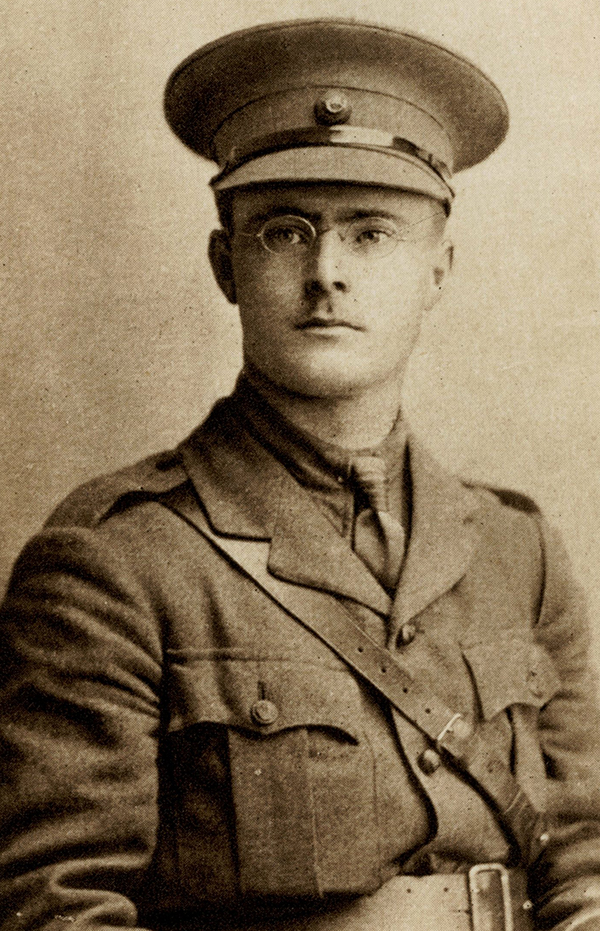
6th (Reserve) Battalion, King's Royal Rifle Corps
Born 15 August 1895 on the Isle of Wight
Killed in action 10 March, 1915, aged 19
Commemorated on Le Touret Memorial, Pas-de-Calais, France. Also commemorated on the War Cloister at Winchester College.
Fritz Crawhall was born at Ryde on the Isle of Wight. He was the son of Revd Edmund Isaac Laroche Crawhall and Isabella Duncan, née Grant, of Herriard, Basingstoke.
He was educated at Carter’s School, Maidenhead, and Winchester College. In 1914 he was elected to a Scholarship at Merton College.
At the outbreak of war he was in camp on Salisbury Plain with the Winchester Officer Training Corps, in which he held the rank of Colour-Sergeant. On 15 August 1914 he obtained his commission in the King’s Royal Rifle Corps.
He fell in action at Givenchy-lès-la-Bassée on 10 March 1915, during the Battle of Neuve Chapelle. He was seen to fall in a German trench but his body was never recovered.
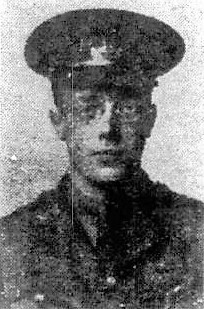
1st Battalion, attached to 10th (Service) Battalion (Bristol), Gloucestershire Regiment
Born 10 September 1893 at Wheatley, Yorkshire
Died of wounds received in action 15 May 1917, aged 23
Buried at Lapugnoy Military Cemetery, Pas-de-Calais, France.
Karl Culpin, also known as Charles, was the elder son of Henry Culpin, chief accountant at the Great Northern Railway Plant Works, and a founding member and first curator of the Doncaster Museum, and Johanna, née Staengel, of Doncaster.
He was educated at Doncaster Grammar School, where he captained the 2nd XI Football team and the swimming club, was secretary of the rifle club, and served as joint editor of the school magazine, Danensis. At Merton he took a first class degree in Modern History in 1915. He then went to Sherborne School as a temporary master. While at Oxford he became one of TS Eliot’s closest friends – Eliot called him “the most intelligent of the Englishmen at Merton”. The New Zealander Robert Sencourt, Eliot’s first biographer, described their relationship:
“As soon as Tom and Karl started talking to each other, each knew that he had found an ideal companion. The Yorkshireman’s brain was brilliant enough to keep pace with the American’s, and this exercise was the more stimulating because it was not centred on philosophy or literature but history and economics.”
Culpin was a temporary Master at Sherborne School, teaching mathematics, geography and history, between September 1915 and April 1916, when he was called up and commissioned as Second Lieutenant, despite his poor eyesight.
He died near Bethune on 15 May 1917 of wounds received in action near Fresnois, north-east of Arras six days earlier.
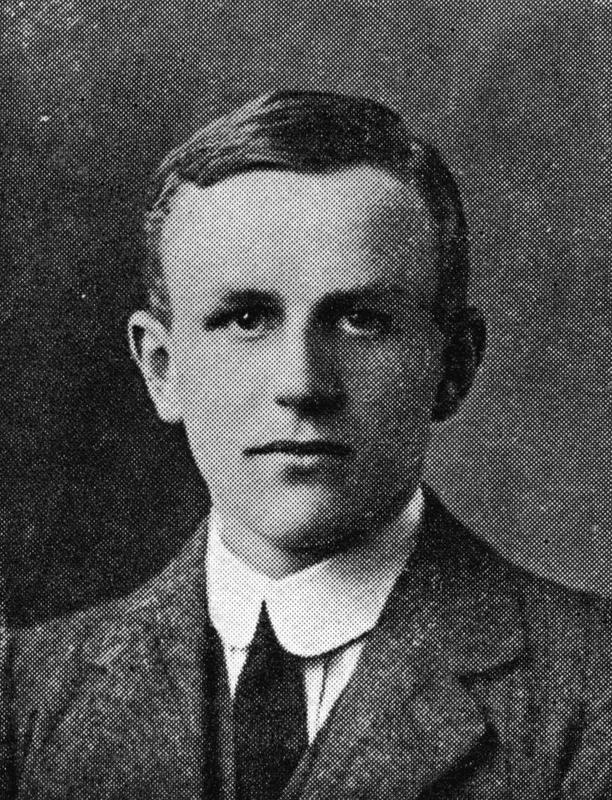
2nd Battalion, Highland Light Infantry
Born 28 February 1892
Killed in action 16 November 1914, aged 22
Commemorated on the Ypres (Menin Gate) Memorial, West Flanders, Belgium. Also commemorated on a stained glass window in Hillside Church, near Montrose, Scotland; the Cargilfield School war memorial; and the Fettes College war memorial.
Alan Dickson was born in Laurencekirk, the youngest son of Patrick Dickson and RI Dickson of Sunnyside House, Montrose.
He was educated at Cargilfield School, and Fettes College, Edinburgh. He matriculated at Merton in 1911, taking his BA in July 1914.
He received his commission as Second Lieutenant in the University Officer Training Corps in July 1914, and was ordered to the front at the outbreak of war.
He was killed in action near Zonnebeke on 16 November 1914, shortly after having been promoted to Lieutenant. (His date of death is sometimes given as 14 November.)
3rd Southern General Hospital, Royal Army Medical Corps
Born 1878 in Headington, Oxfordshire
Died 2 November 1918, aged 40
Buried at Botley Cemetery, Oxford.
Horace Dines was the son of Edward Dines and Maria, née Alder, and the husband of Elizabeth Harriet, née Alder. They had one son, Jack Edward and two daughters, Kathleen Norah and Roslyn Mary.
Horace enlisted on 21 June 1915. At the time he was living at 24 Milton Road, Archway Road, Highgate, London. He served in the RAMC as an orderly.
Horace was admitted to hospital in Oxford with influenza and pneumonia, and died on 2 November 1918.
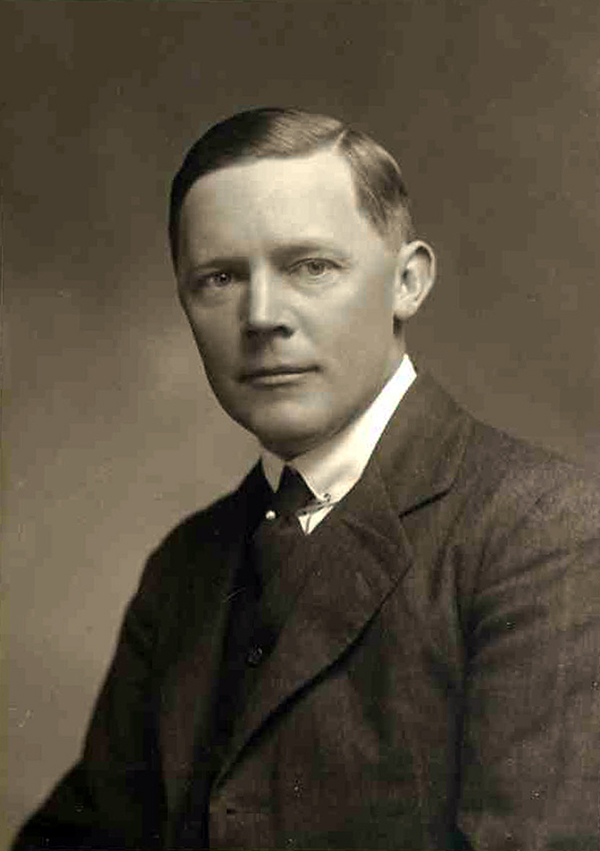
10th (Service) Battalion, Yorkshire Regiment
Born 12 September 1876 in Kingsbridge, Devon
Died of wounds received in action 18 December 1915, aged 39
Buried at Bailleul Communal Cemetery Extension, France; also commemorated on the Gray’s Inn war memorial, London, the Radley College war memorial, and on the Shanghai Race Club war memorial, China.
John Douglas was the son of Admiral Sir Archibald Lucius Douglas, GCB, GCVO, and Lady Douglas, née Constance Ellen Hawkes.
He was educated at Radley College and matriculated at Merton in 1895, taking an Honours degree in Jurisprudence four years later.
He was called to the Bar at Gray’s Inn on 27 June 1900, and before the war worked as a barrister, coroner, and acting judge in Shanghai and Singapore. He wrote a biography of his father, which was later published in 1938.
On 16 October 1914, having unsuccessfully tried to witness the Japanese capture of the German colony at Tsingtau (Qingdao), Douglas boarded the SS Suwa Maru, making its maiden voyage from Yokohama to London, one of 110 men under the command of Captain Alan Hilton-Johnson who were heading to England to join Lord Kitchener’s ‘New Army’ of civilian volunteers.
Arriving in England, he joined the Yorkshire Regiment, and after training was sent to the Western Front, seeing service at the Battle of Loos.
He was shot through the neck whilst out inspecting wiring, and died of his wounds on 18 December 1915.
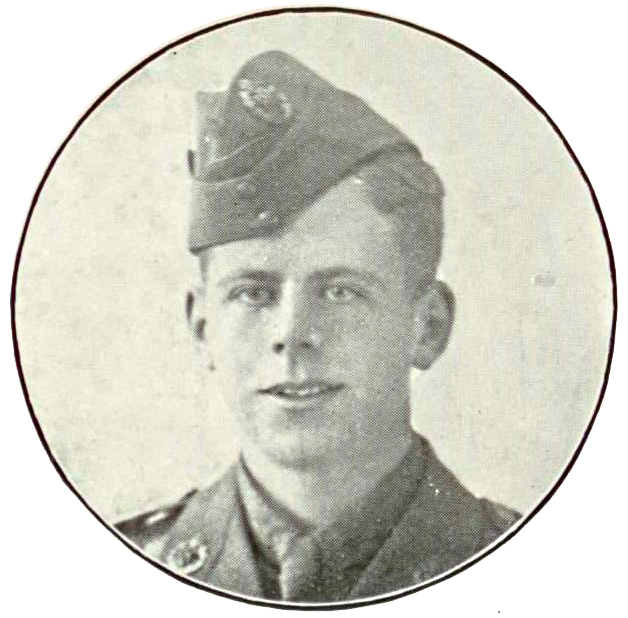
59 Squadron, Royal Air Force
Born 15 March 1899 in Brentford, West London
Killed in action 8 October 1918, aged 19
Commemorated on the Arras Flying Services Memorial, Pas-de-Calais, France.
John Drummond was the son of John Andrew Blake Drummond and Eda Veronica Mary, née Schenkenwald, of “Elmthorpe”, Bexley Road, Eltham, London.
He was educated at Christ’s Hospital, and elected to a Postmastership in 1917, but did not matriculate.
He enlisted on 5 January 1918 as a Second Lieutenant in the RAF.
He was killed in action while flying in a Royal Aircraft Factory RE8, number E229, on 8 October 1918, along with his observer, Second Lieutenant Percy Chavasse.
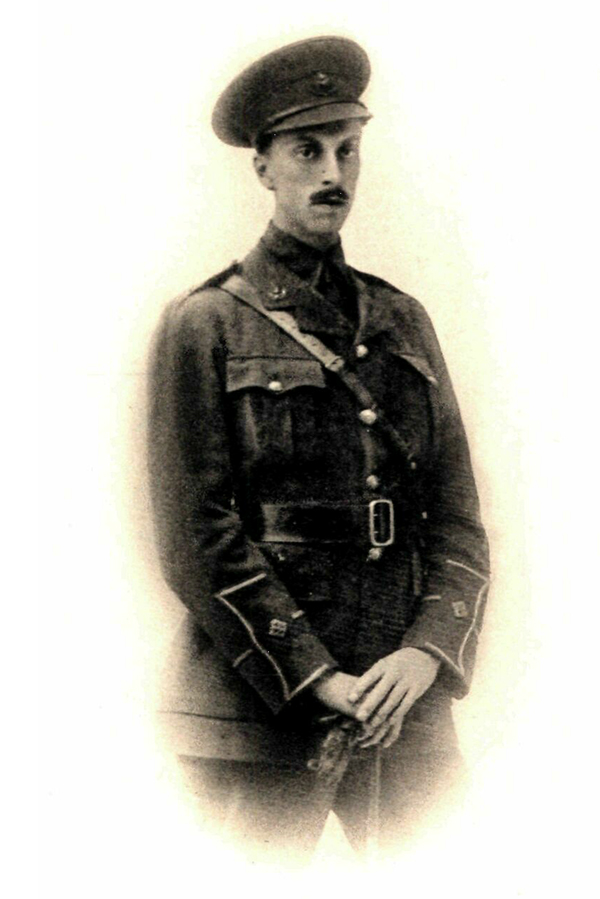
11th (Service) Battalion, Cheshire Regiment
Born 19 April 1889 at Kendal, Cumbria
Killed in action 4 July 1916, aged 27
Commemorated on the Thiepval Memorial, Somme, France.
Launcelot Dunlop was the second son of Arthur Brook Dunlop and Emily Smith, née Pollard, of The Howe, Troutbeck, Windermere.
He was educated at Rugby School, and after some years in business he came up to Merton early in 1914.
When war broke out he immediately offered himself for service and was given a commission in the Cheshire Regiment in March 1915. He went to the front in France in February 1916.
He took part in the attack on Vimy Ridge, and in the Battle of the Somme, in which he was killed in action at Thiepval, on 4 July 1916.
A brother officer wrote:
“He was much loved and respected by the officers and men of his Battalion. I have often heard the Colonel and his Company Commander, both of whom were killed, express very high opinions of the work he did in the trenches. When we were at Vimy Ridge, he carried out several daring and useful patrols, for which he was highly commended by the Colonel. The men of his Platoon would have done anything for him, and he was untiring in looking after their welfare.”
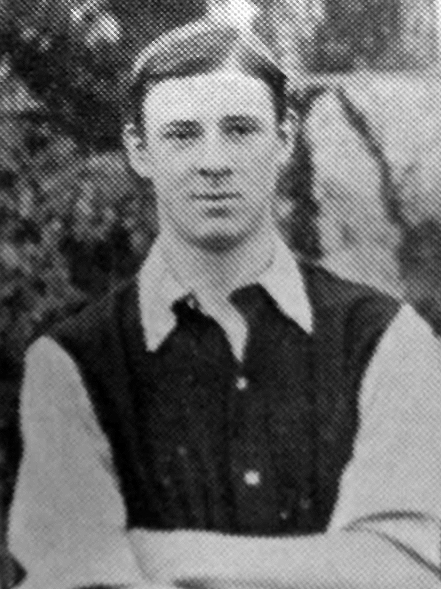
5th (Reserve) Battalion, attached to 3rd Battalion, Rifle Brigade
Born 22 March 1890 in Dalhousie, India
Killed in action 1 September 1916, aged 26
Buried at Delville Wood Cemetery, Longueval, Somme, France. Also commemorated on the Gray’s Inn, London, and Woodbridge School war memorials.
Arthur Dunnage was the elder son of Colonel Arthur James Dunnage of Woodbridge, Suffolk. He married Evelyn Mary Lewis on 14 September 1915; his son, Arthur John Dunnage, was born on 28 January 1916.
He was educated at Fauconberge and Woodbridge Schools from 1906 to 1909, and represented the latter at football. He made a few appearances for Woodbridge Town FC during the 1908/09 season; he made his debut for the club aged 18 on 9 January 1909, playing at centre forward in a 4-0 victory over Ipswich St Matthews.
He matriculated at Merton in 1909, taking a BA in 1913.
At the outbreak of war in August 1914, whilst working as a schoolmaster in East Dulwich, he enlisted in the 18th (Service) Battalion (1st Public Schools) of the Royal Fusiliers, and was given a commission in the Special Reserve Rifle Brigade on 8 May 1915.
He went to the front in November 1915, and was killed leading the second line of his company into action at Delville Wood on 1 September 1916.
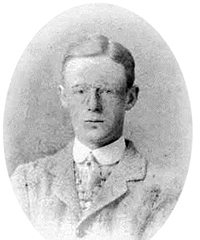
14th (Service) Battalion, attached to 19th (Service) Battalion, King’s (Liverpool Regiment)
Born 7 November 1892 in Harrogate, Yorkshire
Killed in action 30 July 1916, aged 23
Commemorated on the Thiepval Memorial, Somme, France. Also commemorated on Ilkley, Eastbourne and Eastbourne College war memorials.
Tom Eddison was the son of Joseph Cooper Eddison and Florence, née Scholes, of “Dorus More”, Meads, Eastbourne, Sussex.
He was educated at Charney Hall prep school, Grange-over-Sands, and at Eastbourne College, and came up to Merton in 1911, taking second class honours in Law in 1914.
He enlisted in the Public Schools Brigade on 1 September 1914, and obtained his commission in November. He went to the front in February 1916.
He was killed in Arrow Head Copse, Trônes Wood on the Somme on 30 July 1916, while leading his platoon into action.
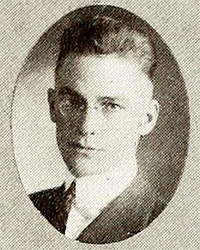
San Francisco Base Hospital Unit, No. 49
Born 5 October 1895
Died 2 January 1918, aged 22
Buried in Mountain View Cemetery, 435 Stoker Avenue, Reno, Nevada, USA.
Thomas Edsall was born in Cripple Creek, Colorado, the son of Burroughs and Josephine Edsall. The family moved to Reno, Nevada when he was 8.
He studied at the University of Nevada, where he was a track man, class president and class debater, honor student, and a member of the Sigma Alpha Epsilon Fraternity. He passed the Rhodes Scholarship examination in 1917 but never had the opportunity to go to Merton.
In July 1917 he volunteered his services in the San Francisco Base Hospital Unit, No. 49 and was called to the unit in December. At the time he was seriously ill with sarcoma of the hip in Mount Zion Hospital, San Francisco and could not respond. He died without seeing active service, but was still buried with full military honours.
Brigade-Ersatz-Bataillon 21
Born 18 June 1880
Killed in action 9 September 1914, aged 34
Burial site unknown.
Theodor Erbe was the son of H Erbe of Wettmar. He was married in 1907.
He studied at the Gymnasium, Hildesheim, and at the University of Göttingen where he took a PhD in English Philology in 1903. The same year, he published ‘Mirk’s Festial’, a collection of homilies by Johannes Mirkus. He read English at Merton as a Rhodes Scholar; he was one of two Rhodes Scholars admitted in the first year of the scheme. From 1907 until the outbreak of the war, he taught English in Berlin and Buenos Aires.
He was one of two German Mertonians killed in the war; he died fighting the Russians on the Eastern Front. (Many German Rhodes Scholars did not wish to fight the British.)
1st/4th Battalion, Oxfordshire & Buckinghamshire Light Infantry
Born 1897 in Headington, Oxford
Died 15 June 1918, aged 21
Buried at Boscon British Cemetery, Italy
Alfred Gordon Faulkner was the son of Mr. W. and Mrs. Mary Ann Faulkner, of Ludgershall, Bucks. He died on 15 June 1918, aged 21, and is buried at Boscon British Cemetery, Italy.
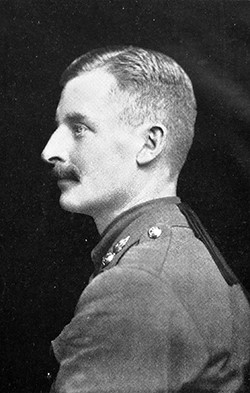
9th (Service) Battalion, attached to 7th (Merioneth and Montgomery) Battalion, Royal Welch Fusiliers
Born 19 September 1889 in Maidstone, Kent
Died of wounds received in action 26 March 1917, aged 27
Commemorated on the Jerusalem Memorial, Israel/Palestine. Also commemorated on a wayside cross at the junction of North St and North Pole Rd, Barming, Kent; and on the war memorial plaque at All Saints Church, West Farleigh, Kent.
Horace Fletcher was the youngest son of Lionel John William Fletcher and Eleanor Mary Agnes, née Stopford-Sackville, of “Elmscroft”, West Farleigh, Maidstone, Kent.
He was educated at Eton College and gained a Postmastership at Merton, taking his degree in 1912. The same year, in preparation for taking holy orders, he became a resident at Oxford House, Bethnal Green, in east London.
He enlisted in the Royal Naval Division in September 1914 and was gazetted on 21 December, and served with the Mediterranean Expeditionary Force at Gallipoli and in Egypt & Palestine.
He died on 26 March 1917 of wounds received in action at the 1st Battle of Gaza. He had been hit by a sniper while talking to some German prisoners.
In a letter to his mother from Egypt in early 1916 he wrote:
“Do you think that the experience of this war has made the general public realize that there must be other ways of settling points of dispute which are as satisfactory as the way of bloodshed?”
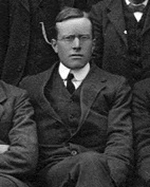
23rd Brigade, Royal Artillery
Born 26 December 1881 in Dorchester, Dorset
Killed in action 17 April 1917, aged 35
Buried in Anzin-St Aubin British Cemetery, Pas-de-Calais, France. Also commemorated on the Cheadle Hulme Memorial (as T C Fry); on a plaque at Manchester Grammar School; and on the war memorial at St Mary’s Church, Litton Cheney, Dorset.
Charles Fry was the son of Thomas and Anna Fry of “Baglake”, Litton Cheney, Dorset. He was married to Hilda Sophie, née Watson, on 4 September 1916.
He attended Dover College 1895-1901, where he was head prefect in his final year. Whilst at Merton he was President of the Boat Club in 1903/4.
In 1906, he became an Assistant Classics Master at Manchester Grammar School, and set up the school’s rowing club.
On the outbreak of war he applied to become an officer with the Public Schools’ Battalion, returning to Manchester to work with the school’s Officer Training Corps. Gazetted to the Royal Field Artillery, he left for France in 1915.
He was killed on 17 April 1917, along with three other members of his gun team, by a direct hit during a bombardment near the village of Athies, on the outskirts of Arras.
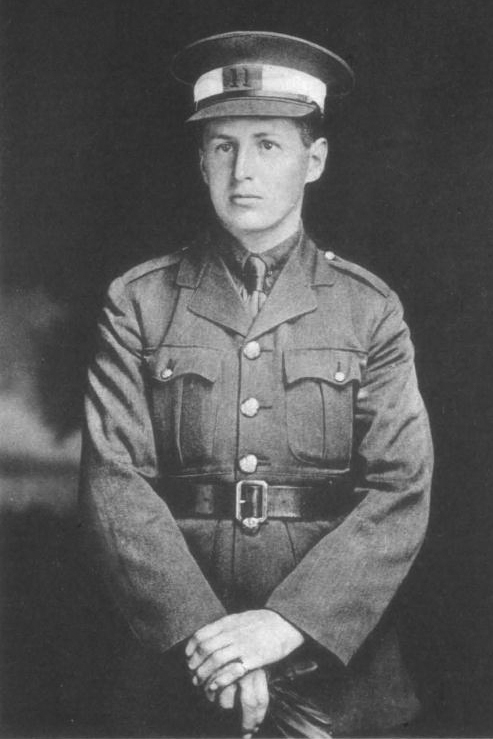
1st Battalion, Dorsetshire Regiment, attached to 206th (Glasgow) Field Company, Royal Engineers
Born 10 July 1882 in Toxteth, Liverpool
Died of wounds 15 May 1918, aged 35
Buried at Bagneux British Cemetery, Gézaincourt, Somme, France. Also commemorated on the Bushey war memorial, Hertfordshire.
Henry Gair was the son of Walter Burgh Gair and Elizabeth, née Jevons. In 1911 he married Mary Dorothea Moultrie, née Coleridge, of 110 Goldhurst Terrace, Hampstead, London.
He was educated privately and at Rugby School before coming up to Merton in 1902. Before the war he was on the staff of Baring Brothers in their Liverpool and London offices; his father was a Managing Director of the company.
He joined the Inns of Court Officer Training Corps in November 1916, and was gazetted to the 4th Battalion, Dorsetshire Regiment, in October the following year. In April 1918 he was sent to France as part of the 1st Battalion, and on 5 May was attached to the 206th Field Company of the Royal Engineers.
On the night of 13/14 May 1918 he was in charge of a wiring party near Bretencourt Mill, Pas de Calais. In delivering a message, which he had elected to take himself rather than send someone else, he was wounded; he died on 15 May in the Officers' Hospital, No 3 Casualty Clearing Station at Gézaincourt.
The Headmaster of Rugby wrote:
“Through all his career his gentleness and simple modesty were clear to all, but only those who knew him best could fully appreciate the courage and loyalty which made of life a true success and of his death an example of self-sacrifice worthy of our best.”
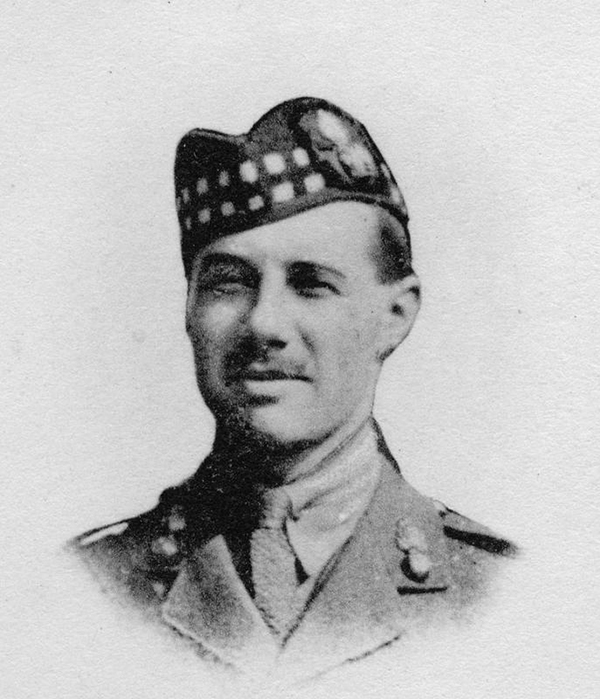
1st Battalion, Royal Scots Fusiliers
Born 21 June 1897
Missing, presumed killed in action, 13 November 1916, aged 19
Commemorated on the Thiepval Memorial, Somme, France. Also commemorated by an oak and ebony lectern at Lesmahagow Old Parish Church.
Halliday Gillies was the son of Revd James Gillies and Helen, née Halliday, of The Manse, Lesmahagow, Lanarkshire, Scotland. His father was later the senior chaplain to the Egyptian Expeditionary Force in 1916.
He was educated at Edinburgh Academy and Eton College, and elected to a Chambers Postmastership in 1916.
He entered the Royal Military College, Sandhurst, on 18 July 1916, and went on to serve in France.
He was posted as missing, presumed killed in action at Serre, on 13 November 1916, one of 201 casualties the battalion suffered that day.
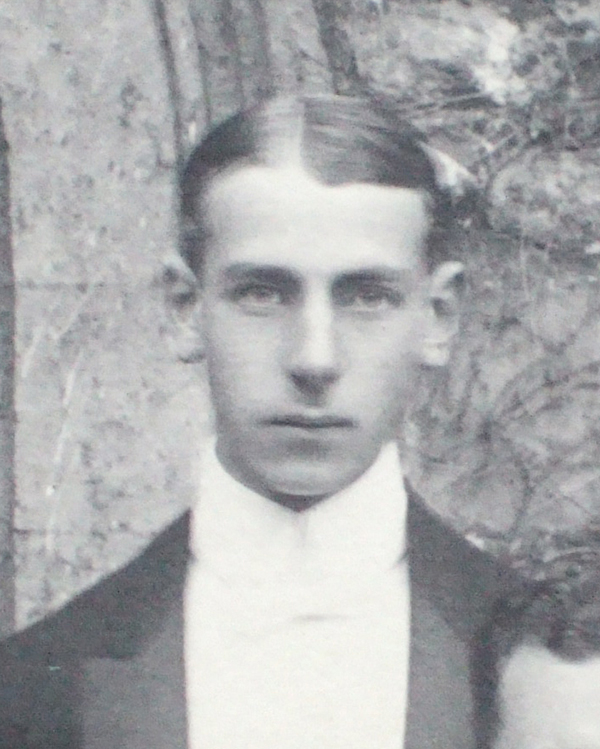
3rd (Reserve) Battalion, Wiltshire Regiment
Born 23 March 1886 in Mansfield, Nottinghamshire
Died 22 November 1917, aged 31
Buried in Bathwick (St. Mary the Virgin) Churchyard, Somerset. Also commemorated on a plaque in St Andrew’s Church, Charmouth, Dorset.
Charles Hales was the elder son of Major-General Arthur Hales of the Royal Inniskilling Fusiliers, Commandant of the Straits Settlements, and Maria Frances, née Hoare.
He was educated at Sedbergh School, where he excelled on the firing range, being a marksman of the School’s Rifle Corps in 1904. He also participated in the school’s Debating Society, speaking on motions that ‘A knowledge of Greek is essential to good education’ and ‘Ghosts are to some extent real’. Whilst at Merton he took part in the 1907 Henley Regatta.
He was gazetted on 2 December 1914, but was later forced by ill health to relinquish his command, on 19 April 1916.
He died of illness contracted on active service, on 22 November 1917.
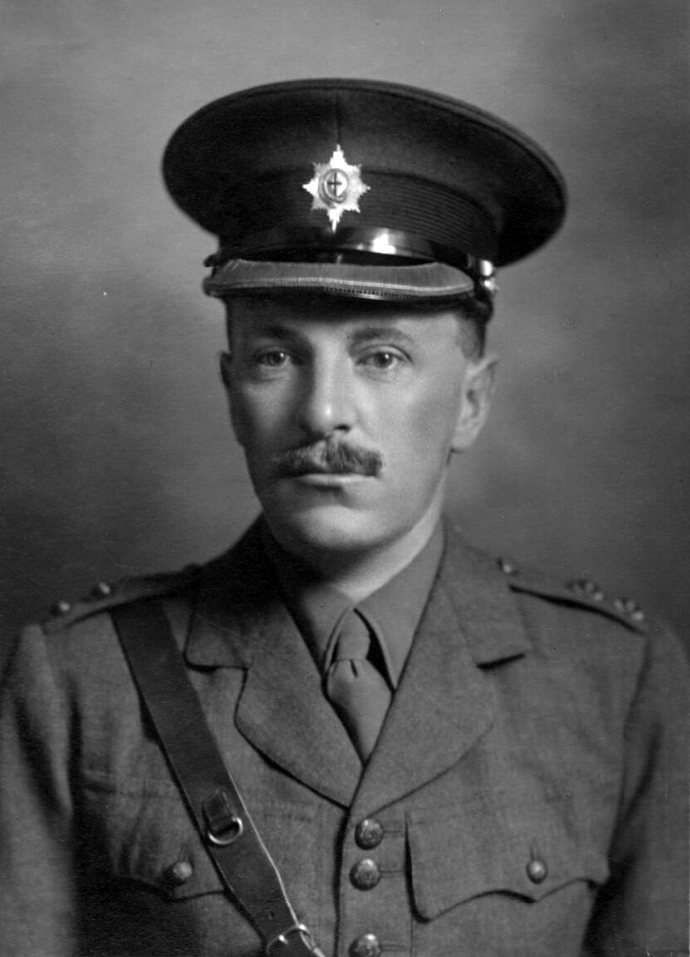
4th Battalion (Pioneers), attached to 3rd Battalion, Coldstream Guards
Born 25 September 1881 in Fulham, London
Died of wounds received in action 1 August 1917, aged 35
Buried at Dozinghem Military Cemetery, West Flanders, Belgium.
Guy Hardy was the only son of Ernest Meredith Hardy and Edith Annie, née Andrews, of 28 Harcourt Terrace, Redcliffe Square, London.
He was educated privately before matriculating at Merton in 1901. Whilst up at Oxford he played cricket for the College XI and the Oxford University Authentics. He was a member of the MCC from 1911 onwards.
Following a serious operation and a period of convalescence, he was finally permitted to accept a commission, and was gazetted Second Lieutenant on 13 April 1915. He was sent to the Western Front in August 1916, and was slightly wounded in early July 1917, but remained on duty.
He died at No.4 Casualty Clearing Station, of wounds received in action during the 3rd Battle of the Somme (Passchendaele), on 1 August 1917.
2/4th Battalion, Somerset Light Infantry
Born 26 December 1871 in Bath
Died 15 July 1918, aged 46
Buried at Ocklynge Cemetery, Eastbourne, Sussex. Commemorated on the Somerset Light Infantry Memorial in Bath Abbey, Somerset.
Edward Harford was the only son of Revd Canon Edward John Harford and Gertrude Emma, née Bridges. His father was Canon of Wells Cathedral. He was married in June 1906 to Violet Audley, née Gore Little; they had two sons.
He was awarded the Queen’s South Africa Medal, given to military personnel who served in the Boer War, 1899-1902, with 5 bars.
He joined up in September 1914, and on 21 April 1917 his temporary captaincy was confirmed. He served in India and Palestine.
In November 1917 he was wounded at Gaza. He was invalided home, and died at Eastbourne on 15 July 1918.
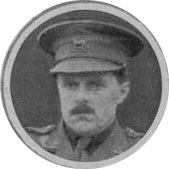
3rd (Reserve) Battalion, attached to 2nd Battalion, Leicestershire Regiment
Born 27 April 1877 in Kensington, London
Died 23 May 1915, aged 38
Buried at Boulogne Eastern Cemetery, Pas-de-Calais, France.
Christopher Harrison was the youngest of the four sons of Frederic Harrison and his first cousin Ethel Bertha, née Harrison, of 10 Royal Crescent, Bath. His mother was a positivist and an essayist, and she and her husband were prominent opponents of women's suffrage.
He was educated at Clifton College, and came up to Merton in 1895.
Harrison worked as an architect before the war in England and then in Argentina, and was a member of the Royal Institute of British Architects.
He returned to England to enlist and was commissioned as a Second Lieutenant on 16 September 1914.
He died on 23 May 1915, of wounds received whilst carrying out a night attack on 15 May, during the Battle of Festubert. His father was at his bedside when he died.
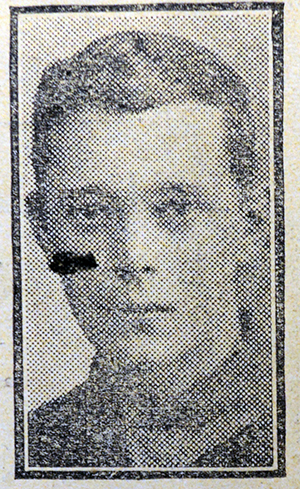
20th (Service) Battalion (3rd Public Schools), Royal Fusiliers (City of London Regiment)
Born 25 January 1896 in Bolton, Lancashire
Killed in action 20 July 1916, aged 20
Commemorated on the Thiepval Memorial, Somme, France.
Walter Harrison was the second son of Revd Frank Wesley Harrison and Louisa, née Allen, of Patricroft, Manchester.
He was educated at Kingswood School, Bath, and won an open Classical Exhibition to Merton.
He enlisted in the Public Schools Battalion of the Royal Fusiliers from the Oxford University Officer Training Corps in July 1915, and went to France in November.
He was killed in action by shell fire in the early morning of 20 July 1916, during an attack on the Foureaux Wood on the Somme, and buried near High Wood in an unmarked grave.
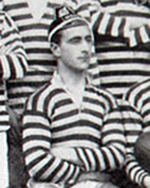
3rd (Reserve) Battalion, attached to 10th (Service) Battalion, Royal Warwickshire Regiment
Born 27th December 1892 in Northern Rhodesia
Killed in action 30th July 1916, aged 23
Buried at the London Cemetery and Extension, Longueval, Somme, France.
Richard Hart was the son of Frank Eden Hart and Amy Hart of 205, Uchi St, North Kana, Northern Rhodesia.
He was educated at Warwick School, where he played in the 1912-13 Rugby XV, and came to Merton as a Rhodes Scholar in 1913 to read Chemistry.
He joined up in September 1914 and was sent to France.
He was killed in action on 30 July 1916, during an attack on Intermediate Trench, near High Wood (North of Bazentin-le-Petit).
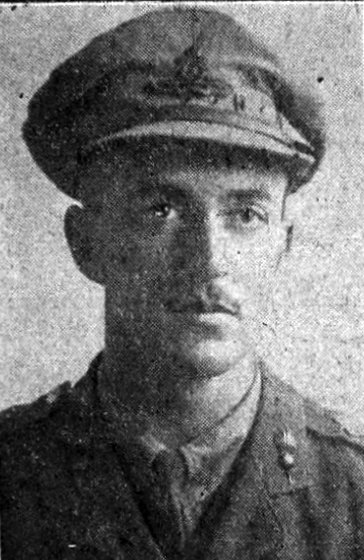
210 (1st East Lancashire) Brigade, Royal Field Artillery
Born 22 August 1886 in Burnley, Lancashire
Killed in action 1 September 1917, aged 31
Buried at Ypres Reservoir Cemetery, West Flanders, Belgium.
Christopher Hartley was the elder son of William Harry Hartley, Registrar of the Burnley County Court, and Gertrude, née Ecroyd, of Burnley, Lancashire. He was married, just before leaving for Egypt, to Dorothy Chernocke, née Downes, of Aspley Guise, Bedfordshire – she too travelled to Egypt to do Voluntary Aid Detachment hospital work. His brother was also killed in the war, in May 1918.
He was educated at St Aubyn’s School, Rottingdean, and Harrow School, and came up to Merton in 1905. After taking his degree in 1908, he qualified as a solicitor, joining the firm of Hartley & Pilgrim in Colne, and lived at ‘Hoarstones’ in Fence, Lancashire.
He was given a commission on 26 August 1914, and sailed for Egypt in May 1915, where he served on the Suez Canal, in the desert, and as far as the borders of Sinai and Palestine until February 1917, when he was sent to France and Belgium.
He was killed in action by the bursting of a shell, a few miles east of Ypres, on 1 September 1917. His younger brother, Edmund, was killed the following May.
A fellow officer wrote:
"Everyone out here who knew Christopher Hartley thought the world of him. He did not know what fear was."
Biographical details reproduced with kind permission from the Keepers and Governors of Harrow School.
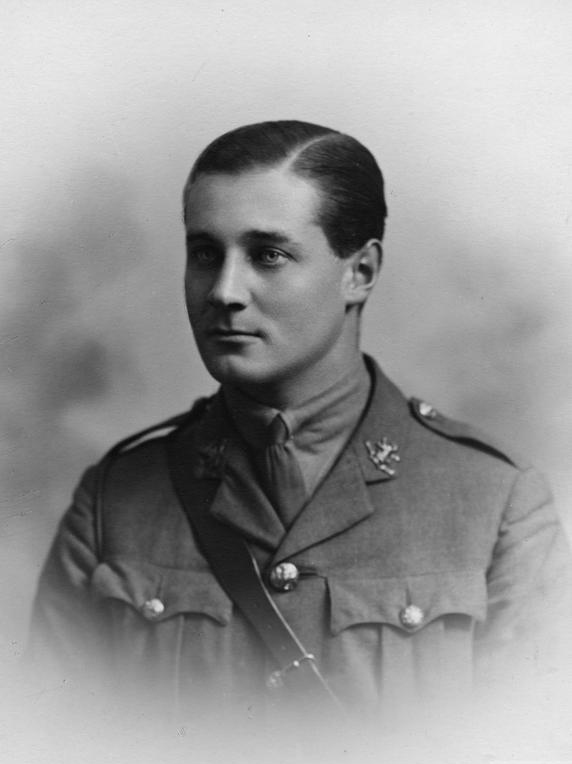
7th (Princess Royal’s) Dragoon Guards, attached to The Machine Gun Corps
Born 1 July 1890 in Whitchurch, Shropshire
Killed in action 14 July 1916, aged 26
Commemorated on the Thiepval Memorial, Somme, France; and on the Billesdon war memorial, Leicestershire.
D’Arcy Hartley was the second son of John D’Arcy Hartley and Isabel, née Manley, of Billesdon Coplow, Leicestershire.
He was educated at Stonyhurst College, and at Eton College before matriculating at Merton in 1910. Whilst at Oxford he represented Oxford against Cambridge in the long jump at Queen’s Club in 1911 and 1912—winning the event in the former year with a jump of 21 feet 5 inches—as well as competing against teams from Yale and Harvard.
He joined up in September 1914, was made a Lieutenant on 24 December 1914, and served in France.
He was killed in action at the battle of Bazentin Ridge, during the first phase of the Battle of the Somme, on 14 July 1916.
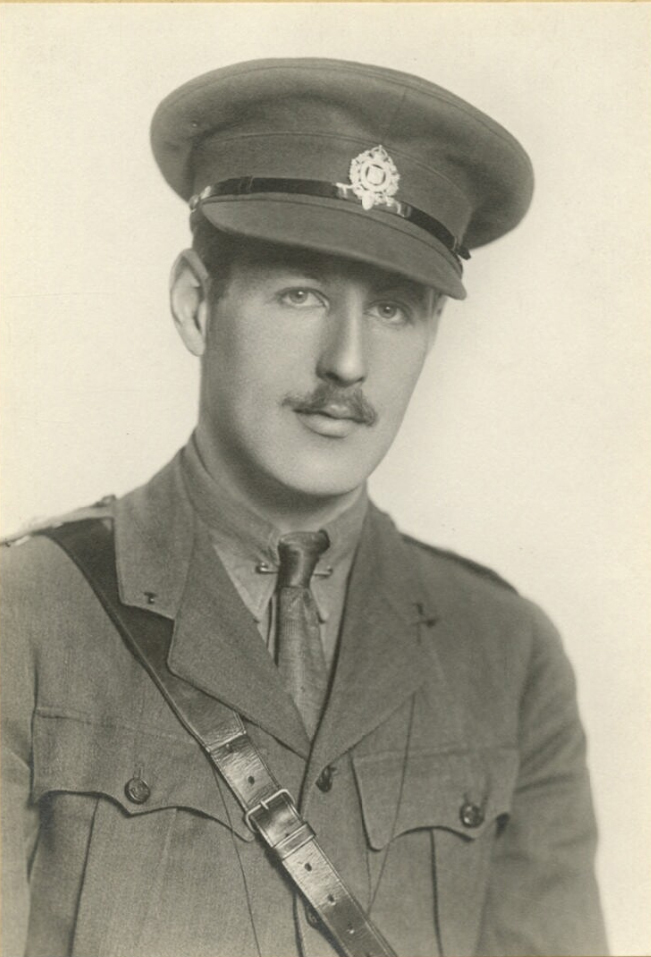
28th (County of London) Battalion (Artist's Rifles), London Regiment
Born 4 June 1891
Died 28 November 1922, aged 31
Eric Higham was the son of DE Higham and Emmie, née Isaac, of Addlestone, Surrey.
He was educated at Eton College.
He enlisted on 4 September 1914, was made a Second Lieutenant on 16th January 1915, and served in France. He was wounded in battle, in Belgium, on 21 September 1917.
He survived the war, but on 8 July 1919 he relinquished his commission on account of ill-health caused by his wounds. He died on 28 November 1922.
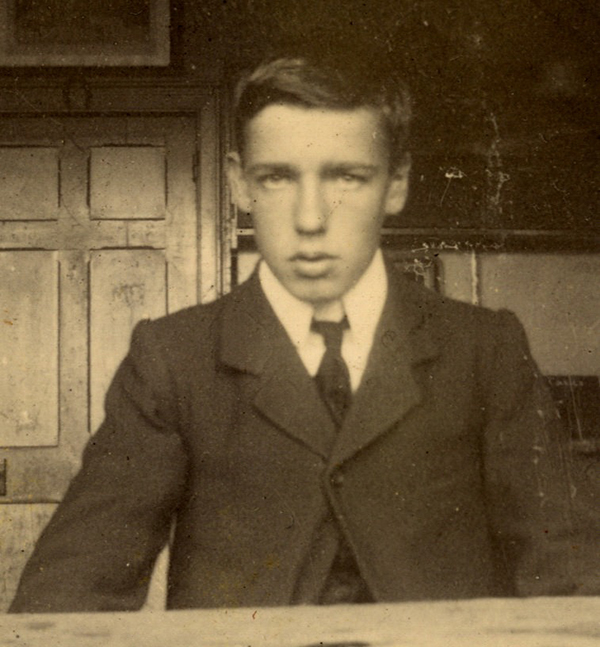
1/1st Battalion, Cambridgeshire Regiment
Born 4 February 1884 in Tottenham, London
Died of wounds 31 July 1917, aged 33
Buried at White House Cemetery, St. Jean-Les-Ypres, West Flanders, Belgium; also commemorated on the Peterborough war memorial.
Robert Hill was the son of John Cathles (or Cathels) Hill and Matilda, née Mose, of Highgate, London. He was married to Marjorie Jane, née Scott-Miller; their son and two of their nephews, as well as Robert’s brother, were all at Merton.
He was educated at Felsted School, where he was a keen athlete, and took his BA at Merton in 1906 and his MA in 1909. After university he began a career as an estate agent in North London.
Having served as a Lieutenant in the 4th (Hunts) Volunteer Battalion, The Bedfordshire Regiment, he was made a Second Lieutenant in the Cambridgeshire Regiment on 11 August 1915, and served in France and Belgium.
He died of wounds received in the attack on Hill 19, near St Julien, on 31 July 1917. His headstone has his rank as Captain.
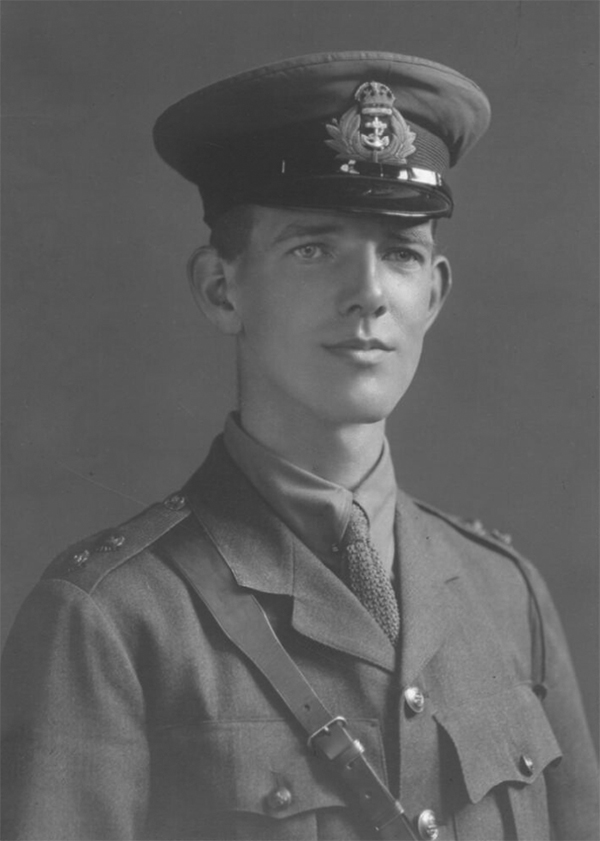
Royal Naval Volunteer Reserve; 8th (Anson) Battalion, 63rd (Royal Naval) Division
Born 6 April 1889 in Carlisle
Killed in action 13 November 1916, aged 27
Buried at Ancre British Cemetery, Beaumont-Hamel, Somme, France.
Owen Hobbs was the second son of the Revd Owen Knights Hobbs and Eliza, née Carruthers, of Batley, Yorkshire. He was married to Maud Emily, née Gautrey, of 162 Court Lane, Dulwich, London – she died in 1915.
He was educated at Batley Grammar School, took his BA in 1910 and his MA in 1914. Whilst at Oxford he won a half blue for water polo. He took a BSc degree at London University. Before the war he taught in Cardiff, Chelmsford, and at King Edward VI Grammar School in Southampton.
He joined the 2/10th (Public Schools) Battalion, Middlesex Regiment in 1915, which was attached to the 53rd Welsh Division, and served at Gallipoli—where he was one of the last to leave Cape Helles at the evacuation—and in France.
He was killed in action at Beaumont Hamel on 13 November 1916.
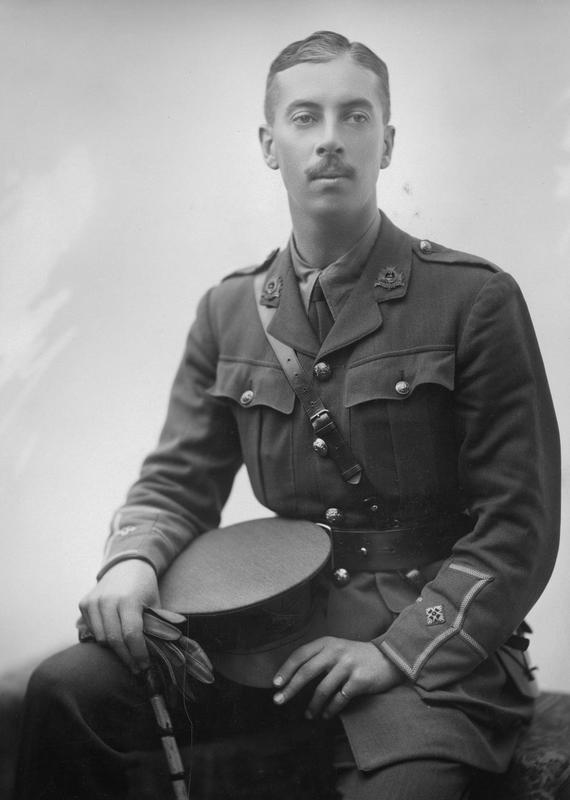
1st Battalion, Bedfordshire Regiment
Born 1 April 1888 in Switzerland
Killed in action 27 July 1916, aged 28
Commemorated on the Thiepval Memorial, Somme, France.
Archie Holland was the youngest son of Dr James Frank R Holland, who was British Consul for the Engadine, and Jeanette Calder, née Potts, of 6 Queen Anne’s Gardens, Bedford Park, Chiswick, London.
He was educated at Harrow School, where he played Fives and Rackets, and in Neuchâtel. Whilst at Merton he captained the University Tennis Team for 1910/11. After university he joined the firm of Rothschild’s.
He enlisted in the Public Schools and University Corps in September 1914, and was later commissioned into the Bedfordshire Regiment as a Subaltern. He went to France in January 1916, and served for some months in the 10th Entrenching Battalion.
He was killed in action by the bursting of a shell, at Delville Wood near Longueval, on the night of 27 July 1916. His last words to his Captain were: “Carry on, old man, don't worry about me. I'm all right.”
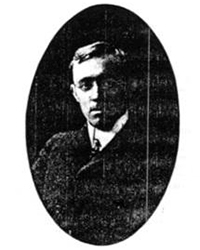
9th (Service) Battalion, Royal Fusiliers (City of London Regiment)
Born 9 August 1880 at Llantwit Major, Glamorgan, South Wales
Killed in action 3 July 1917, aged 36
Buried at Monchy British Cemetery, Pas-de-Calais, France. Also commemorated on the Woolwich Hospital war memorial Roll of Honour.
Arthur Horlock was the son of Maximillian Bates Horlock and Rebecca, née Wates, of 402, Alfreton Road, Nottingham. He was married to his cousin Jessie Madeline, née Davis, and they had one daughter, Nancy.
He was educated at the People’s College, and Nottingham High School from 1890 to 1898. He returned to the school briefly in 1905 as a teacher, before taking up a post as Mathematical Master at Woolwich Polytechnic Secondary School in south-east London. He also taught at Kivernell’s College, Hampshire, and George Green School, Poplar. He was a gifted pianist and organist.
He joined up at Greenwich in Easter 1916, and served in France and Belgium.
He was killed in action at Arras on 3 July 1917, whilst performing sentry duty.
An obituary in the Woolwich Polytechnic Magazine read:
“Pacific in disposition, and philosophic in his detachment from everything appertaining to violence and hate he, nevertheless, offered his services voluntarily to his country and enlisted … as a private foot-soldier in a line regiment—the Royal Fusiliers. After three months’ training he went to France and saw a good deal of fighting in the lines as they moved on over the old battlefields of the Somme.”
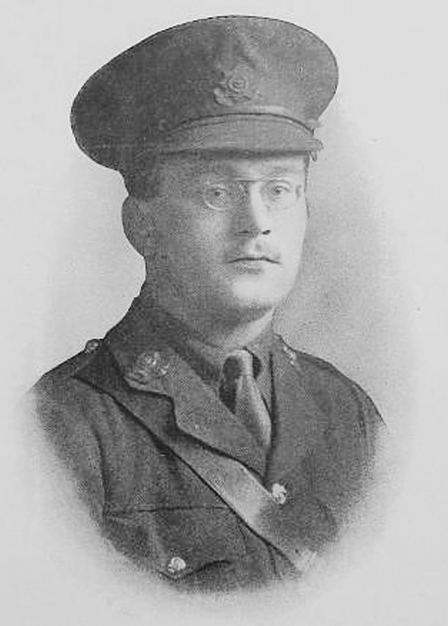
6th (Service) Battalion (Pioneers), East Yorkshire Regiment
Born 5 August 1889 at Bishop's Street, Tuam, County Galway
Presumed killed in action 9 August 1915, aged 26
Commemorated on the Helles Memorial, Turkey. Also commemorated on the Dungannon war memorial, County Tyrone; and on the Roll of Honour in the East Yorkshire Regimental Chapel, Beverley Minster, Yorkshire.
Hewitt Huggard was the son of Revd Richard Huggard MBE and Frances Marion Huggard of John’s Vicarage, Barnsley. He and his brother Lewis (who was also killed in the war) both played for Barnsley Rugby Club.
He was educated at Bromsgrove School, and took a second-class degree in History in 1911.
He joined up in August 1914, and served in Egypt before being sent to Gallipoli.
He was reported wounded and missing during an attack on Tekke Tepe Ridge, at Suvla Bay, Gallipoli, on 9 August 1915.
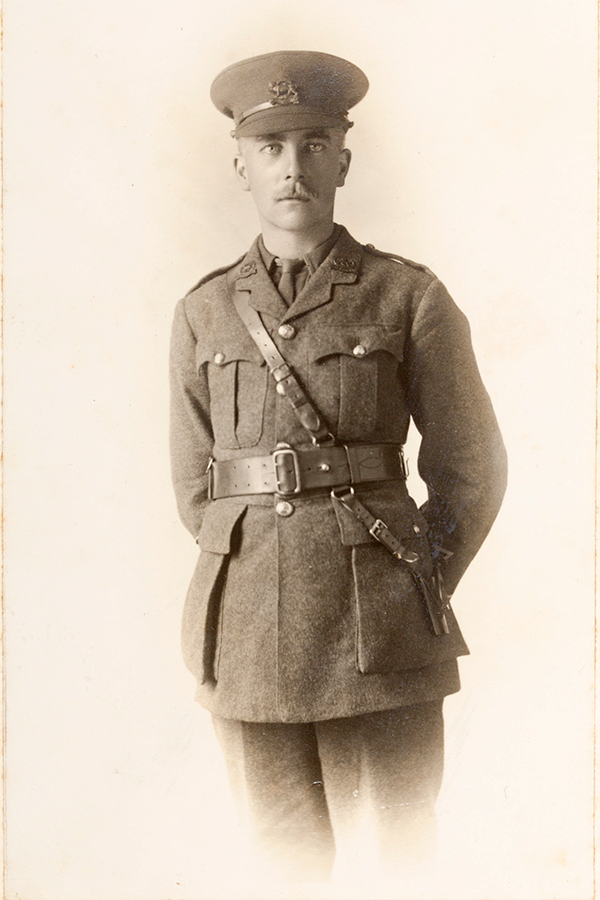
3rd (Reserve) Battalion, Leicestershire Regiment, attached to 2nd Battalion, Royal Warwickshire Regiment
Born 20 April 1891
Missing, presumed killed in action, 7 November 1914, aged 23
Commemorated on the Ypres (Menin Gate) Memorial, West Flanders, Belgium.
Richard Hutton was the youngest son of Reverend Joseph Henry Hutton and Clarissa Marshall, née Barwick, of West Heslerton, Yorkshire.
He was educated at Chigwell and Marlborough College, before coming to Merton to read Classics.
He was commissioned as a Second Lieutenant on 15 August 1914, and served in France and Belgium.
He was reported missing, presumed killed in action, near Ypres, on 7 November 1914.
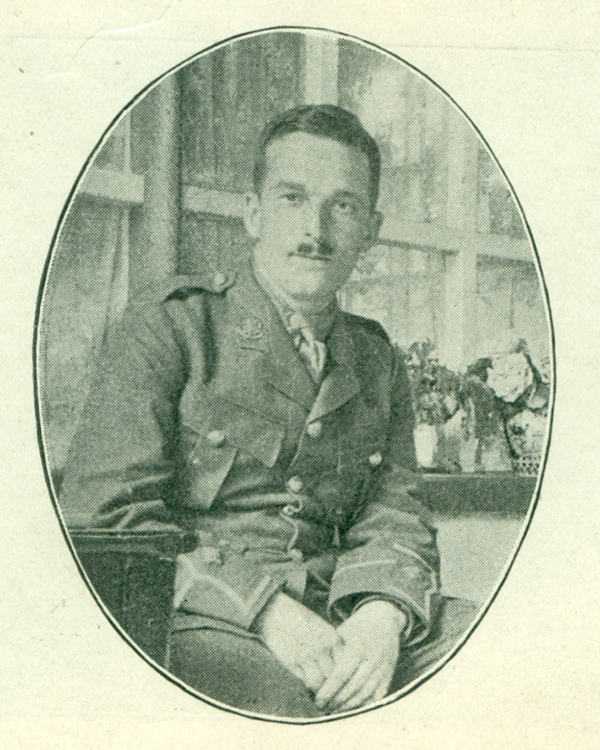
6th Battalion, attached to 8th (Service) Battalion, East Lancashire Regiment
Born 18 August 1890 in Pimlico, London
Killed in action 8 October 1917, aged 27
Commemorated on the Tyne Cot Memorial, West Flanders, Belgium. Also commemorated on the war memorials at Winnington Works, Cheshire, and at Steep, Hampshire; and in All Saints Church, Steep.
Dmitri Jarintzoff was the son of General Dmitri Feodorovitch Jarintzoff and Mrs Nadine Jarintzoff, née Ostroverhova, of 15 South Hill Park Gardens, Hampstead, London.
He was educated at Bedales School, Petersfield, Hampshire, and came up to Merton as a Postmaster in 1909, taking a second-class degree in Chemistry in 1913. He was a member of the Musical Society, of the Bodley Literary Society, and of the Junior Science Club; he was also a member of the Officers' Training Corps. In 1910 he was awarded a Choral Scholarship.
At the outbreak of war in 1914, he was researching chemicals at Brunner Mond and Co. in Northwich. He enlisted at the outbreak of war, initially as a Private in the 23rd Battalion, London Regiment, and advanced rapidly through the ranks, becoming acting Company Sergeant-Major in January 1915. In June he was given a commission in the East Lancashire Regiment. His initial service overseas was in Gallipoli, where he was present with the regiment's 6th Battalion from September until just prior to the Allied evacuation, when he was invalided out after contracting enteric fever, pleurisy, and jaundice. He was awarded the Military Cross in 1916.
Returning to the front in 1917, he was wounded at Beaumont-Hamel, partially losing the use of his right hand. Having returned once more in August, he was killed in action on the Western Front, shot dead by a German sniper, on 8 October 1917, two days before his battalion was due to be relieved from its positions.
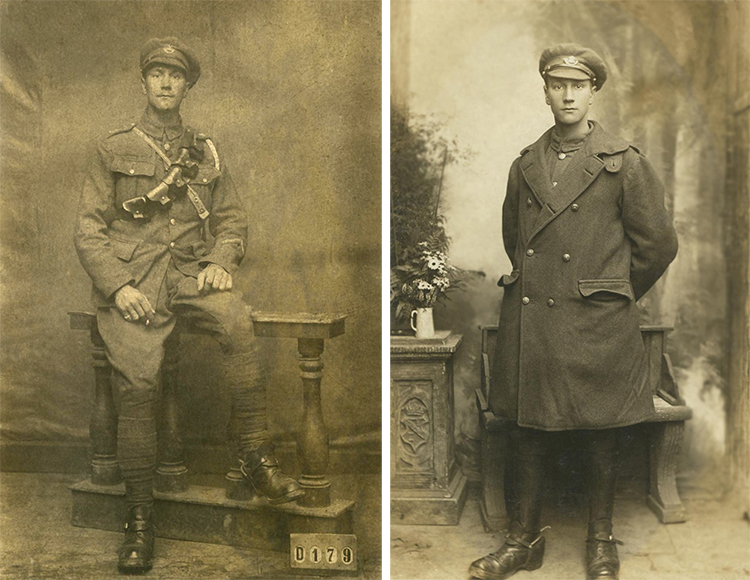
1/4th Battalion, Oxfordshire & Buckinghamshire Light Infantry
Born 26th August 1894 in Headington Quarry
Died 27th September 1917, aged 23
Commemorated on the Tyne Cot Memorial, West Flanders, Belgium.
Francis Jeffrey, known as Frank, was the son of John Jeffrey and Edith Mary, née Pratt, of 216 Queen’s Road, Buckland, Portsmouth. Frank’s mother sewed, ironed, and cooked for undergraduates in Merton College so that she could save up and buy a plot of land to build a shop, which she did in early 1911. He was married to Harriet (Hetty), née Kennedy, only seven months before he was killed.
He volunteered in 1915 and was sent to France with the Territorials, becoming a transport driver, and then served as a Private with the Oxon & Bucks Light Infantry. He came home on leave in January 1917 and returned three months later in April just after his marriage.
He was killed in Belgium, on 27 September 1917.
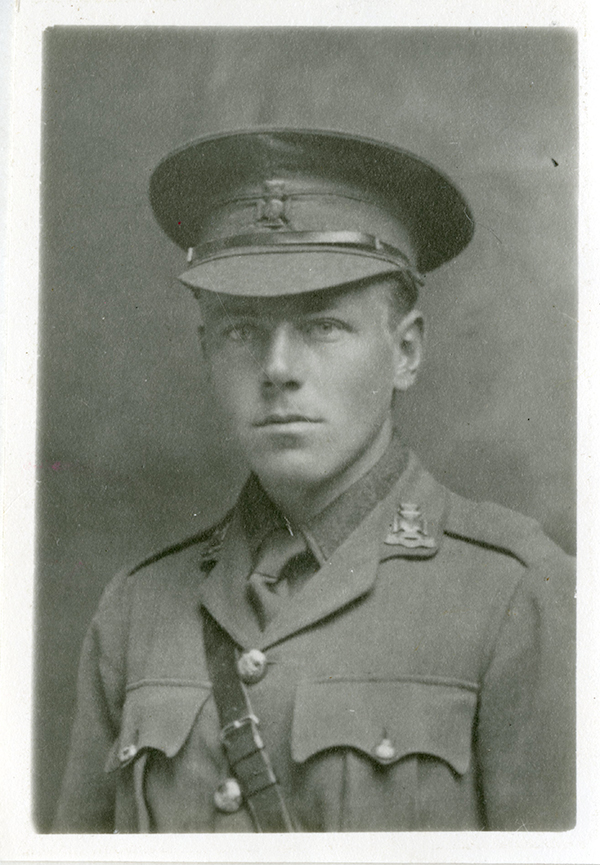
5th (Service) Battalion, Duke of Edinburgh's (Wiltshire) Regiment
Born 17 June 1886 in Southampton
Killed in action 22 February 1917, aged 30
Commemorated on the Basra Memorial, Iraq.
Robert Jesson was the only son of Robert William Jesson and Annie Randall, née Fairey, of 10 Archers Road, Southampton.
He was educated at Handel College, Southampton, and Sherborne School. Before the war he worked as a Managing Clerk with Hepherd & Winstanley, of Southampton. He played cricket, making 14 appearances for Hampshire as well as for Sherborne School and the University, and rugby, with Trojans RFC and Rosslyn Park.
He joined the Inns of Court Officer Training Corps on 6 August 1914, was gazetted as a Second Lieutenant in the 5th (Service) Battalion, Wiltshire Regiment 22 days later, promoted to Lieutenant in October, and Captain in March 1915. He served at Gallipoli, was wounded on 9 August 1915, returned to his regiment in October, but was invalided home with shellshock (listed officially as ‘frostbite’) that December.
He returned to the war in Mesopotamia in July 1916.
He was killed by a Turkish sniper whilst in action outside Kut, near Basra in modern-day Iraq, on 22 February 1917.
His obituary in the Sherborne School magazine remarked:
“There was never a more lion-hearted cricketer than he; and to have him on our side went a long way towards victory. But it was not in the field only that he played so great a part. Which of us will ever forget his cheerfulness, his modesty, his tact, his sympathy and his intense love of all that had to do with Sherborne?”
10th (Service) Battalion, Royal Warwickshire Regiment
Born 1879 in Brighton
Killed in action 4 July 1916, aged 37
Commemorated on the Thiepval Memorial, Somme, France.
Charles Jones was the son of Major Charles Jones and Mary Jane, née Ross. He married Margaret Lois Garrett, niece to Elizabeth Garrett Anderson and Dame Millicent Garret Fawcett, on 28th April 1911. They had a daughter and two sons. He and his wife were part of a close-knit group of friends, most of whom were at Cambridge; Florence Roma Muir Wilson’s novel If all these young men, published in 1921, is thought to be based on their experiences.
Already a long-standing member of the Royal Warwickshires—he had been made Second Lieutenant on 21 April 1900, and Lieutenant on 1 March 1901—Jones was called up on Boxing Day, 1914.
He was killed in action at La Boiselle on 4 July 1916, during the Battle of the Somme.
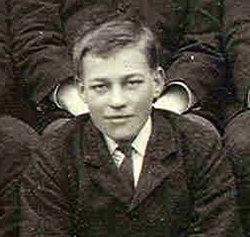
Bowker’s Horse (East African Mounted Rifles)
Born 16 November 1884
Killed in action 3 November 1914, aged 29
Buried in Dar es Salaam War Cemetery, Tanzania.
Richard Edward Kay-Mouat was educated at Bedford Grammar School (1897-1900) and St Edward’s School, Oxford before coming to Merton in 1902.
He rowed for the College at the Henley Regatta in 1905. After university he went out to Kikuyu in British East Africa (now Kenya) as a planter.
He joined up in September 1914; Bowker’s Horse was a volunteer unit made up of colonists in British East Africa, and later became part of the East African Mounted Rifles.
He was killed in action at the Battle of Kilimanjaro at Longido (in modern-day Tanzania), on 3 November 1914, following a suicidal mounted attack on German positions when he was shot through the head whilst ‘trying to help a comrade'.
During the battle, the unit suffered the indignity of having a German patrol creep up on them at night and rustle 57 of their horses; after that they were frequently referred to as “Bowker’s Foot”.
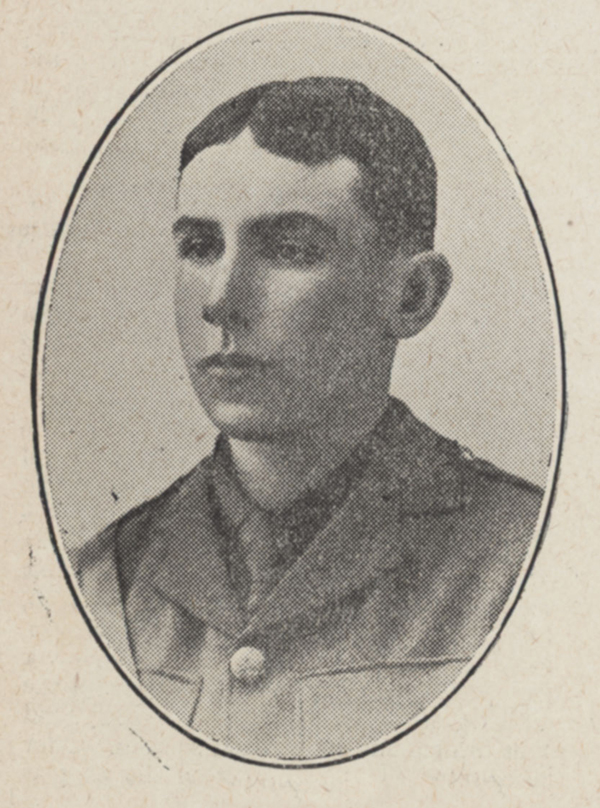
3rd (Reserve) Battalion, Border Regiment, attached to Lancashire Fusiliers
Born 1897 in South Stoneham, Hampshire
Killed in action 7 July 1915, aged 17
Commemorated on the Ypres (Menin Gate) Memorial, West Flanders, Belgium. Also commemorated on the Hitchin Grammar and St John’s school war memorials.
Edward Kelly was the only son of Lieutenant Edward Kelly (RN) and Ethel Kelly, of ‘Dalmally’, Carshalton Park Road, Sutton, Surrey.
He was educated at Hitchin Grammar School, and St John’s, Leatherhead.
He was commissioned on 27 January 1915 and sent to France in June.
He was killed by a shell during 3 days of heavy fighting to repel a German counter-attack at Pilkem, three miles north of Ypres, on 7 July 1915.
His Commanding Officer later wrote:
“He was such a cheery youth and we all liked him immensely, and he got on very well with his men. He was very young and boyish - too young in fact for this work, but he was very plucky and did his work well.”
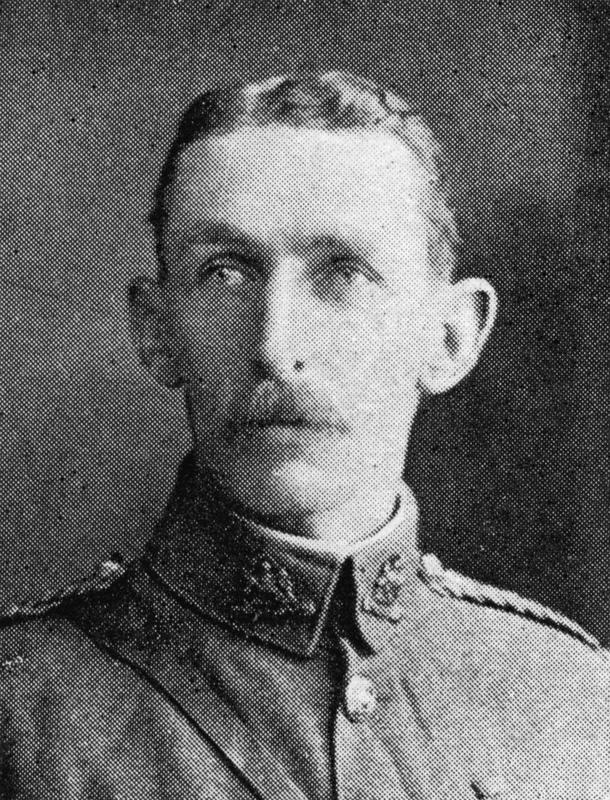
3rd (Reserve) Battalion, attached to 2nd Battalion, Manchester Regiment
Born 5 July 1875 in Kensington, London
Killed in action 26 October 1914, aged 39
Commemorated on the Le Touret Memorial, Pas-de-Calais, France.
William King-Peirce was the son of Richard King-Peirce and Frances Agnes, née Price. He was married to Mary Agnes, née Fisher in 1903.
He was educated at Bradfield College, where he captained the Football XI in 1893, played cricket, and was a prefect. He took his BA in 1898. Whilst at Merton he captained the College VIII.
He joined the Manchester Regiment in May 1899, and fought in Orange Free State, Transvaal, Orange River Colony, Cape Colony, at Biddulphsberg, and at Wittebergen in the South African War. He was awarded the Queen’s South Africa Medal with 4 clasps. He was made a Captain in 1901. He left the regular army in November 1911, joining the 3rd Battalion, Manchester Regiment, in May 1912.
At the outbreak of war he was sent to France.
He was killed in action at Festubert, during the Battle of La Bassée, on 26 October 1914.
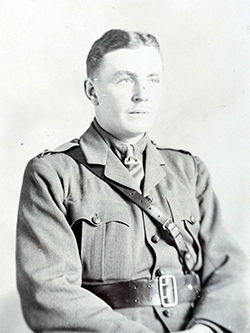
9th (Service) Battalion, King’s Royal Rifle Corps
Born 3 September 1891 in Coombe, near Malden, Surrey
Killed in action 30 July 1915, aged 23
Commemorated on the Ypres (Menin Gate) Memorial, West Flanders, Belgium.
Jack Lambert was the eldest son of Ernest Orger Lambert and May, née Fellows, of 23 Terlingham Gardens, Folkestone, Kent.
He was educated at Marlborough College, and came up to Merton in 1910. Before the war he spent two years managing a coconut estate in Kelantan, in the Malay States (modern-day Malaysia).
He was commissioned on 23 April 1915, and served in France and Belgium.
He was reported missing in action at Hooge in Flanders, Belgium, on 30 July 1915. His death was not officially confirmed until March the following year.
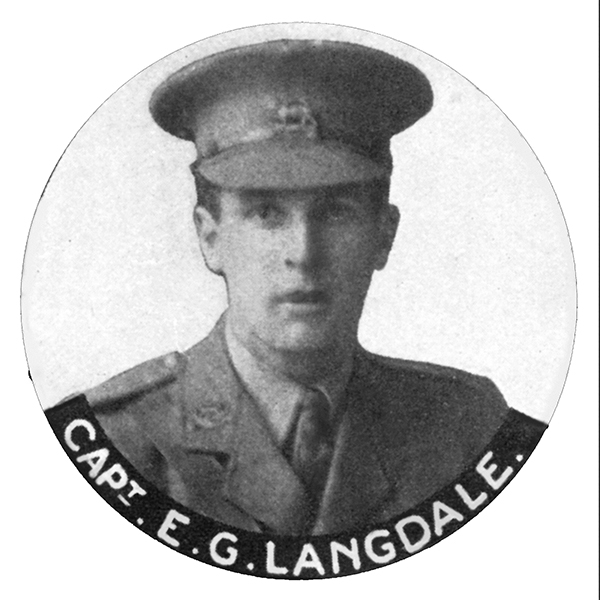
1/5th Battalion, Royal Leicestershire Regiment
Born 27 January 1883 in Kensington, London
Killed in action 13 October 1915, aged 32
Commemorated on the Loos Memorial, Pas-de-Calais, France. Also commemorated in Oakham School Chapel and on Oakham’s town war memorial.
Edward Langdale was the son of Frederick William Langdale and Ada Maria, née Jones, of 17 Earl's Court Square, London. He was married to Dora Janet, née Barnett, on 6 August 1914; they had a daughter.
He was educated privately, and at Eastbourne College where he captained the cricket XI in 1900 and 1901. He rowed for Merton at the Henley Regatta. After University he taught at King Edward VII School Sheffield, and at Oakham School, Rutland, between 1912 and 1914.
At the outbreak of war he was Officer Commanding the Oakham School Officer Training Corps. He joined the Leicestershire Regiment (Territorials) and was commissioned as Lieutenant on 5 August 1914. He sailed to France on 22 February 1915. Later that year he was Mentioned in Dispatches.
He was killed in action while leading an attack on the Hohenzollern Redoubt, during the Battle of Loos, on 13 October 1915. An account written by one of the other soldiers who took part in the action reads:
“By the time they reached the front line the company commander (Captain Langdale) was leading them himself. Walking along with his pipe in his mouth, Capt. Langdale might have been at a Field Day, as he calmly signalled his right platoon to keep up in line, with "Keep it up, Oakham" as they crossed our trench. The line was kept, and so perfectly that many of the stragglers who had come back turned and went forward again with them. But once more as they were reaching the German front line came that deadly machine gun fire, and their gallant commander was one of the first to fall, killed with a bullet in the head.”
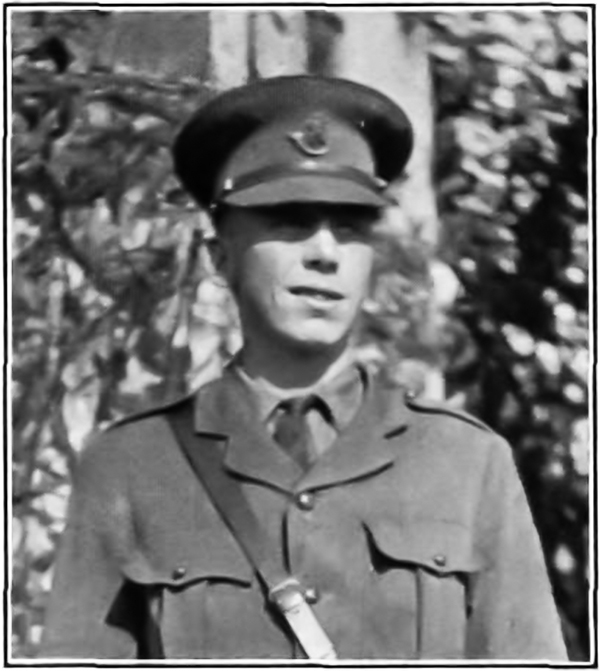
5th (Service) Battalion, Oxfordshire & Buckinghamshire Light Infantry
Born 14 November 1891 on Portsea Island, Hampshire
Killed in action 25 September 1915, aged 23
Commemorated on the Ypres (Menin Gate) Memorial, West Flanders, Belgium; also commemorated on the war memorial and a window at St Peter’s Church, Curdridge, Hampshire.
Lionel Lee was the son of Edward Herbert Soden Lee and Lizzie, née Shaw, of Botley, Hampshire.
He was educated at Wellington College, and matriculated at Merton in 1910. He was a member of the college’s 1914 Hockey team.
He joined up with the 1/9th (County of London) Battalion (Queen Victoria's Rifles) on 26 August 1914; after six weeks with them he was given a commission in the 5th Oxford & Bucks Light Infantry, and landed at Boulogne on 21 May 1915. Later that year he was Mentioned in Dispatches.
He was posted as missing, presumed killed in action, at the Battle of Loos, on 25 September 1915.
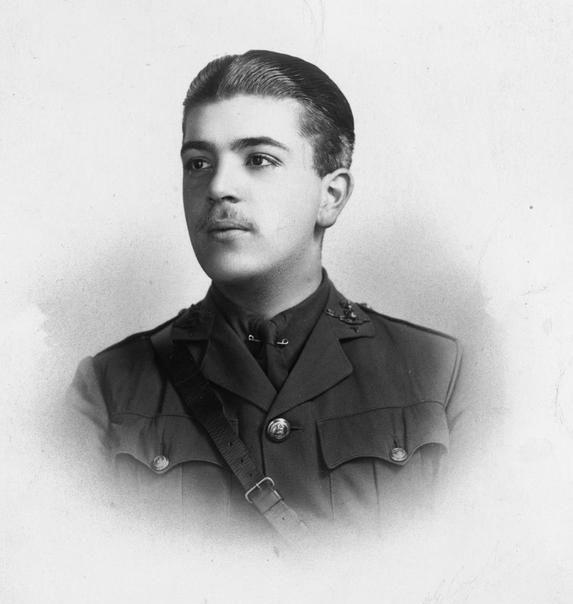
1/7th Battalion, Worcestershire Regiment
Born 27 March 1895 in Marylebone, London
Died of wounds 23 December 1915, aged 20
Buried at Louvencourt Military Cemetery, near Doullens, Somme, France.
Roland Leighton was the son of Robert Leighton and Marie, née Connor.
He was educated at Uppingham School, where he became House Captain, and won numerous prizes. (On Speech Day 1914 he collected so many prizes that an old boy later recalled him taking them back to his dormitory in a wheelbarrow). He was awarded a Classical Postmastership to come to Merton in January 1914, but volunteered for service before he could matriculate.
At first he was refused because of his poor eyesight, but on 21 October 1914 he was commissioned in the 4th Battalion, Norfolk Regiment, having persuaded a family doctor to issue a medical certificate, which made no mention of his shortsightedness. In March 1915 he transferred to the 7th Battalion, Worcestershire Regiment in order to reach the front faster, and was in the trenches at Armentières the following month.
On leave in August 1915, he became engaged to Vera Brittain, whom he had first met whilst at school, in July 1913; her brother Edward was a close school friend of Leighton’s. Late that year he converted to Roman Catholicism.
He was wounded by a sniper on 22 December whilst maintaining his trench’s barbed wire in a quiet sector of the Somme at Hébuterne, and died at the Hospital Clearing Station at Louvencourt the following day.
In her book, Testament of Youth, written in 1933, Vera Brittain recalled visiting Roland's family home after his death:
“I arrived at the cottage that morning to find his mother and sister standing in helpless distress in the midst of his returned kit, which was lying, just opened, all over the floor. The garments sent back included the outfit that he had been wearing when he was hit. I wondered, and I wonder still, why it was thought necessary to return such relics - the tunic torn back and front by the bullet, a khaki vest dark and stiff with blood, and a pair of blood-stained breeches slit open at the top by someone obviously in a violent hurry. Those gruesome rags made me realise, as I had never realised before, all that France really meant.”
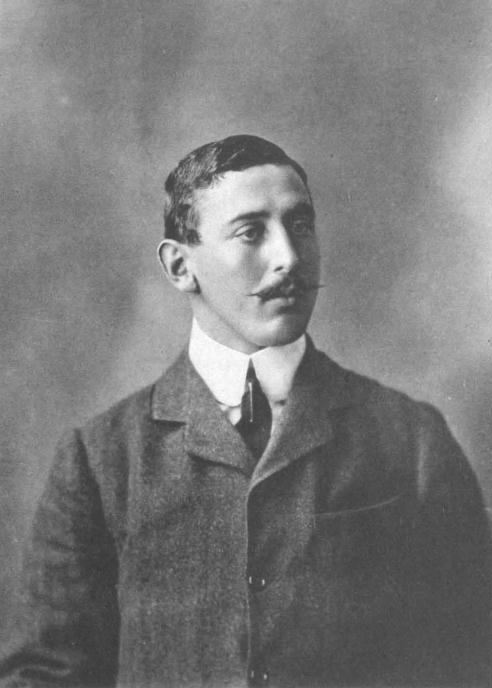
Wellington Mounted Rifles, New Zealand Expeditionary Force
Born 6 December 1879
Died of wounds 25 December 1915, aged 36
Buried at Alexandria (Chatby) Military and War Memorial Cemetery, Egypt. Also commemorated on a plaque in Greatford Church; and on a stained glass window in Wanganui Collegiate School Chapel, New Zealand.
William Levin was the younger son of William Hort Levin and Amy, née Fitzgerald. On 12 January 1904 he married Zoe Charlotte, née Johnston; the couple lived at ‘Rawhitiroa’, Greatford, Rangitikei, New Zealand, and had three children.
He was educated at Wanganui Collegiate School, New Zealand, and (briefly) at Rugby. Whilst at Merton he rowed for the College.
After University in 1902, he became a professional soldier with a commission in the King’s Dragoon Guards, a British regiment, for two years, one of which he spent on garrison duty in South Africa. He resigned his commission in 1904 and returned to New Zealand.
When war broke out he enlisted in the New Zealand Expeditionary Force. He gained his commission as a Major on 21 November 1914.
He embarked at Wellington, New Zealand on 14 December 1914, and arrived at Suez, Egypt, on 28 January 1915. He acted as the Beach Commandant at Anzac Cove during the Battle of Gallipoli.
He was severely wounded at Gallipoli on 18 December 1915, and died eight days later at No.15 General Hospital, Alexandria, on Christmas Day.
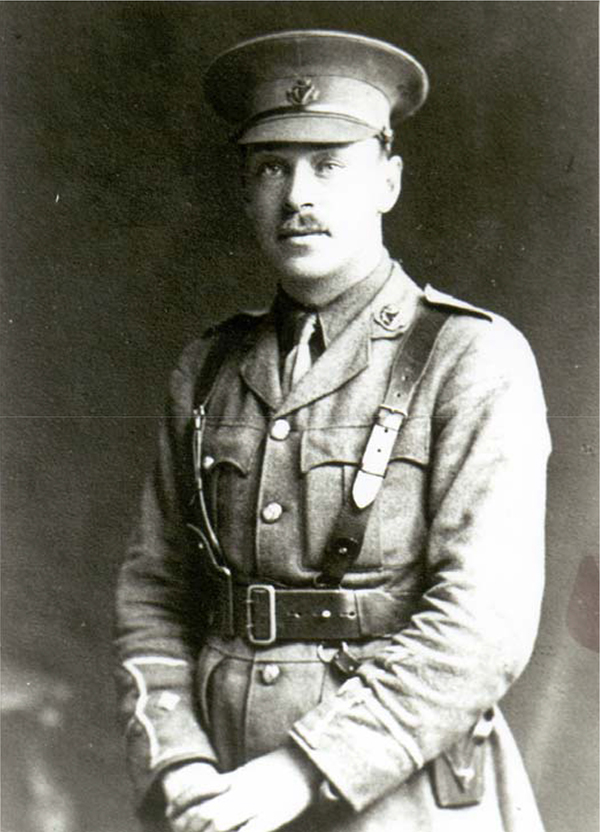
3rd (Reserve) Battalion, Connaught Rangers
Born 26 August 1877
Died 8 December 1915, aged 38
Buried at Kilmaine (Holy Trinity) Church, County Mayo, Ireland. Also commemorated on the wall memorial at Grangegorman Military Cemetery; and in the Cheltenham College chapel cloister.
Frederic* Lewin was the youngest son of Frederic Thomas Lewin (who served as High Sheriff of Countys Mayo and Galway) and Lucy Emma, née Corrie.
He was educated at Cheltenham College from 1891 to 1895, where he played rugby as a forward. Whilst at Merton he rowed for the College in 1898, and was a member of the Myrmidon dining club. He went on to work as a barrister in Ireland.
Having served as a Lieutenant in the East Surrey Regiment Special Reserve, he was mobilized at the outbreak of war, on 4 August 1914.
He suffered injuries to his skull and neck whilst practising the use of grenades and trench catapults at Preghane rifle range, Kinsale, County Cork, on 10 November 1915, and died of his wounds on 8 December. The church where he is buried was controversially torn down by stone robbers overnight in 1989 and now lies in ruins.
* According to family tradition, Frederick is spelt without a ‘k’ but the ‘k’ is shown in Lewin’s name in various records.
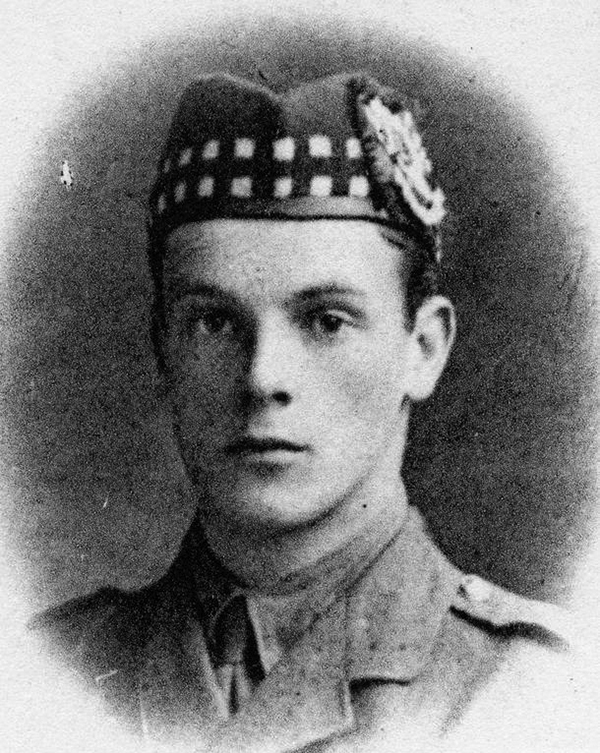
Seaforth Highlanders, attached to 2nd Battalion, Machine Gun Corps
Born 14 October 1891
Killed in action 1 July 1916, aged 24
Commemorated on the Thiepval Memorial, Somme, France. Also commemorated on the war memorial at Cupar, Fife, Scotland.
James Low was the son of Sir James and Lady (Katherine Mary Duff, née Munro) Low of Kilmaron Castle, Cupar, Fife.
He was educated at Trinity College, Glenalmond, where he was a member of the Officers Training Corps.
He was mobilized on 4 August 1914, and sent to France.
He was reported missing, presumed killed, on the first day of the Battle of the Somme, 1 July 1916.
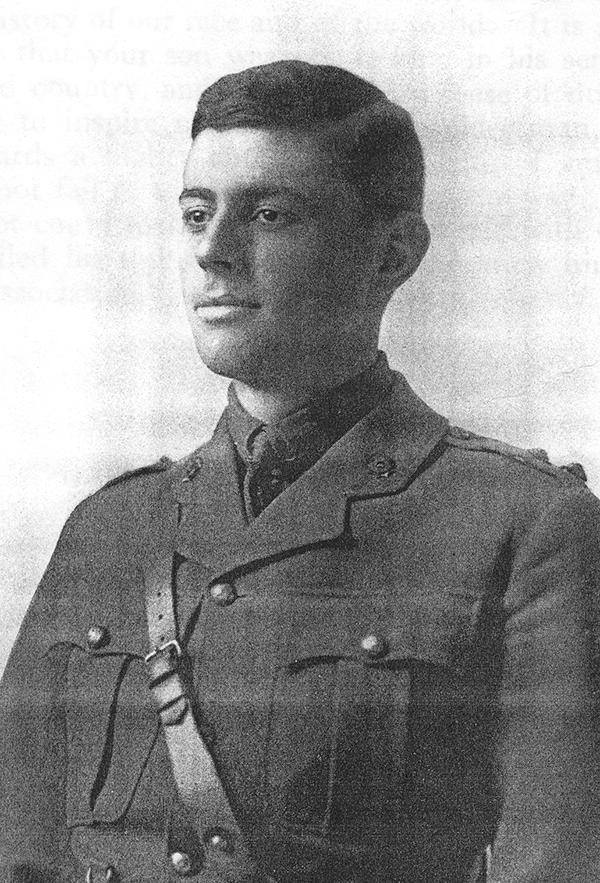
13th Hussars
Born 17 July 1896 in Hamilton, Ontario, in Canada
Killed in action 5 March 1917, aged 20
Commemorated on the Basra Memorial, Iraq. Also commemorated on the war memorials at Osgoode Hall Law School, Toronto, Ontario, Canada, and St Catharine’s Church, Chipping Campden, Gloucestershire (home of his paternal uncle).
Geoffrey Lynch-Staunton was the elder son of Senator George Staunton Lynch-Staunton and Adelaide, née Dewar, of Clydagh House, Hamilton, Canada.
He was educated at Highfield School for Boys (now Hillfield Strathallen College) in Hamilton, Ontario, then at Downside School, Stratton-on-the-Fosse, near Bath. After Merton he returned to Canada and continued his studies at Osgoode Hall Law School, now part of York University in Toronto, Canada.
He enlisted in the Canadian Expeditionary Force in early 1915, and arrived in France as a Lieutenant in June that year. In December he applied to join the British Army, was accepted on 13 February 1916, and on 1 July transferred to the 13th Hussars. In January 1917 the Hussars were sent to Mesopotamia (modern-day Iraq).
He was killed in action in a cavalry charge against Turkish trenches, his first engagement with the enemy, at Lajj on the Tigris River, on 5 March 1917. It is said that he rode down into a Turkish trench and walked his horse along it over the Turks. They took him prisoner, but his body was found the next day. They had dressed his wounds, but then decided that he would be a hindrance to carry along, so killed him and took everything off him.
1/7th (Robin Hood) Battalion, Sherwood Foresters (Nottinghamshire And Derbyshire Regiment)
Born 10 September 1886
Killed in action 13 October 1915, aged 29
Commemorated on the Loos Memorial, Pas-de-Calais, France. Also commemorated on the St Andrew’s Church and St Augustine’s Church war memorials (the latter now in St Leodegarius’ Church, Basford), Nottinghamshire.
George Mellers, who was known as Rex, was the only son of Joshua George Mellers and Sophia Elizabeth, née Robinson, of ‘Trafoi’, Pelham Rd, Sherwood Rise, Nottingham.
He was educated at Chigwell School, and took his BA at Merton in 1908.
Having joined the ‘Robin Hoods’ in 1907, he was mobilized in August 1914, and served in France and Belgium from February the following year, twice being wounded.
A few days after rejoining his company, he was killed in action in an attack on the Hohenzollern Redoubt, during the Battle of Loos, on 13 October 1915. His body was left entangled on the German barbed wire, and only recovered on the night of 22 November; it was buried in a shell hole, but subsequently lost.
11th (Service) Battalion, Manchester Regiment; Tank Corps
Born 1 September 1890
Died 30 October 1918, aged 28
Buried at Tunbridge Wells Cemetery, Kent.
Geoffrey Meugens was the youngest son of Marc Meugens, of Fleet, Hampshire. His father Marc was an Englishman of Belgian descent, who in 1880 had established an accountancy practice in Calcutta; the firm would eventually evolve to become Price Waterhouse. Geoffrey married May, née Campbell Thomson, in September 1914.
He was educated at Eton College, and came up to Merton in 1909 as an Exhibitioner, taking his BA in 1913. Before the war he worked as a Chartered Accountant in his father’s practice in India.
He enlisted on 29 August 1914, and served at Gallipoli—where he was wounded—in Egypt, and in France & Flanders, where he was again wounded at Poelcapelle on 2 October 1917. In 1918 he was Mentioned in Dispatches; in February that year he was made a temporary Major in the Tank Corps.
He died on 30 October 1918 of pneumonia, contracted while on active service.
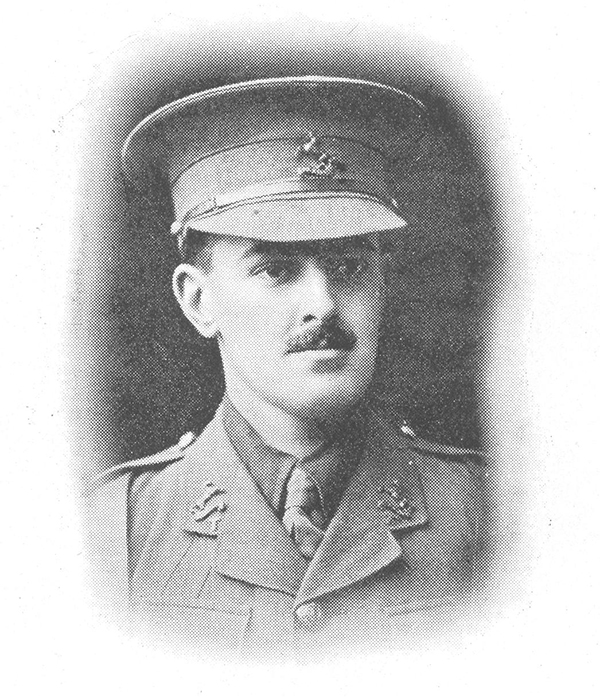
1/9th King’s (Liverpool Regiment)
Born 17 October 1892 in Crosby, Liverpool
Killed in action 25 September 1915, aged 22
Commemorated on the Loos Memorial, Pas-de-Calais, France. Also commemorated on a stained glass window at St Mary the Virgin Church, Waterloo Park, Liverpool.
Lawrence Milner was the younger son of Christopher Shepherd Milner and Agnes, née Rigby, of ‘Bowscale’, Linden Avenue, Blundellsands, Liverpool.He was educated at Ballure House prep school and, with a Harrison Scholarship, at Merchant Taylors’ School, Crosby, where he played for the rugby XV in the 1910-11 season and was made Head Boy in 1910. He took second class honours in Classical Mods in 1913.
He enlisted as soon as war broke out and was granted a commission as Second Lieutenant on 22 August 1914, being posted to the 1/9th Battalion King’s (Liverpool Regiment) which moved to Tunbridge Wells in October for training. When training was complete, they moved to France landing at Le Havre on 13 March 1915, becoming part of the 1st Division. In the May after their arrival in France, the battalion took part in the failed Battle of Aubers Ridge. They then spent time in reserve before training for their next attack in the Battle of Loos.
It was during this engagement that Lawrence was killed, on 25 September 1915. A fellow solider, another Merchant Taylors Old Boy, reported seeing him binding the wounds of his orderly who was shot a few moments earlier. Lawrence was kneeling in tall grass about 300 yards from the enemy trenches when he was shot in the head. He died about half an hour later, aged 22.
He was buried near Lone Tree within a few yards of where he fell, but his grave was subsequently lost and he is commemorated on the Loos Memorial.
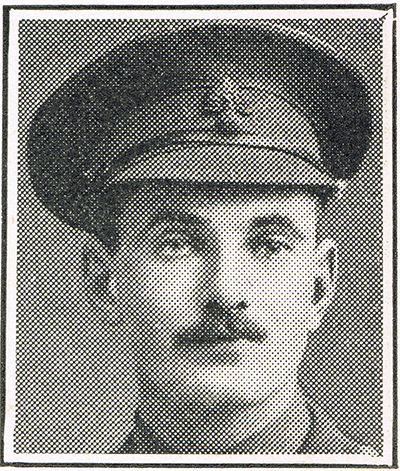
1st Battalion, Royal Fusiliers (City of London Regiment)
Born 2 October 1892 in Chelsea, London
Killed in action 2 September 1915, aged 22
Buried at Rue-David Military Cemetery, Fleurbaix, France.
Leslie Newall was the son of William Newall and Lilian Lucy, née Holloway, of Redheath, Croxley Green, Hertfordshire.
He was educated at Eton College, and came up to Merton in 1911.
He enlisted in August 1914 and served in Malta and France.
He was killed in action on 2 September 1915.
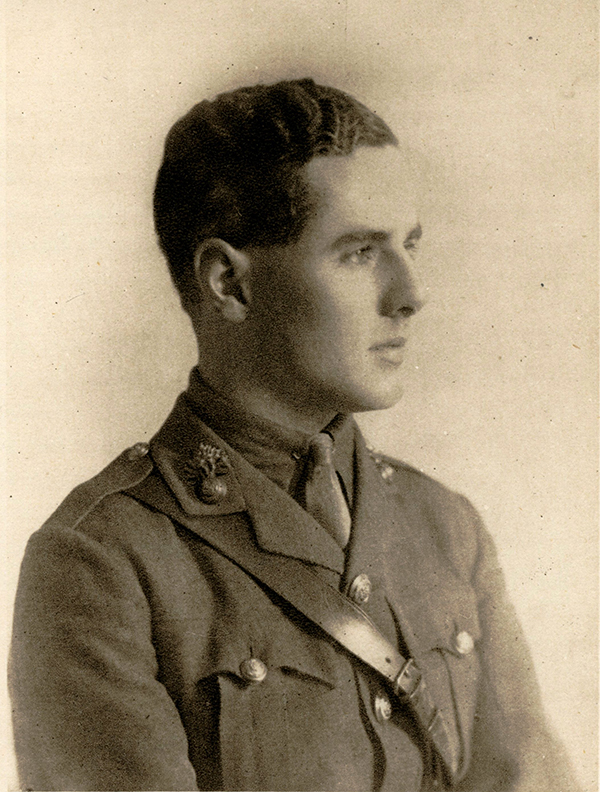
11th (Service) Battalion, Royal Fusiliers (City of London Regiment)
Born 16 February 1891 in Tottenham Green, London
Killed in action 1 July 1916, aged 25
Buried at Dantzig Alley British Cemetery, Mametz, France. Also commemorated on the Westminster Hall war memorial, London; and on a plaque in All Hallows Church, Tottenham.
Wilfred Nield was the elder son of Sir Herbert Nield, KC, MP for Ealing 1906-18, and his first wife Mary Catherine, née Baker, of Bishop’s Avenue, East Finchley, London.
He was educated at Stanmore Park School, Middlesex, and Winchester College—where he was a House Prefect and a promising long-distance runner—before coming up to Merton in 1910. At Merton he commanded the college contingent of the Officers Training Corps. After leaving Oxford he went to Germany to learn the language and then to France to prepare for the entrance examination for the Diplomatic Service; he was there when war was declared.
He obtained a commission in September 1914, and was made Lieutenant in February the following year. Wounded whilst serving in France in December 1915, he returned to the front in May 1916.
He was killed in action at Mametz, on 1st July 1916, the opening day of the Battle of the Somme. He had managed to cross some way over No Man’s Land when he had been struck by a shot which completely severed his left wrist, but he refused to go back to the dressing station. Having had his handkerchief bound round the wound, he continued to advance, until another shot struck him in the leg and made further advance impossible. He was then carried and placed with other wounded men in a deep shell hole nearby. A few moments later a 5.9” shell burst in the hole and killed all its occupants.
17th (Service) Battalion, King’s (Liverpool) Regiment
Born 23 June 1885 in West Derby, Liverpool
Killed in action 28 June 1916, aged 31
Buried at Cerisy-Gailly Military Cemetery, Somme, France. Also commemorated on the war memorials at West Lancashire Golf Club, Blundellsands and All Saints Church, Stoneycroft; at Loretto School, Musselburgh; and on the roll of honour at the Liverpool Cotton Association.
Kingsmill Nimmo was the son of William Nimmo and Ruth, née Pennefather, of Liverpool. He was married to Mary Roberta, née Preston, in 1914, and lived at Stanley House, Oak Hill Park, Liverpool.
He was educated at Loretto School, Musselburgh, Scotland.
At the outbreak of war in September 1914 he was offered a commission, but, preferring to serve in the ranks, he enlisted in the King’s (Liverpool) Regiment, and served in France.
He was killed in action at Maricourt, during the Battle of the Somme, on 28 June 1916. He was in a dug-out with five other men, when a shell penetrated it, bursting inside; five of the six men, including Nimmo, were killed outright.
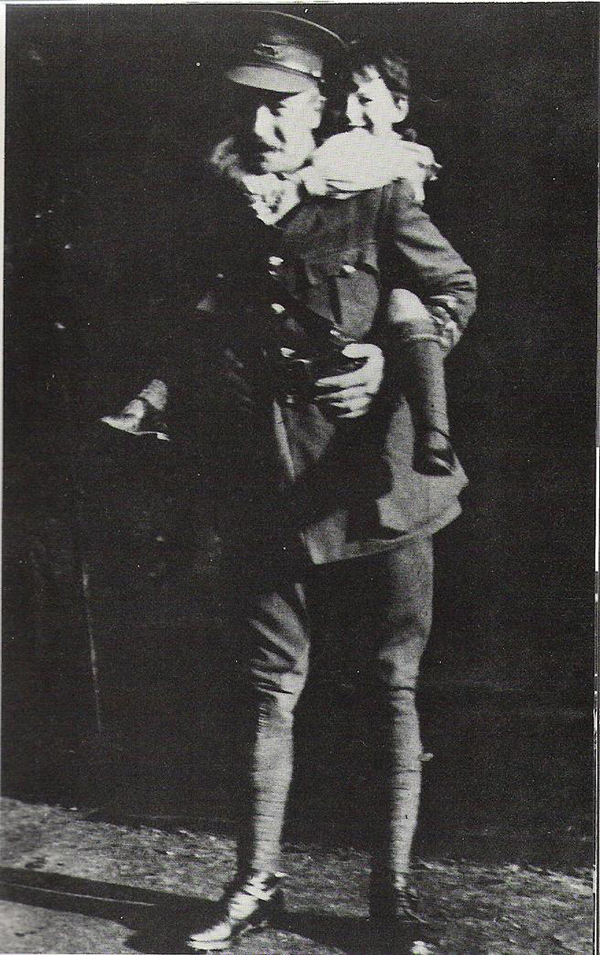
1/1st Battalion, Berkshire Yeomanry
Born 24 June 1877 in Kensington, London
Killed in action 21 August 1915, aged 38
Buried at Green Hill Cemetery, Gallipoli, Turkey.
William Niven was the son of William Niven and Helen, née Boustead. In 1899 he married Henrietta Julia Degacher. The actor David Niven was their younger son, one of four children.
He was educated at Wellington College, and came up to Merton in 1896.
Having been commissioned in the Berkshire Yeomanry in 1911, he was mobilized on the outbreak of war, and served at Gallipoli.
He was killed in action at the Battle of Scimitar Hill, inland from Suvla Bay, in Gallipoli, on 21 August 1917. His unit were attacking across the Salt Lake and were an easy target for the Turkish artillery. One Turkish officer later called it "a target such as an artilleryman thought impossible outside the world of dreams". The Yeomanry lost 1,200 men in the three kilometre advance. Lieutenant Niven had actually reached the Turkish trenches in the dark, when he was shot in the head. It was not until 17 months later that the family received official confirmation of his death.
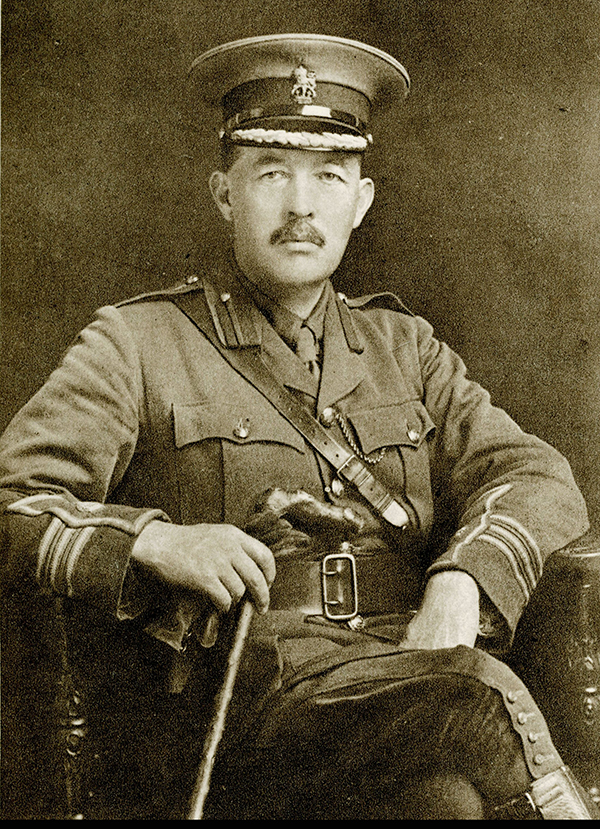
4th Battalion, Suffolk Regiment; attached to General Staff, Western Command
Born 19 November 1863 at Ickenham Rectory, Uxbridge
Died on 28 August 1916, aged 52
Buried at St Peter’s Church, Wilburton, Cambridgeshire.
Albert Pell was the elder son of Revd Henry Beauchamp St John Pell, the Rector of Ickenham, Middlesex, and Julia Caroline Maria, née Tyndall. In 1897 he married Catherine Marion, née Greene; they had two daughters.
He was educated at Twyford School and Winchester College. He took his degree, in Jurisprudence, in 1887. After Oxford he was called to the bar by Lincoln’s Inn in 1890; served as Deputy Lieutenant of Cambridgeshire; and sat as Chairman of the Isle of Ely Quarter Sessions.
Already serving at the outbreak of war, he was gazetted to the General Staff in 1915. He served as Divisional Musketry Officer, Northern Area, Western Command.
He died suddenly of a cerebral haemorrhage while going on duty in Tattenhall, Cheshire, on 28 August 1916.
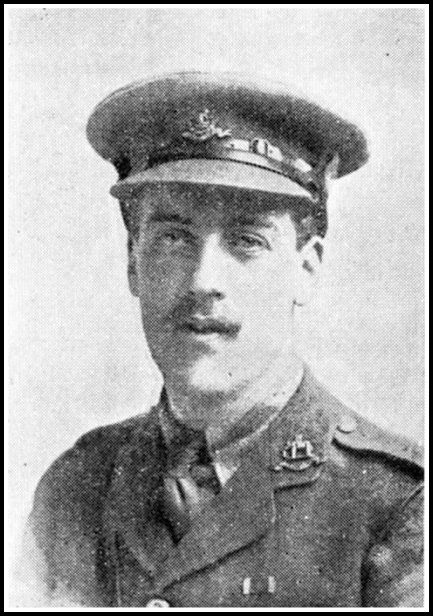
10th (Service) Battalion, Duke of Wellington's (West Riding Regiment)
Born 2 January 1895 in Halifax, West Yorkshire
Killed in action 27 October 1918, aged 23
Buried at Tezze British Cemetery, Treviso, Italy. Also commemorated on a plaque in St Peter’s Church, Hebden, West Yorkshire.
Robert Perks was the second son of Thomas Probert Perks and Alice Lydia, née Hawkins, of The Green House, Hebden, Yorkshire.
He was educated at Heath Grammar School, Halifax, and came up to Merton in 1913.
He was given a temporary commission in the 10th (Service) Battalion, Duke of Wellington's (West Riding Regiment) on 19 January 1915, and went out to France in August. He later served in Belgium, and Italy. He was wounded in July 1916, was awarded the Distinguished Service Order on 26 September 1916, and was Mentioned in Dispatches later that year. His DSO citation reads:
“When leading a bombing party, he was wounded in the face and rendered insensible. On recovering, he again took part in the attack. While throwing bombs he was again twice wounded, in the hand and foot, but continued to lead his men till rendered unconscious by a fourth wound in the face.”
He was wounded again in June 1917, and for a third time in September, after which he was invalided home, rejoining his battalion in Italy in September 1918.
He was killed in action whilst leading his company against a machine gun during the battle of the Piave, on 27 October 1918.
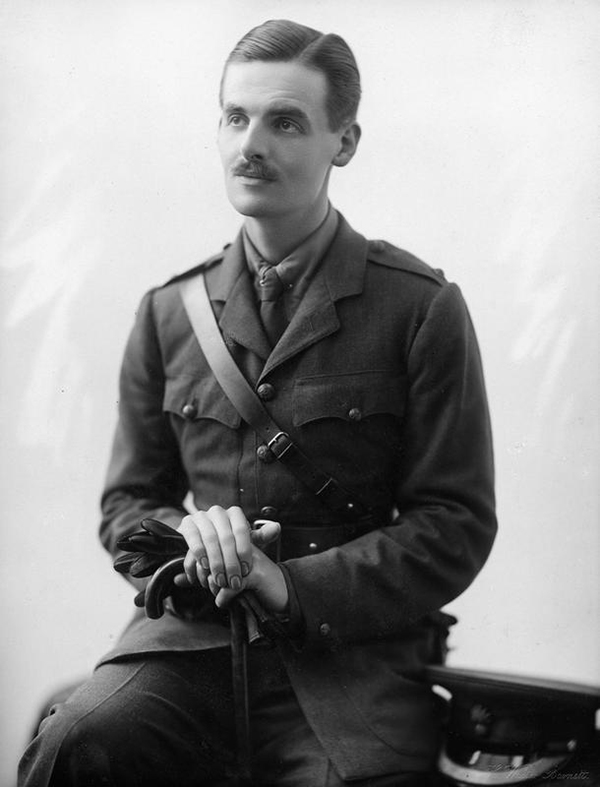
4th Battalion, Grenadier Guards
Born 7 April 1888 in Kensington, London
Killed in action 12 October 1917, aged 29
Buried at Artillery Wood Cemetery, near Boezinge, Belgium. Also commemorated on the war memorials at the Muthaiga Country Club, Nairobi, Kenya, and St Paul’s Church, Wooburn.
Jack Pixley was the second son of Colonel Francis William Pixley, VD, and Elizabeth Mary, née Simpson, of Wooburn House, Wooburn, Bucks.
He was educated at Hawtrees Prep School, Margate, at Eton College, and privately before matriculating at Merton in 1907.
He was in British East Africa when war broke out; he joined the East African Mounted Rifles and took part in several engagements before returning to England and joining the 4th Battalion, Grenadier Guards, on 13 April 1916.
He was killed in action near Houthulst Forest, during the Third Battle of Ypres (Passchendaele), on 12 October 1917.
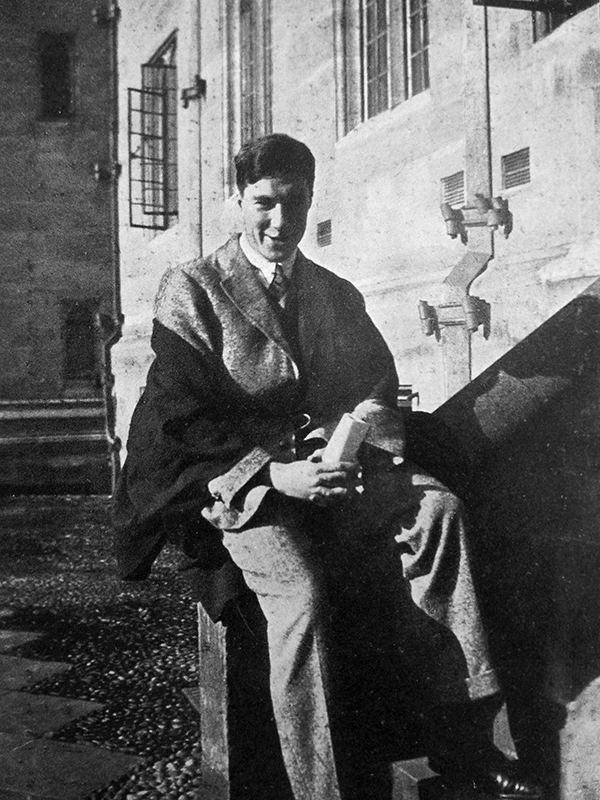
5th (Service) Battalion, Princess Charlotte of Wales's (Royal Berkshire Regiment)
Born 25 May 1891 in Kensington, London
Killed in action 13 October 1915, aged 24
Commemorated on the Loos Memorial, Pas-de-Calais, France. Also commemorated on the war memorials at St Alban's Church, Hindhead, Surrey, and St Mary’s Church, Wimbledon.
Roger Pollard was the younger son of the bibliographer and scholar of English literature Alfred William Pollard and Alice, née England, who was President of the WI for several years, of 40 Murray Rd, Wimbledon, London. Both their sons were killed in the war.
He was educated at Rokeby School, Wimbledon, and St Paul’s School, and was at Merton from 1910 until 1914. He played cricket and rugby for both his school and the College; at Merton he was President of the JCR.
He enlisted in August 1914, and served in France. He was Mentioned in Dispatches in 1915.
He was killed in action while leading a raid on German trenches near Hulluch, on 13 October 1915.
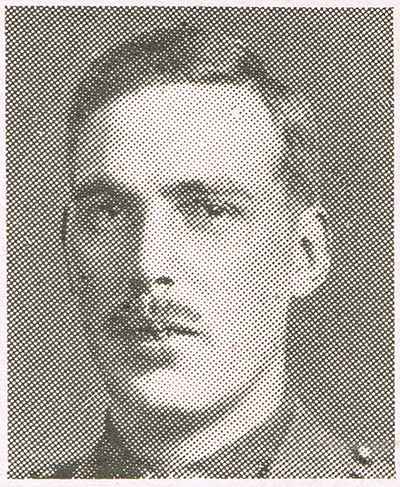
16th (Service) Battalion, Prince of Wales’s Own (West Yorkshire Regiment)
Born 5 April 1892
Killed in action 1 July 1916, aged 24
Buried at Euston Road Cemetery, Colincamps, France. Also commemorated on the war memorial at Fettes College, Edinburgh.
Robert Pringle was the son of David and Agnes Pringle of 171a, Cromwell Road, South Kensington, London.
He was educated at Fettes College, Edinburgh, and came up to Merton in 1912.
A member of the Cambridge Officers Training Corps, he was mobilized in September 1914, and served with the battalion known as the ‘Bradford Pals’, in Egypt until December 1915, then in France from March 1916.
He was killed in action leading an attack on German trenches on the Somme, in the early morning of 1 July 1916. His body was not found until 1936.
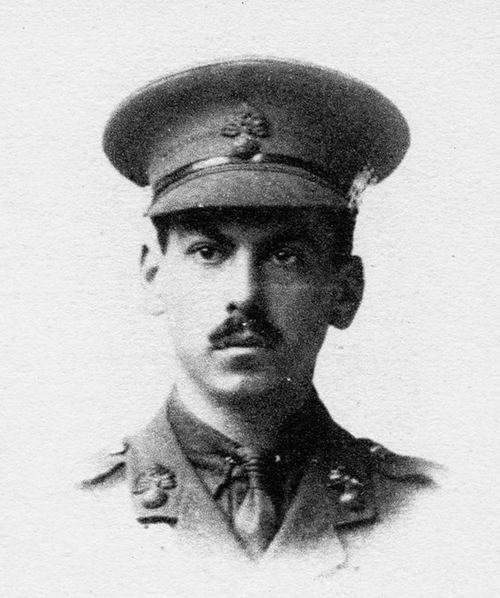
8th (Service) Battalion, Royal Fusiliers (City of London Regiment)
Born 17 February 1890 in Hackney, London
Killed in action 7 July 1916, aged 26
Buried at Ovillers Military Cemetery, Somme, France. Also commemorated in the Memorial Chapel at Charterhouse School; and on the Lincoln’s Inn war memorial.
Gerald Rawlins was the son of Henry Adair and Annie Rawlins of Wargrave, Berkshire. In November 1914 he became engaged to Gladys Inman.
He was educated at Onslow Hall, Richmond and at Charterhouse, and came up to Merton in 1908 to read Jurisprudence. Whilst at Merton he rowed for the College at the Henley Regatta in 1910, in the final of the Thames Challenge Cup. After university he was called to the Bar at Lincoln’s Inn in 1913.
Having served in the OTC at Oxford and Lincoln’s Inn, he received his commission on 12 September 1914, and went to France in May of the following year.
He was killed in action near Albert, on 7 July 1916.
Friends’ Ambulance Unit
Born 24 June 1888 in Bromley
Died 6 July 1916, aged 28
Commemorated on the war memorial at Caterham School.
James Reid was the son of Stuart J Reid of East Grinstead, Surrey.
He was educated at the Congregational School, Caterham, Surrey, taught at Ashburton, Devon, then graduated from the University College of Wales, Aberystwyth, before coming up to Merton in 1911. After Oxford he worked as an English master at Halifax Grammar School, Yorkshire.
He joined the Friends’ Ambulance Unit in July 1915, and worked at a hospital in York before being sent to France.
He died of ‘consumption’ (tuberculosis) at East Grinstead, on 6 July 1916.
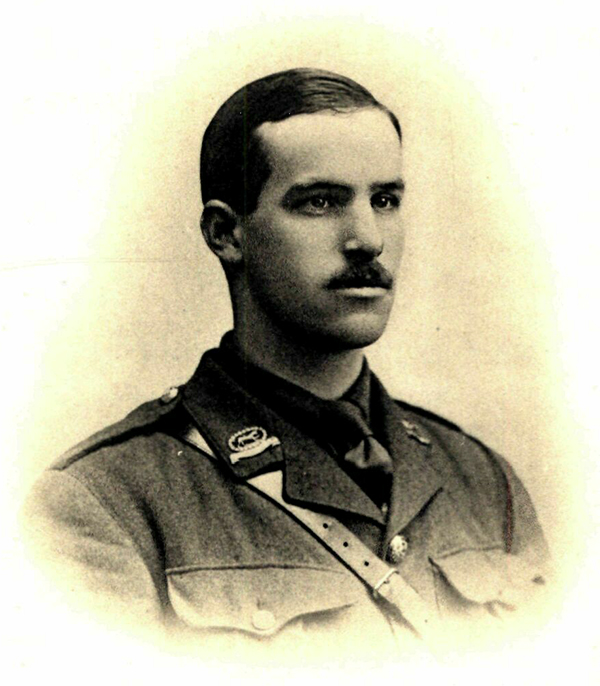
3rd (Reserve) Battalion, attached to 1st Battalion, Leicestershire Regiment
Born 4 November 1890 in Blaby, Leicestershire
Killed in action 10 September 1915, aged 24
Buried at Poelcapelle British Cemetery, Langemark-Poelkapelle, West Flanders, Belgium.
William Reynolds was the only son of William George Waterhouse Reynolds and Ida Maud, née Roberts, of Birstall Holt, Leicester.
He was educated at Rugby School, coming up to Merton in 1909. After university he entered Gray's Inn, intending to go to the Bar, but, on the death of an uncle, joined his father in the family firm, Waterhouse, Reynolds & Co., Leicester, and worked with him until the outbreak of war.
He enlisted on 3 September 1914, and was gazetted to the 6th Battalion, The Leicestershire Regiment in October, subsequently transferring to the 3rd Battalion. He went to Flanders, attached to the 1st Battalion, in April 1915.
On 10 September 1915, when under heavy shell-fire at Wieltje, near Ypres, he went to the assistance of a sergeant who was wounded, and was himself killed by a shell.
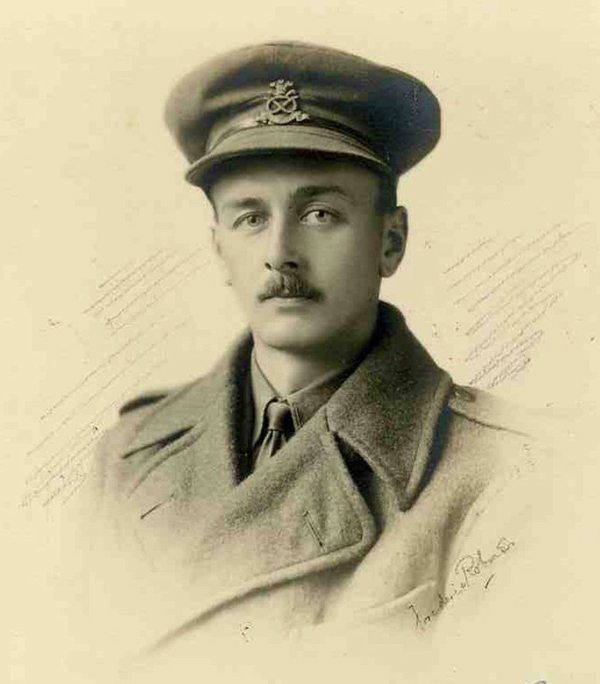
7th (Service) Battalion, Prince of Wales's Own (North Staffordshire Regiment)
Born 6 August 1885 in Catford, London
Died of wounds 23 August 1916, aged 31
Buried at Great Malvern Cemetery, Worcestershire.
John Robinson was the second son of Revd Edward Cecil Robinson and Edith Isabella, née Milner, of ‘Chadsmore’, 5 Orchard Rd, Malvern, Worcestershire.
He was educated at Radley College, where he played cricket and football in the school 1st XIs. A keen hockey player, he played for the University XI from 1905 to 1909, latterly as Captain; in his first three matches against Cambridge his twin brother, Laurence, was on the opposing team. He won a gold medal with the English hockey team at the 1908 Summer Olympics in London. When he left University he was a schoolmaster at Sherborne Prep School and at Broadstairs, Kent, for a short while before being commissioned into the North Staffordshire Regiment.
After undergoing training in England, his battalion sailed from Avonmouth in June 1915 and landed at Gallipoli after a month at sea. On 26 January 1916 the battalion landed in Egypt, and a month later arrived in Mesopotamia (modern-day Iraq) as part of a force who attempted to relieve the besieged British garrison at Kut. Unfortunately the beleaguered force capitulated to Turkish forces in April 1916 before help could arrive.
During April 1916 the battalion was engaged in fighting on the river Tigris, and he received an injury to the spine at some time during this month.
He was Mentioned in Dispatches in 1915, and awarded the Military Cross on 2 February 1916.
He died at Roehampton, of wounds received in action at Umm-el-Hannah, on 23 August 1916.
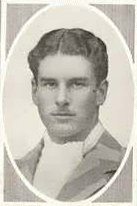
45 Battery, Royal Field Artillery
Born 20 November 1890 in Kensington, London
Killed in action 19 May 1917, aged 26
Buried at Tilloy British Cemetery, Tilloy-lès-Mofflaines, France.
Wilfrid Rogers was the younger son of Revd Alfred George Rogers and Mabel Fanny Gertrude, née Reynolds, of Gatton Rectory, Merstham, Surrey.
He was educated at Charterhouse. While at Merton he played cricket for the College.
Already serving at the outbreak of war, he spent the next three years in France. He was Mentioned in Dispatches in 1917.
He was killed in action near Arras on 19 May 1917, and posthumously awarded the Distinguished Service Order on 4 June.
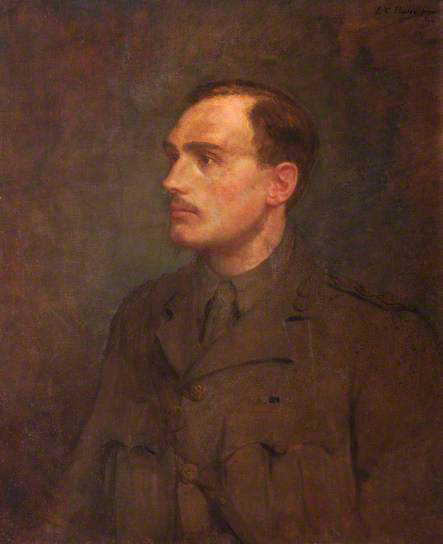
2nd Battalion, Royal Welch Fusiliers
Born 1 June 1882 in Kensington, London
Killed in action 25 September 1915, aged 33
Buried at Cambrin Churchyard Extension, Pas-de-Calais, France. Commemorated on a plaque in St John the Baptist’s church, Armitage, Staffordshire.
Arthur Samson was the only son of Revd Edward Samson and Alice Mary, née Legge, of Armitage Lodge, Rugeley, Staffordshire.
He was educated at Eton College. Whilst at Merton he played cricket for the College XI.
Already serving at the outbreak of war, he was sent to India, and then to France. He was Mentioned in Dispatches in 1915, and awarded the Military Cross on 23 June that year.
He was killed in action on the opening day of the Battle of Loos, on 25 September 1915. Robert Graves, in his book Goodbye To All That, graphically describes Samson’s death:
“Samson was lying wounded about twenty yards away from the front trench. Several attempts were made to get him in. He was badly hit and groaning. Three men were killed in these attempts and two officers and two men wounded. Finally his own orderly managed to crawl out to him. Samson ordered him back, saying that he was riddled and not much worth rescuing; he sent his apologies for making such a noise.
As soon as it was dark we all went out to get in the wounded. The first dead body I came across was Samson’s. I found that he had forced his knuckles into his mouth to stop himself crying out and attracting any more men to their death.”
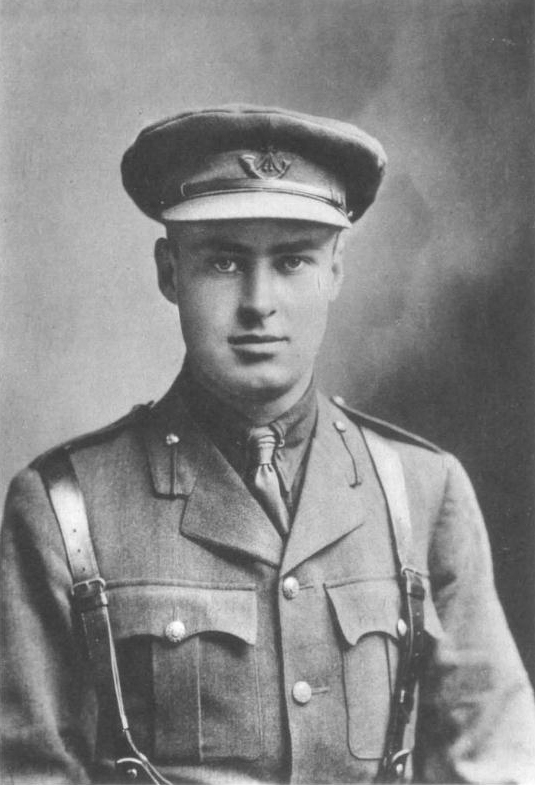
4th Battalion, Oxfordshire & Buckinghamshire Light Infantry
Born 8 June 1892 in St Alban’s Quad, Merton College
Killed in action 22 August 1917, aged 25
Commemorated on the Tyne Cot Memorial, Belgium.
William Scott was the son of George Rodney Scott, a Fellow of the College, and Florence Mary, née Seymour.
He was educated at Rugby School, leaving in 1910 to attend McGill University in Montreal, Canada.
At the outbreak of war he was unable to obtain admission to a Canadian regiment as he was short sighted; he therefore returned to England and received a commission in the Oxford and Bucks Light Infantry in January, 1915. (His grandfather had served with the regiment at Waterloo.)
He was made temporary Captain in May 1916; he was wounded in July, and again in November of that year. After this second wounding he suffered from ‘trench fever’, but was able to return to France at the end of May the following year.
He was killed in action while leading his company in a successful attack on enemy trenches near the village of St Julien, on 22 August 1917.
GK Rose, in his book The Story of the 2/4th Oxfordshire and Buckinghamshire Light Infantry, described Scott’s death:
“Scott had been hit already in the advance and behaved finely in refusing aid until he had dispatched a message to Headquarters. While he was doing so three or four bullets struck him simultaneously and he died.”
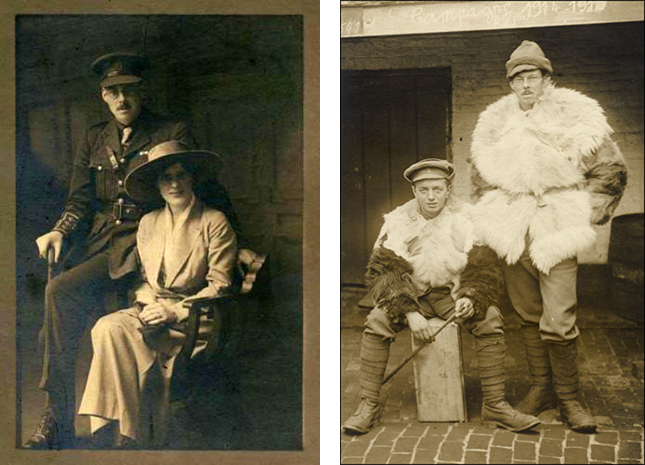
Royal Army Medical Corps, attached to the Royal Air Force
Born 6 September 1889 in Golders Green, London
Died 4 July 1919, aged 29
Buried at Northbrook Cemetery, Swanage, Dorset.
Clement Sells was the son of Vincent Perronet Sells of Highfield, Oxford. He married Mary A Jones in December 1918.
He was educated at Magdalen College School, and came to Merton as an Exhibitioner in 1908.
He enlisted in the 2nd London Field Ambulance, RAMC on the outbreak of hostilities in 1914 and went out to France in January the following year. After several months, he returned home to complete his medical studies at the Middlesex Hospital.
He went back to France in January 1916, where he participated in the Somme operations. Invalided home with trench fever in October, Sells returned to the front in early 1917, when he was attached to the 1/8th Middlesex Regiment. He was subsequently present at Vimy Ridge that April, and was awarded the Military Cross, for gallantry during fighting west of Cambrai, on 3 June 1918.
He next took up an appointment with 83rd Wing, Royal Air Force, but was again invalided home in December 1918, and in March 2019, and died as a result “of the after-effects of trench fever” at the RAF Hospital, Swanage, Dorset, on 4 July 1919.
1/4th Battalion, Oxfordshire & Buckinghamshire Light Infantry
Born 1892 in Headington, Oxfordshire
Died 14 August 1916
Commemorated on the Thiepval Memorial, Somme, France.
3rd (Reserve) Battalion, attached to 1st Battalion, Cheshire Regiment
Born October 1895 in Chester
Died of wounds 30 August 1918, aged 22
Buried at Terlincthun British Cemetery, Wimille, Pas-de-Calais, France. Also commemorated on the war memorial at Upton, Cheshire.
George Simpson was the son and only child of Ricardo Simpson and Florence, née Mayall, of Newton Bank, Chester.
He was educated at the Leas School, Hoylake, Wirral, and at Radley College, Abingdon.
He enlisted on 15 August 1914, and was commissioned as a temporary Second Lieutenant on 22 September. He went to France in March 1915, his rank being made permanent on 7 April.
He died of wounds received in action, on 30 August 1918.
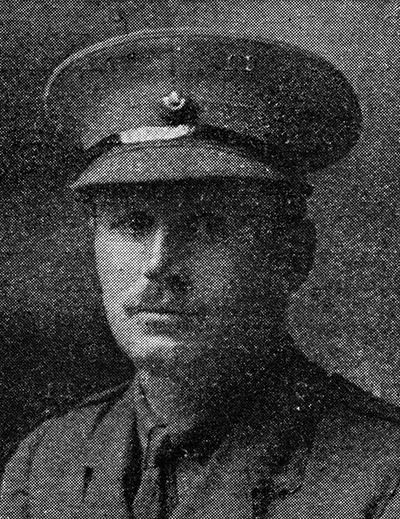
7th (Service) Battalion, King’s Royal Rifle Corps
Born 27 October 1883 in Hersham, Surrey
Killed in action 30 June 1915, aged 31
Buried at Bedford House Cemetery, Ypres, West Flanders, Belgium. Also commemorated on the war memorials at Eton College, St Peter’s church, Hersham, and St Mary Oatlands church, Weybridge.
Richard Somers-Smith was the second son of the athlete Robert Vernon Somers-Smith & Mary Gertrude Wellington, née Radcliffe, of ‘Burlea’, Westcar Lane, Weybridge, Surrey.
He was educated privately and at Eton College. He rowed for Eton, and Merton, and rowed No 2 for Oxford in 1904, and bow oar in 1905. In the words of one of his rowing coaches he was “the most lion-hearted man who ever sat in a boat.”
After leaving Merton he travelled to Ceylon (now Sri Lanka) as a planter, returning at the outbreak of war.
He enlisted in January 1915, was commissioned as a temporary Second Lieutenant in February, and his battalion were sent to the Western Front in May.
He was killed in action at Hooge, on 30 June 1915; a bursting shell had buried some of his men, he ran to dig them out and was struck by a piece of shrapnel and killed instantly. His brother John was also killed in action a year and a day later.
(His middle name is sometimes given as Willingdon and his surname as Sommers-Smith.)
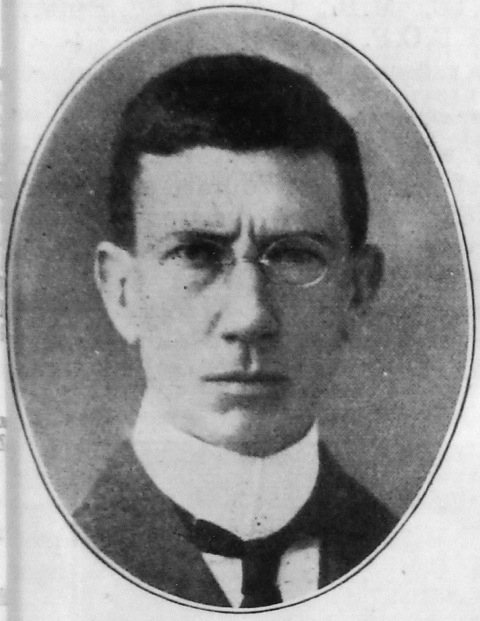
Royal Army Medical Corps
Born 20 June 1877 in Eastbourne, East Sussex
Died 8 November 1918, aged 41
Commemorated on the Alexandria (Hadra) war memorial, Egypt.
Herbert Spurrell was the only son of Herbert Spurrell and Harriet Rebecca, née Blaxland, of West Norwood, London.
He was a biologist, physician and author, a Fellow of the Zoological Society, and discovered and classified fish, reptiles and frogs from the Gold Coast and South America. Among the species named after him are Spurrell's Free-tailed Bat and Spurrell's Woolly Bat.
He took his BA in 1899, and then continued his studies at the London Hospital and the London School of Tropical Medicine. He became Assistant Professor Physiology at the University of New Orleans for a year, and held medical appointments in West Africa and South America.
On his return from Colombia in 1915, Herbert was sent abroad by the Government on a secret mission, and in 1916-17 acted as Temporary Medical Officer at Obussi, South Ashanti. He was commissioned into the RAMC on 1 June 1917, and served in Egypt, where he sat on the RAF Medical Board.
He died of pneumonia contracted while on active service, at No. 19 General Hospital, Alexandria on 8 November 1918.
4th (Extra Reserve) Battalion, attached to 1/5th Battalion, Prince of Wales’s Own (West Yorkshire Regiment)
Born 1897 in Knaresborough, West Yorkshire
Killed in action 25 April 1918, aged 20
Commemorated on the Tyne Cot Memorial, West Flanders, Belgium. Also commemorated on the Beckwithshaw war memorial, North Yorkshire; and in the St Bees School chapel.
Philip Stott was the son of Revd Herbert Robert Stott and Charlotte Ellen, née Harris, of Beckwithshaw Vicarage, Harrogate.
He was educated at St. Bees School, where he was House Prefect and Head Boy, and was elected to Merton as an Exhibitioner in 1916, but did not come up.
He enlisted in November 1916, and served in France and Belgium.
He was killed in action at Wytschaete Ridge, on 25 April 1918.
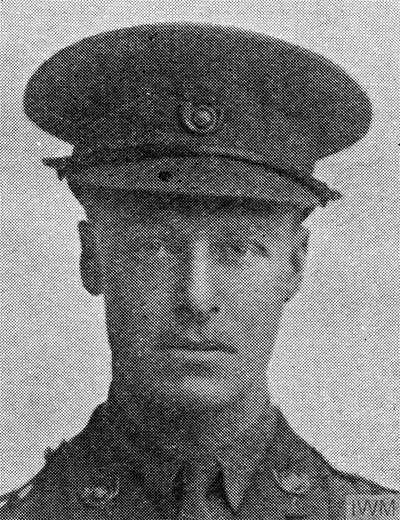
1/4th Battalion, King’s Own (Yorkshire Light Infantry)
Born 13 March 1893 in Doncaster, West Yorkshire
Killed in action 25 May 1915, aged 22
Buried at Bois-Grenier Communal Cemetery, France. Also commemorated on the Queen Elizabeth Grammar School war memorial, Wakefield.
Christopher Sugden was the only son of Thomas Babington Sugden and Edith Constance, née Nicholson, of St John’s Lodge, Wakefield.
He was educated at Wakefield Grammar School, and matriculated in 1912.
He enlisted on 1 September 1914, and served in France.
He was killed in action at Armentières, on 25 May 1915.
8th (Service) Battalion, Rifle Brigade; 1/14th (County of London) Battalion (London Scottish), London Regiment
Born 1 November 1888 in Edinburgh
Killed in action 11 May 1917, aged 28
Commemorated on the Arras Memorial, Pas-de-Calais, France.
Frederick Sword was the eldest son of Frederick Stewart and Catherine Sword of ‘Teneriffe’, Carlisle Road, Eastbourne; he had two brothers and three sisters.
He was educated at Uppingham School, Rutland, and came up to Merton in 1908. Before the war he was a farmer in Argentina.
He enlisted in the 8th (Service) Battalion, The Rifle Brigade, on 11 January 1915, and was made Temporary Second Lieutenant on 3 June. However, on 18 November 1915 he was dismissed from His Majesty’s Service for drunkenness on duty.
He re-enlisted in March 1916 with the London Scottish (giving his occupation as ‘Farmer’), and it was during an attack near Wancourt, Pas-de-Calais, that he is presumed to have been killed in action, on 11 May 1917.
18th (Service) Battalion, Prince of Wales's Own (West Yorkshire Regiment)
Born 2 February 1889 in Leeds
Killed in action 3 May 1917, aged 28
Commemorated on the Arras Memorial, Pas-de-Calais, France. Also commemorated on the war memorial at St Michael’s Church, Headingley, Leeds.
Bernard Tooke was the eldest son of William Oldham Tooke and Jane Ann, née France, of Headingley, Leeds.
He was educated at Bradford Grammar School, and came up to Merton in 1907. After University he was on the staff of the Leeds Education Offices.
He enlisted on 10 September 1914, and was commissioned on 9th March the following year. He served in France, and was Mentioned in Dispatches in 1917.
He was killed in action whilst leading his company at Bullecourt, on 3 May 1917.
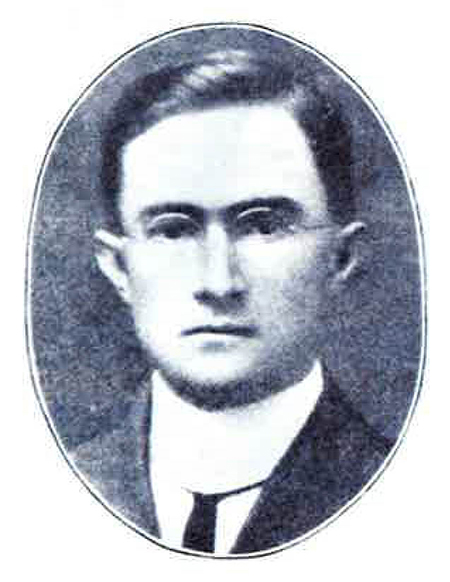
328th US Infantry, 82nd Division
Born 11 December 1891 in Kobe, Japan
Died 27 September 1919 in Cairo, Grady County, Georgia, USA, aged 27
Buried at Cedar Grove Cemetery, Lebanon, Wilson County, Tennessee, USA.
Hatton Towson was the son of missionaries Revd Willard E Towson and Emily, née Hatton, of Ashbeven, Georgia, USA.
He was educated at the Webb School, Bell Buckle, Tennessee, and Emory College, Georgia—where he won the College’s tennis championship cup for three successive years—before coming to Merton as a Rhodes Scholar in 1913.
Refusing to claim the exemption open to him as a Theology student, he served with the US Army in France. He was discharged in January 1919 as unfit for service due to his wounds.
After the war he returned to Merton before going back to the United States; he was offered the role of Pastor of the Pelham Circuit of the South Georgia Methodist Conference, but declined as he planned to continue his missionary work in Japan.
He died on 27 September 1919, failing to recover from an operation made necessary by the wounds he received on active service at the Battle of Argonne.
7th (Service) Battalion, attached to 2nd Battalion, Princess Charlotte of Wales's (Royal Berkshire Regiment)
Born 31 July 1892 in Northampton
Killed in action 2 December 1917, aged 25
Commemorated on the Tyne Cot Memorial, West Flanders, Belgium.
Stewart Troup was the son of Mr William Branson Troup, and Alice, née Houghton, of 2 Gledstanes Rd, Kensington, London.
He was educated at St Paul’s School, and came up to Merton in 1911.
He enlisted in September 1914, and served in France, Salonika, and Belgium.
He was killed in action at Passchendaele, on 2 December 1917.
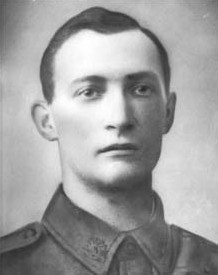
10th Australian Light Horse Regiment
Born 18 July 1888 at Dardanup, Western Australia
Killed in action 7 August 1915, aged 27
Buried at Ari Burnu Cemetery, Anzac Cove, Gallipoli, Turkey.
Alexander Turnbull was the son of Alexander (Alec) P Turnbull and Marian R, née Lee Steere, of 18 St George’s Terrace, Perth, Western Australia.
He was educated at Perth High School (previously and later Hale School), Western Australia, and came to Oxford in 1907 on a Rhodes Scholarship – the fourth Rhodes Scholar from Western Australia – graduating with a first-class degree, one of only three awarded in Jurisprudence in 1910. Whilst at Merton he rowed and played football for the College. After University he spent a year training with a London legal firm, before returning to Australia and practicing as a barrister and solicitor in Perth.
He enlisted on 6 October 1914, and served at Gallipoli.
He was killed in action at The Nek, Gallipoli, on 7 August 1915.
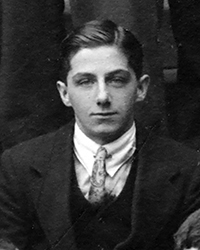
13th (Reserve) Battalion, Sherwood Foresters (Nottinghamshire & Derbyshire Regiment); 103rd Squadron, Royal Air Force
Born 24 February 1895
Killed in action 5 June 1918, aged 23
Buried at Vignemont French National Cemetery, Oise, France.
Henry Turner was the son of Arthur, a carpenter, and Betsy Turner, of 41 Lynmouth Road, Sheffield.
He was educated at the Central Secondary School, Sheffield, and took a double first in 1915.
He enlisted on 16 July 1915, and served in France, until September 1916 as a Second Lieutenant with the Sherwood Foresters, then as a Captain and Flight Commander in the RAF. He was awarded the Croix de Guerre in April 1918.
He was shot down by the German flying ace Rudolf Berthold whilst piloting his Airco DH.9 north of Saint-Just-en-Chaussée, on 5 June 1918. His observer, Second Lieutenant George Webb, was also killed.
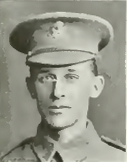
8th (Service) Battalion, Duke of Wellington’s (West Riding Regiment)
Born 21 August 1885 in Bradford
Killed in action 8 December 1916, aged 31
Commemorated on the Thiepval Memorial, Somme, France. Also commemorated on a brass plaque at Bradford Magistrates Court.
Wilfrid Vint was the third son of Charles John Vint and Eliza Hannah, née Terry, of Richmond House, Great Horton Rd, Bradford. Both his nephew and his brother were Mertonians.
He was educated at Ghyll Royd School, Ilkley, and Shrewsbury School, and came up to Oxford in 1904. He coxed the Shrewsbury VIII for five years, the College VIII in 1907, and the University Trial VIII in 1905. After University he practiced as a solicitor, working for the Great Northern Railway in King’s Cross, London, before joining his father’s firm, Vint, Parkinson, Hill & Killick in Bradford.
He enlisted on 27 March 1916, and served in France.
He was killed in action near Beaucourt, on 8 December 1916.
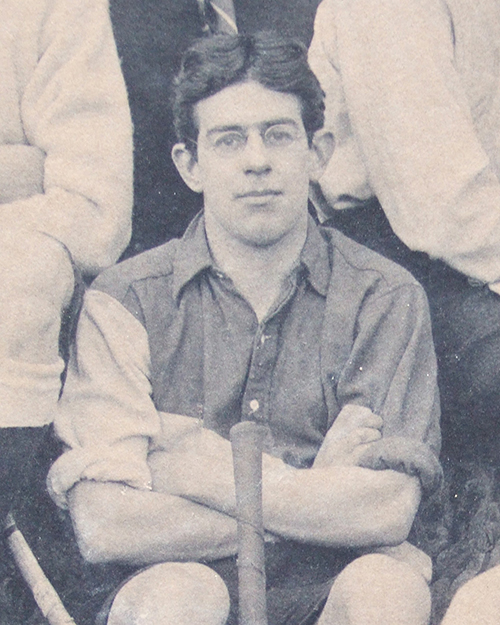
10th (Service) Battalion, Worcestershire Regiment
Born 22 June 1892 in Birkenhead, Merseyside
Killed in action 22 July 1916, aged 24
Commemorated on the Thiepval Memorial, Somme, France. Also commemorated by an oak and mahogany crucifix on a cairn beside the Upper Road to High Wood from Bazentin-le-Petit.
Houston Wallace was the son of William Hamilton Wallace and Emily Constance, née Heap, of Birkenhead.
He was educated at Fettes College, Edinburgh—where he was a school prefect, captain of cricket and hockey and a Sergeant in the OTC—before coming to Merton in 1912.
He was commissioned as a Second Lieutenant on 2 October 1914, and was sent to France the following July. He saw action at Ypres and the Somme.
He was killed in action attacking a German machine gun post at Bazentin-le-Petit, on 22 July 1916. His maternal aunt presented eight silver bugles to his regiment in his memory, and in 1924 erected a large wooden crucifix close to where he was killed, which still stands there today.
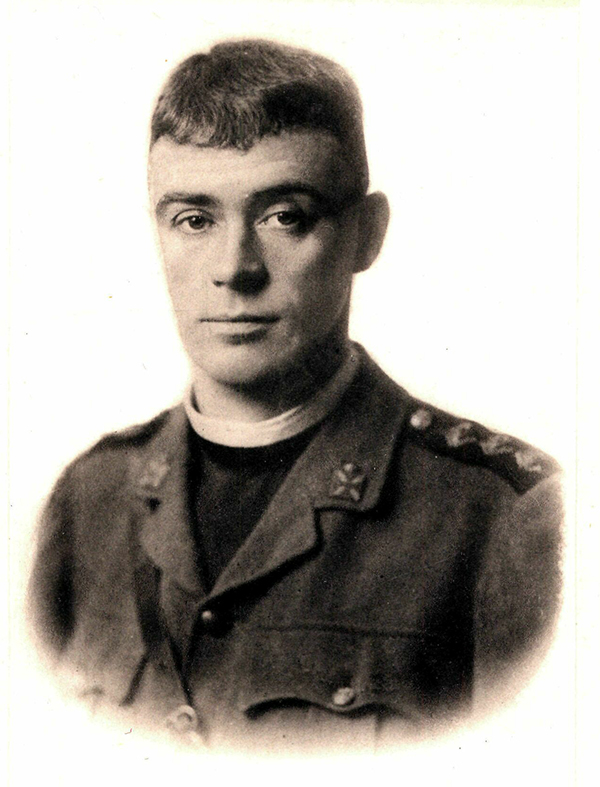
Army Chaplains’ Department, attached to 6th (City of London) Battalion (Rifles), London Regiment
Born 6 January 1885 in Tenbury, Worcestershire
Died of wounds received in action 30 May 1918, aged 33
Buried at Bagneux British Cemetery, Gezaincourt, France. Also commemorated on the war memorial at Shrewsbury Cathedral; and on the memorial to the Royal Army Chaplains Department in the Royal Garrison Church of All Saints, Aldershot, Hampshire.
Charles Whitefoord was the elder son of Samuel Charles Whitefoord and Mary, née Mills.
He was educated at Rugby School, and came up to Merton in 1903. After obtaining his degree, he served as a priest in the Roman Catholic Diocese of Shrewsbury.
He enlisted on 29 November 1916, and served in France.
He had gone with an officer to find a grave in a village near the front line and, as they were returning, he was wounded by shell fire and died soon after reaching the 3rd Canadian Hospital at Étaples, on 30 May 1918. An officer who served with him later wrote:
“One incident will show the spirit in which he worked among us. He was in a ruined village about a thousand yards from the fighting. Shells were falling, glass and bricks were flying about. Father Whitefoord found a man who had lost his steel helmet. In an instant he handed his own to the soldier, and then carried on excellent work in succouring the wounded.”
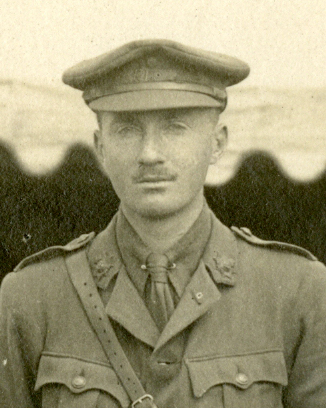
10th (Service) Battalion, Hampshire Regiment
Born 9 May 1894 in Brighton, East Sussex
Killed in action 10 August 1915, aged 21
Commemorated on the Helles Memorial, Turkey.
Philip Williams was the second son of Harry Montague Williams and Harriette, née Baker, of Lee House, Dyke Rd, Brighton.
He was educated at Brighton College, where he played in the cricket XI in 1912 & 1913 and was sergeant in the Officer Training Corps, and matriculated at Merton in 1913.
He enlisted on 1 September 1914, was appointed Second Lieutenant in October of that year, and made a Lieutenant in June 1915.
He was killed in action on the slopes of Chunuk Bair, on 10 August 1915, five days after the Hampshires had arrived in Gallipoli.
3rd (Reserve) Battalion, attached to 5th (Service) Battalion, Oxfordshire & Buckinghamshire Light Infantry
Born 11 October 1891 in Bengal, India
Died of wounds received in action 29 September 1915, aged 23
Buried at Poperinghe New Military Cemetery, Belgium. Commemorated on a plaque in St Mary Magdalene Church, Littleton, Surrey; and on the Beaumont College war memorial.
Almeric Wood was the son of Richard Somerville Wood and Frances Harriet, née Moodie, of Chelsea, London.
He was educated at Beaumont College, Windsor, where he was captain of the school and captain of the boats, and took first class honours in History at Merton in 1913. He rowed in the Merton VIII at Henley in 1912 and 1913.
He enlisted on 15 August 1914, and served in France and Flanders.
He was hit by shellfire whilst directing his platoon in an assault on Bellewaarde Farm in the Ypres sector, and his leg was shattered. He died of his wounds on 29 September 1915.
15th (Reserve) Battalion, The Duke of Cambridge's Own (Middlesex Regiment), attached to 16th (County of London) Battalion (Queen's Westminster Rifles), London Regiment
Date of birth unknown
Killed in action 7 November 1915
Buried at Potijze Burial Ground Cemetery, Ypres, West Flanders, Belgium.
William Wood was the son of JW Wood of ‘Whyteleafe’, 41 Church Walk, Worthing, West Sussex.
He enlisted on 8 October 1914 and served in France.
He was killed in action, on 7 November 1915.
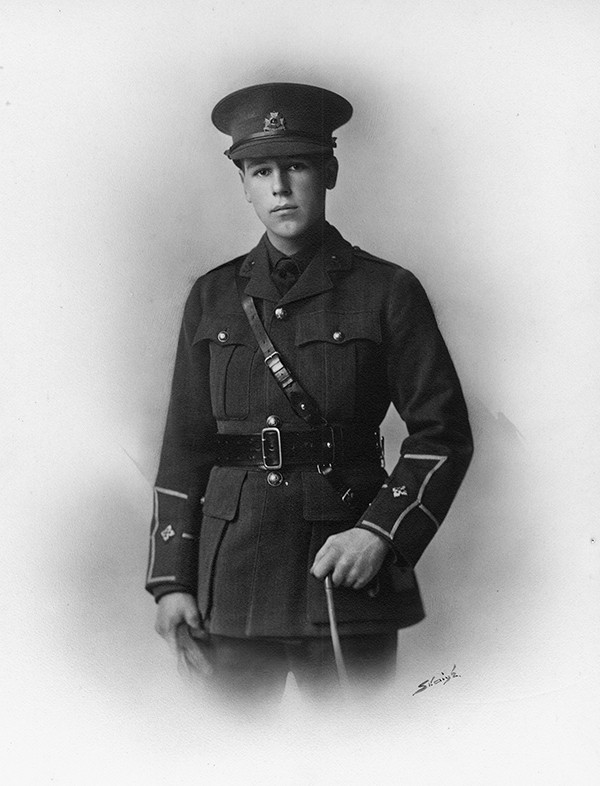
10th (Reserve) Battalion, Bedfordshire Regiment, attached to 69th Company, Machine Gun Corps
Born 23 June 1895 in Edmonton, London
Killed in action 21 March 1916, aged 20
Buried at Tranchée de Meknès Cemetery, Aix-Noulette, Pas-de-Calais, France.
Charles Woolnough was the elder son of Charles Walter Woolnough, of Highgate.
He was educated at Highgate School, London, where he was a keen gymnast, and came up to Merton in 1914.
He was gazetted to the Bedfordshire Regiment on 26 January the following year, and then made a special application to be transferred to the Machine Gun Corps.
He was shot by a sniper while in action near Loos, less than a month after leaving England, on 21 March 1916.
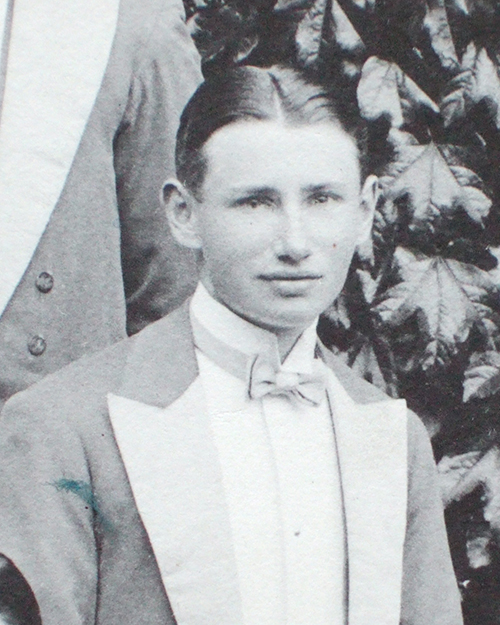
Infantry Regiment 75, Cavalry
Born 17 April 1893
Killed in action 23/24 March 1918, aged 24
Buried at Fourdrain Communal Cemetery, Aisne, France.
Carl von Wurmb was the son of Major Louvard von Wurmb, of Thüringen, Germany.
He was educated at the Grand Ducal Wilhelm-Ernst Gymnasium, Weimar, and at the Universities of Geneva and Munich, before coming to Merton as a Rhodes Scholar to read Law in 1912. A keen rower, he took part in both torpids and summer eights while at the College.
During the war he fought on both the Western and Eastern Fronts, and was awarded the Iron Cross (1st & 2nd Class).
He was killed in action, on 23/24 March 1918.
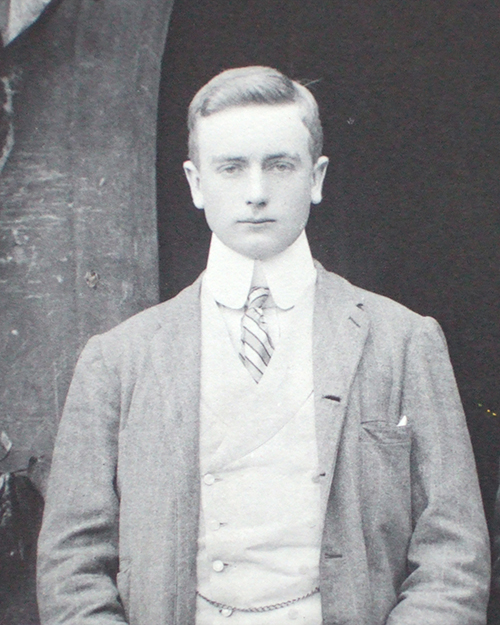
9th (Service) Battalion, Loyal North Lancashire Regiment
Born 1880 in Chorlton, Lancashire
Killed in action 15 May 1916, aged 36
Buried at Écoivres Military Cemetery, Mont-Saint-Éloi, Pas-de-Calais, France. Commemorated on memorials in Temple Church, London, and Reigate and Banstead Town Hall.
Charles Yates was the second son of Michael Lavery Yates and Mary Ann, née Livsey, of River Dale, Didsbury, Manchester.
He enlisted in November 1914, and served in France and Belgium.
He was killed in action at Vimy Ridge, on 15 May 1916.
122nd Field Regiment, Royal Artillery
Born 28 October 1916 in Horsham, West Sussex
Killed in action 10 February 1942, aged 25
Buried at Kranji War Cemetery, Singapore
George Allan was the son of George Albert Thomas Allan OBE, and of Mary Louise Allan, née Barnes, of Laleham, Staines, Middlesex.
He was educated at St Paul’s School, and took a third in Geography in 1938.
The 122nd Field Regiment, after training in the UK, went out to the Far East, arriving in Malaya on 11 March 1941. They suffered thirteen war casualties during the Malayan Campaign, of whom Allan was one, up until the naval base at Singapore surrendered on 15 February 1942.
21 Squadron, RAF Volunteer Reserve
Born 10 June 1920 in Lambeth, London
Killed in action 31 March 1941, aged 20
Commemorated on the Runnymede Memorial, Englefield Green, Surrey.
Thomas Alston was the son of Archibald McD Alston and Nellie M, née Stephenson, of Bordon, Surrey.
He was educated at Farnham Grammar School; he left Merton to join up during Hilary Term 1940.
He was the navigator in a Bristol Blenheim Mk IV, Serial Number R3884, that was shot down by a Kriegsmarine Vorpostenboot (a German Navy flakship) off the Dutch Island of Texel, on 31 March 1941 whilst on patrol over the North Sea.
Devonshire Regiment, attached 5th Battalion, 17th Dogra Regiment, Indian Army
Born 4 February 1918 in Godstone, Surrey
Killed in action 10 February 1942, aged 24
Buried at Thanbyuzayat War Cemetery, Burma; also commemorated on a panel in Charterhouse School Memorial Chapel, Godalming, Surrey.
Richard Ball was the son of Thomas Alexander Ball & Ada Graham, née Mason, of Godalming, Surrey.
He was educated at Charterhouse School, and took a third in History in 1939.
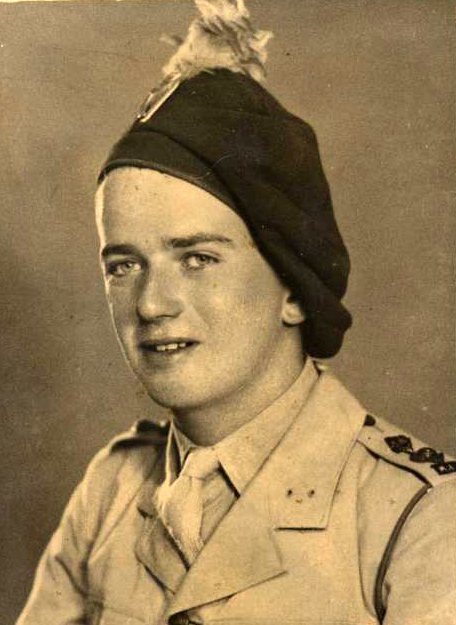
1st Battalion, London Irish Rifles (Royal Ulster Regiment)
Born 6 June 1921 in the District of Devonshire and Paget, Bermuda
Killed in action 5 December 1943, aged 22
Buried at Cassino War Cemetery, Italy. Also commemorated on the war memorials of Borden Grammar School, the London Irish Rifles, and Sittingbourne.
Terence Barry was the second son of Patrick Barry, an admiralty clerk, and his wife, Margaret, both of whom originally hailed from County Cork, Ireland.
Educated at St Edward’s Roman Catholic School in Sheerness, and Borden Grammar School, he came up to read Modern History, but his university career was soon interrupted by the exigencies of the Second World War: while still a student, he served in the University’s Senior Training Corps and then enlisted into a territorial battalion of the Royal Fusiliers. Awarded second class honours in the first part of his degree, Barry was selected for officer training emerging five months later with a second-lieutenancy in the 1st London Irish Rifles (LIR).
Barry was posted to Iraq, and from there to Egypt in June 1943. Only one month later, however, his battalion embarked for Sicily, seeing action there for the first time. Following the invasion of the Italian mainland in September 1943, he embarked for Salerno and then pushed north toward the Gustav Line, a formidable enemy position that ran from one side of the Italian Peninsula to the other, blocking the advance on Rome. The outer bastion of this position, a mountain known as Monte Camino, had to be captured before the Allies could even contemplate launching an assault on the Gustav Line itself. Following the failure of a previous attempt, the task fell to 1st LIR as part of the 56th London Division. The assault began on 3 December 1943 and, after eight days’ bitter fighting, Monte Camino was unexpectedly abandoned by the enemy. Some 80 men from 1st LIR lost their lives in the attack, among them Barry, killed by enemy mortar fire while leading a patrol on 5 December 1943.
Posthumously mentioned in despatches for his gallant conduct, Terence was initially buried in Mieli, a small village at the foot of Monte Camino, before being interred in Cassino War Cemetery.
Born 26 February 1905 in Wembley, Middlesex
Died 24 February 1941, aged 35
Robert Byron was the son of Eric Byron and Margaret, née Robinson, of Southall Manor, Middlesex. He was a distant relative of the poet.
He was educated at Eton College, where he was active in the Society of Arts, and took a third in Modern History in 1925.
He was a travel writer, best known for The Road to Oxiana, an account of his visit to Persia and Afghanistan, published in 1937.
He was a war correspondent who died after his ship, the SS Jonathan Holt, was torpedoed by the German submarine U-97 off Cape Wrath, Scotland. His body was never found.
1st (Perak) Battalion, Federated Malay States Volunteer Force
Born 28 December 1898, in India
Killed in action 15 February 1942, aged 43
Commemorated on the Singapore Memorial; also on the Singapore Malayan Civil Service War Memorial.
Herbert Cockman was the son of George Herbert Cockman and Mabel Marion, née Cartland. He married Mary (Mollie) Campbell, née Rutter, of Sherborne, Dorsetshire, at St Andrew’s Cathedral, Singapore, on 5 November 1924.
He was educated at St Paul’s School, and before coming to Merton he served as a Lieutenant in the Royal Air Force during the First World War, winning the Distinguished Flying Cross.
His DFC citation reads:
“On 25th September [1918], when on a long-distance bombing raid, this officer performed very gallant service. Heavily attacked on the return journey, he was severely wounded, his left arm being shattered and his right leg hit. Owing to his wounds and loss of blood he was unable to control his machine [an Airco DH9a single-engined light bomber], but by instructing his observer he was able to keep his formation until he crossed the lines. Owing to his condition he had the greatest difficulty in landing, and it was only due to, his determined courage that he succeeded in doing so.”
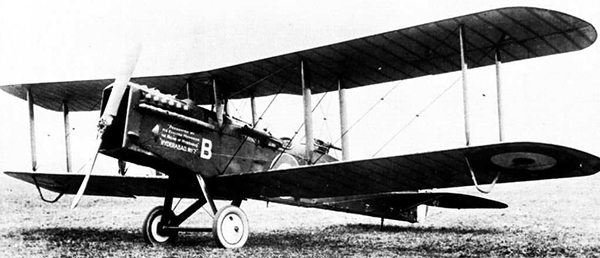
He served in the British colonial administration in Malaya between the wars, and was made Captain in the Malay Volunteer Infantry in 1935. He was also a member of the Perak Rugby Football Club, Ipoh.
Major Cockman was tied to a tree and shot by the Japanese at Geylang, Singapore, after being captured in action in February 1942.
After the Second World War, a street in Ipoh was named Cockman Street in his honour. (Today the street is known as Jalan Datuk Onn Jaafar.)
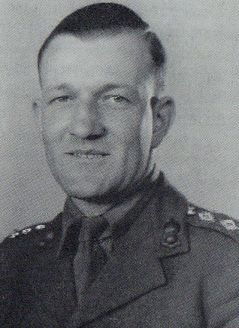
1 Bombardment Unit, Royal Artillery
Born 11 April 1912 in Wincanton, Somerset
Died of wounds 6 November 1944, aged 32
Buried at Oostende New Communal Cemetery, Belgium; also commemorated on a panel in Charterhouse School Memorial Chapel, Godalming, Surrey; and in St Peter & St Paul Church, Wincanton.
Thomas Coulson, who was known as ‘Bev’, was the first son of Dr Thomas Edmund Coulson and Eva Mary Coulson, and the husband of Vera, née Leigh, of Wincanton, Somerset. Thomas and Vera had two sons, Peter and Bevis.
Coulson was at Charterhouse School from 1925 to 1930, and whilst at Merton he boxed for the University.
He remained a keen cricketer and association footballer, playing both sports for Wincanton teams. He was offered a place in the Somerset County cricket team but declined.
He joined the army at the outbreak of war, gaining a commission in the Royal Artillery, and saw service in Iceland and Northern Ireland before specialising as a Gunnery Officer.
Serving as a Bombardment Liaison Officer on board LCG11 during the landings on Walcheren, he was mortally wounded when the landing craft was hit by fire from an on-shore German gun battery. He died of his wounds on 6 November 1944, aged 32.
Oxford and Buckinghamshire Light Infantry, attached to 1st Battalion, Royal Welch Fusiliers
Born 25 December 1915 in Knaresborough, West Yorkshire
Died of wounds received in action 14 April 1944, aged 28
Buried at Kohima War Cemetery, India; also commemorated on a panel in Charterhouse School Memorial Chapel, Godalming, Surrey.
Richard Darvell was the son of Sydney Darvell and Elsie Winifred, née Jones, of Lechlade, Gloucestershire.
He was at Charterhouse School from 1929 to 1933.
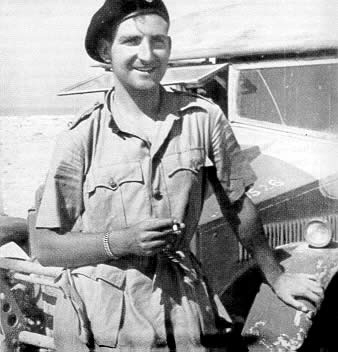
2nd Derbyshire Yeomanry, attached to The Nottinghamshire (Sherwood Rangers) Yeomanry
Born 24 January 1920 in Tunbridge Wells, Kent
Killed in action 9 June 1944, aged 24
Buried at Tilly-sur-Seulles War Cemetery, Calvados, France.
Keith Douglas was the son of Captain Keith Sholto Douglas MC and Marie Josephine Castellain.
He was educated at Christ’s Hospital School in Sussex, before coming to Merton as an Exhibitioner to read History.
His posthumously-published collection, From Alamein To Zem Zem, is regarded as amongst the finest works of poetry to have come out of the Second World War.
1st Battalion Oxford and Buckinghamshire Light Infantry, attached to 8th Battalion Durham Light Infantry
Born 4 January 1920 in Fulham, London
Killed in action 11 February 1942, aged 22
Buried at El Alamein War Cemetery, Egypt.
Richard Dudman was the youngest of the three sons of William James Dudman, and Nora Annie, née Curtis. William and Nora were killed by a German air raid at Ealing, London, on Thursday 26 September 1940, aged 52 and 49 respectively.
Richard was educated at St Paul’s School, and came up to Merton with a Classical Postmastership, leaving in 1940 to join up.
Richard’s brother Peter was killed in action in Italy in November 1943, and the following year his eldest brother James was also killed whilst flying on a bombing mission over Europe.
4th Regiment, Royal Horse Artillery
Born 1911 or 1912
Killed in action 22 September 1940, aged 28
Buried at El Alamein War Cemetery, Egypt.
William Evers was the son of The Revd William Henry Evers, and Marion, née Keightley, of Cowley, Oxford.
He came to Merton as a Harmsworth Senior Scholar, having been educated at Kingswood School and taken a first in History from Oriel in 1935.
He was made Second Lieutenant on 10 May 1939, having served in the Oxford University Contingent of the Officers’ Training Corps.
The Canadian poet George Whalley wrote “W.K.E.” in his memory:
It is his hands that I remember:
scholarly hands with the firm
delicacy of a musician’s.
When he held a book
his fingers savoured the texture
of paper and binding.
It seemed as though he knew
by touch the mysterious
artistry of the letter
perfectly formed, the perfect
balance of a page;
and when you watched his strong
sensitive fingers you shared
the depth of his delight.You cannot imagine hands
so spiritual and gentle
turned to the uses of war.
It is not to be wondered at
that in the first autumn
before the bitter fighting
startled the desert solitude
a random bomb killed him.
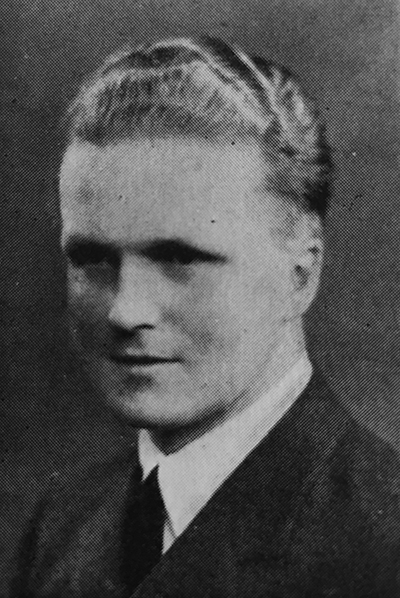
RAF
Born 1 July 1911 in Lambeth, London
Died whilst a Prisoner of War 1 December 1942, aged 31
Buried at Sydney War Cemetery, Australia.
Francis Frow was the son of George Holyoake Frow and Emily Ellen, née Shaughnessy. He married Jean Mary, née Boughton, of Folkestone, in January 1937.
He was the eldest of three brothers, and was educated at Dulwich College, where he was captain of the Shooting VIII, Under Officer in the Corps, captain of the Second XV, an editor of The Alleynian, and Captain of the School. He came up with an exhibition in Classics and took second class honours in both Mods. and Greats. He shot for Oxford vs Cambridge in the Chancellor's Plate for four years, being captain in 1934. He also shot for Oxford with the match rifle, in the Snap and Rapid and in the Revolver IV. In 1933 he finished 57th in the King's Hundred and in the following year represented Oxfordshire in the County championship as well as shooting for the Dulwich Veterans on four occasions.
He joined the RAF Reserve as a pilot officer in August 1932, and went to Cranwell on coming down from Oxford, being granted a permanent commission in September 1934 as a flying officer. On being posted to 25 Squadron in Fighter Command he flew Hawker Furies until 1936, and then for two years he was in Training Command, flying Blenheims. After doing a Chinese language course in London he sailed for Peking early in 1939 to continue his study of the language.
When war was declared he was recalled to Singapore for duty and later was posted to Ceylon, returning to Singapore in November 1941. When the Japanese overran the island he escaped to Java in February 1942, after which no news of him was received until September 1943, when it was reported that he had died of pneumonia & acute dysentery whilst a POW in Japan.
HMS Furious, Royal Naval Volunteer Reserve
Born 19 November 1917 in Southgate, Middlesex
Killed in action 30 June 1941, aged 23
Commemorated on the Lee-On-Solent Memorial, Hampshire.
Anthony Hallett was the son of Basil Frederick Hallett and Kate, née Mitchener, of Southgate, Middlesex.
He was educated at Caldicott Prep School, Farnham Royal, and The Leys School, Cambridge, where he was a House Prefect, a noted scholar, and won Second Colours at Hockey, Football and Swimming.
Whilst at Merton he captained the College’s hockey team; he took a third in Jurisprudence in 1939.
Whilst serving with 807 Squadron, Fleet Air Arm, he was killed in a deck accident on board the aircraft carrier HMS Furious; a Hawker Hurricane which was being sent to the besieged island of Malta crashed during launch, and its fuel tank caught fire, killing nine men and injuring four others.
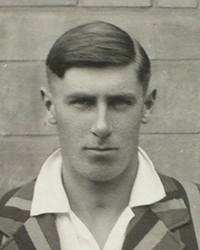
59 Squadron RAF Volunteer Reserve
Born 4 July 1915 in Cockermouth, Cumberland
Killed 3 December 1945, aged 30
Buried at Rochefort-Sur-Mer Naval Cemetery, France.
John Halliday was the son of John Halliday and Ann Elizabeth, née Gordon, of Oxford. He married Frances Mary, née Furneaux, in 1940.
He was educated at the City of Oxford School. He came up to Merton with a Postmastership. A keen cricketer, he played for the University and captained Oxfordshire in 1938.
He was a passenger on board a B-24 Liberator GR. VIII returning to the UK from the Middle East on 3 December 1945, when it lost a wing and crashed near Rochefort in France, killing all 28 on board.
137th Field Regiment, Royal Artillery
Born 7 March 1918 in Cork, Ireland
Died 15 March 1941, aged 23
Buried at Durrington Cemetery, Wiltshire.
Jervis Head was the son of Raymond Evelyn Head & Margaret Lloyd, née Williamson.
He was educated at Westminster School. He joined up shortly after coming down from Oxford; at the time of his death he was living in Golders Green, North London.
He died at around 7:00pm on 15 March 1941 at Royal Victoria & West Hampshire Hospital, Boscombe, Bournemouth, after a motor accident; his Morgan three-wheeler struck a road island and overturned at the junction of the Bournemouth and Poole roads to Ringwood at Ferndown.
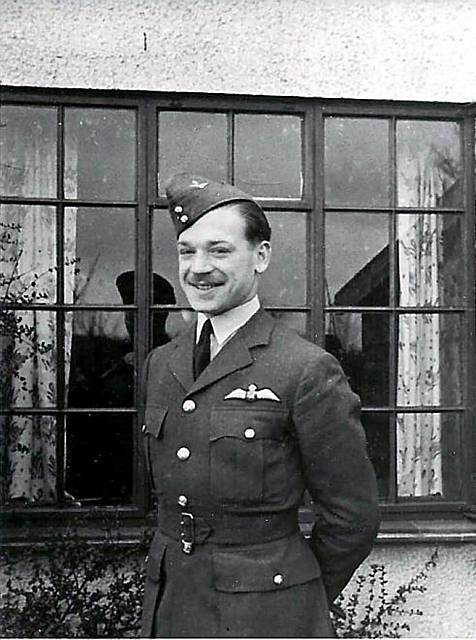
111 Squadron, RAF
Born 13 February 1917 in Oldham, Lancashire
Killed in action 10 July 1940, aged 23
Buried at Noordwijk General Cemetery, The Netherlands.
Peter Higgs was the son of Arthur H Higgs, an electrical engineer with Ferranti, and Alice, née Dunkerley. He was named after his paternal grandfather The Revd Thomas Higgs, a minister at Greenacres Congregational Church from 1891 until his death in 1907. His paternal grandmother Mary Higgs was a local pioneer and social reformer who helped established the borough’s first hostels for homeless women.
Peter and his sister Barbara were tragically orphaned at a young age. Peter stayed on with his grandmother until he went as a boarder to The Royal Masonic School in Bushey, Hertfordshire.
He captained the Merton athletics and swimming teams, and played rugby in the College XV.
A member of the Oxford University Air Squadron whilst at Merton, he joined 111 Squadron, Royal Air Force at Croydon.
On 10 July 1940, radar picked up enemy planes approaching Calais and RAF Hurricanes were scrambled from Manston, Biggin Hill, Hornchurch, Kenley and Croydon in the south-east of England. As the first major battle got under way Peter fired at a lone German Dornier but got too close and clipped his plane. His Hurricane lost a wing and both planes spun out of control crashing into the English Channel below. Peter managed to bail out but drowned after a rescue launch failed to pick him up. He thus became the first and only British pilot to be killed on the first day of the Battle of Britain.
His body was washed ashore on the Dutch coast weeks later on 15 August and he was buried days later in the Noordwijk Cemetery.
1st Airlanding Recce Squadron, Reconnaissance Corps
Born 18 May 1919 in Aston, Birmingham
Killed in action 10 September 1943, aged 24
Buried at Bari War Cemetery, Italy.
Robert Jakeman was the son of Dr Robert Gordon Jakeman and Kate Lilian, née Hird, of Otterhampton, Somerset.
He was educated at King Edward’s School, Birmingham, and came to Merton with a Postmastership in 1938.
He served with 1st Airlanding Recce Squadron, Reconnaissance Corps and took part in the invasion of Italy, during autumn 1943. He was killed near Martina Franca and Locorotondo, in Taranto, on 10 September 1943.
Royal Air Force Volunteer Reserve
Born 24 July 1923 in Ecclesall, West Yorkshire
Killed on active service 21 February 1944, aged 20
Commemorated on the Ottawa Memorial, Canada; and on the Uppingham School and Christ Church, Fulwood war memorials.
Geoffrey Jonas was the son of Robert Jonas JP, and Mary Elizabeth, née Wragg, of Fulwood, Sheffield.
He was educated at Uppingham School.
He was the pilot of a Hudson V, AM729, which failed to return from a training flight in Canada. All four members of the crew were presumed killed.
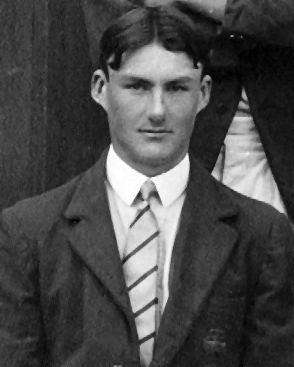
2 W/T Company, Royal Corps of Signals
Born 18 March 1922 in Wimborne, Dorset
Killed while on active service 30 June 1943, aged 21
Buried at Bone War Cemetery, Annaba.
David Keith was the son of The Revd Canon Archibald Leslie Keith, vicar of Wimborne Minster, and Margaret Layard, née Reeves.
He was educated at St Edward’s School, Oxford, where he sang with the school choir, was a talented violinist, and rowed in the School's 1st Rowing VIII in 1940 and 1941 - he was also Head of his House and therefore qualified as a School Prefect.
He was elected as a Classical Exhibitioner in 1941, but joined the Royal Corps of Signals as a Private before matriculating. He was quickly promoted as he found a niche as an instructor of others and was attached to the Regiment's Intelligence Division.
He was involved in an accident on 30 June 1943 in Algeria, when the truck he was a passenger in was in a collision with a Finnish Army vehicle and he died on the spot from injuries incurred.
Three of his six brothers were also killed in the war.
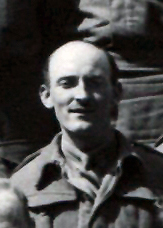
2nd Battalion, The Devonshire Regiment
Born 2 April 1915 in India
Died 14 August 1944, aged 29
Buried at Tilly-sur-Seulles War Cemetery; also commemorated on Exmouth War Memorial.
Walter Kemeys-Jenkin was the son of Captain Ernest and Mrs Edith Kemeys-Jenkin of Glan Mor, Exmouth; and the husband of Kathleen Betty, née Angear.
He was educated at Blundell’s School, Devon, and came up to Merton to read English.
King's Royal Rifle Corps, attached to 4th Parachute Brigade, Army Air Corps
Born 17 April 1913 in Perth, Western Australia
Killed in action 11 September 1943, aged 30
Buried at Bari War Cemetery, Italy.
Peter Lalor was the only son of Captain Joseph Peter Lalor, of the 12th Battalion, Australian Imperial Force, who was killed in action at Bay 700, Gallipoli, on 25 April 1915, and of Hester, née Loughrey, of Melbourne, Victoria, Australia; and the great-grandson of Peter Lalor, who led the only major insurrection against British rule in Australian history, at the Eureka Stockade, Victoria, in 1854.
He was educated at Xavier College, Melbourne, and Melbourne University, and came to Merton to read for the BCL. In 1931 he had enlisted in the Melbourne University Rifles, part of the Australian Militia Forces.
Having enlisted with the King’s Royal Rifle Corps after the declaration of war in 1939, he was part of the British Expeditionary Force that was evacuated from Dunkirk in 1940. Having passed parachute training, he became a member of the 4th Parachute Brigade, which was raised in December 1942 in North Africa.
“Nothing can surpass the excitement of jumping from an aeroplane,” he wrote in a letter home in 1943 to his mother. The letter records how he won his wings “…when, like Keats’ Hyperion, I plunged all noiseless into the deep night…” and how “…the most rigorous physical training…left me aching and stiff all over and thoroughly exhausted.”
Peter Lalor was killed in action at Castellanata, Italy, on 11 September 1943, during Operation Slapstick, one of three landings during the Allied invasion of Italy that month.
Royal Artillery
Born 8 June 1916 in Ecclesall, West Yorkshire
Died 25 February 1943, aged 26
Commemorated at Glyntaff Crematorium, Pontypridd, Wales.
Keith Lucas was the son of Stanley Bennet Lucas and Elsie Ernestine, née Wood, of Highgate, London; in 1940 he married Dorothy Mary, neé Muir, of Waddington Lincolnshire.
He was educated at Highgate School, and came to Merton with a Postmastership.
No.16 Officers’ Training Unit, Royal Air Force Volunteer Reserve
Born 18th November 1912 in Hampstead, London
Killed on active service 13th June 1940, aged 27
Buried at Upper Heyford Cemetery, Oxfordshire.
John MacAlister was one of the three sons of Mertonian Sir (George) Ian MacAlister (1897) and Lady Frances Dorothy, née Seaton.
Educated at St Paul’s School, he was an Exhibitioner in Modern History at Merton. He was an all-round athlete and obtained a Half-Blue at Oxford for swimming and water-polo.
After some years' service in the RAF Reserve, he obtained his commission in the RAF at the beginning of the war.
Whilst piloting a Handley Page Hampden, P4297, on a training flight he crashed at Iwerne Minster, Dorset. His two fellow crewmen, Pilot Officer Edgard Albert Ernest Sedgley and Aircraftman James Lennon, were also killed in the crash.
His brother Peter, also a pilot in the RAF, was killed in action in July 1945.
558 Field Company, Royal Engineers
Born 15 April 1917 in Macclesfield, Cheshire
Died 14 February 1940, aged 22
Buried at Macclesfield Cemetery, Cheshire.
Geoffrey Mellor was the son of Charles William and Eliza, née Poole, of Macclesfield.
Educated at The King's School in Macclesfield, he was an Exhibitioner in Modern History at Merton.
Before the war he was an articled clerk with Hansford & Hansford in Macclesfield, and is commemorated on the Roll of Honour held by the Library of The Institute of Chartered Accountants in England and Wales.
He died in a military hospital at Melton Mowbray, barely three weeks after being called up.
His former Headmaster at The King’s School, addressing the school, said:
“I can think of no more striking commentary on the utter and ghastly futility of war … that the first fellow from this school to die on military service and as a consequence of war was Geoffrey Mellor, the quiet, fragile student who probably never intentionally harmed anyone in his life and to whom the idea of violence was stupid, detestable, and utterly repugnant.”
Royal Air Force Volunteer Reserve
Born 1 November 1915
Died 12 August 1940, aged 24
Buried at Nairobi (Forest Road) Cemetery, Kenya.
Arthur Mole was the son of Richard Howard Mole and Grace Ellison Mole, of Bebington, Cheshire.
He was educated at the Kingswood School. Before the war he was on the teaching staff at Bryanston School in Dorset.
He was killed whilst flying in Tiger Moth K22 of No 2 Training Flight, which spun into the ground from a low altitude on take-off from Eastleigh, Nairobi.
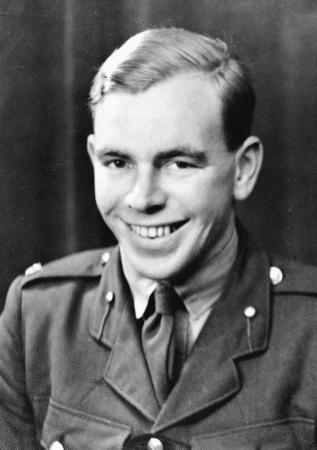
Oxford and Buckinghamshire Light Infantry, attached to Force 133, Special Operations Executive
Born 31 December 1911 in Christchurch, New Zealand
Died 26 April 1945, aged 33
Buried at Heliopolis War Cemetery, Egypt.
John Mulgan was the elder son of Alan Edward Mulgan, a well-known journalist and author, and Marguerita, née Pickmere. In 1937 he married Angela Gabrielle, née Wanklyn.
He was born in Christchurch, New Zealand, on 31 December 1911, and was educated at Wellington College and Auckland Grammar School, and at Auckland University College, where he took an arts degree in 1933.
He came to Merton to read English (with Edmund Blunden as his tutor), played rugby in the College XV, and took a first class degree in 1935. That year he joined the staff of the Clarendon Press in Oxford and was engaged in editorial work on English studies, though he also wrote articles for New Zealand papers on European affairs, and attended a session of the League of Nations as an observer for the New Zealand Government.
In 1938 he brought out a verse anthology, Poems of Freedom, and the following year his novel Man Alone was hastily completed and published: plates and stock were destroyed by bombing in London and the book was not widely read in New Zealand until its reissue in 1949.
Before the outbreak of war Mulgan held a commission in a territorial battalion of the Oxford and Buckinghamshire Light Infantry; he therefore served throughout the war with British units, including the Royal West Kent Regiment in North Africa, and Force 133 in German-occupied Greece. He was awarded the MC for his operations with the partisans in Thessaly and the Pindus mountains.
He took his own life on 26 April 1945 in Cairo, Egypt. At the time he held the rank of lieutenant colonel.
1st Lothians and Border Horse, Royal Armoured Corps
Born 26 May 1923
Killed in action 17 August 1944, aged 21
Buried at Banneville-La-Campagne War Cemetery, France.
Alexander ‘Sandy’ Munro was the son of William Angus Munro and of Margaret Bruce, née Grieve, of Edinburgh.
He was educated at Daniel Stewart’s College, Edinburgh, where he was noted as a 'serious Classics scholar' and was a powerful and enthusiastic rugby player. A quiet but effective speaker, he was an active member of the Literary Society, a debating club concerned with artistic and social matters. He was also an enthusiastic participant in the school's timber camps in the early years of the war - the boys voluntarily gave up their holidays to fell and prepare timber, and he was noted for uncommon skill in handling both a saw and axe. He was known for his keen sense of humour, his personal charm and wit; he often returned to the school to help out with debating where he was able.
Gazetted in 1943, he first served with the 1st Lothians and Border Yeomanry (variously known in Edinburgh as the 'Loathsome and Bothersome Horse' and the 'Princes Street Lancers'!).
On 5 August 1944 he joined the strength of the 2nd Fife & Forfar Yeomanry, 11th Armoured Division, who had suffered severe losses during the D-Day operations.
He was killed when his tank was hit whilst crossing a tributary of the Orne River near the village of Flers, La Carneille, Normandy, France, on 17 August 1944.
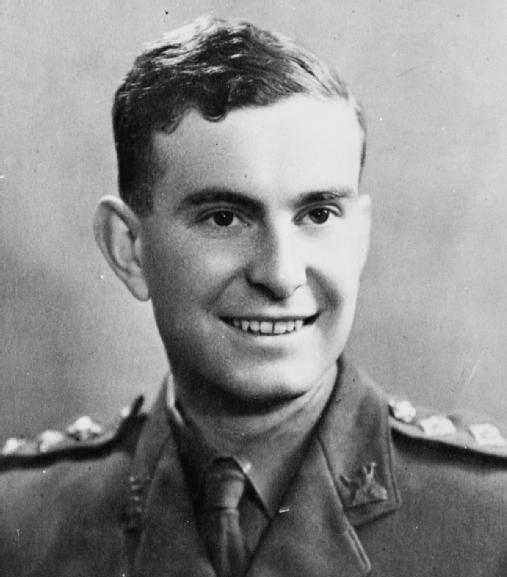
2nd Battalion, Royal Norfolk Regiment
Born 22 December 1917 in Benares (now Varanasi), India
Killed in action 6 May 1944, aged 26
Buried at Kohima War Cemetery; also commemorated in St Peter's Church, Petersham, London.
John Randle—known throughout his life as Jack—was the son of Dr Herbert Niel Randle and Edith, née Whitby, of Richmond, Surrey. He married Mavis Ellen, née Manser, of Holywell, Oxford.
He was educated at the Dragon School, Colet Court Prep School, and Marlborough College. Whilst at Merton he played in the College rugby, hockey and water-polo teams. He took a second class degree in Law in the summer of 1939; his best friend at Merton was Leonard Cheshire.
His VC citation reads:
“On the 4th May, 1944, at Kohima in Assam, a Battalion of the Norfolk Regiment attacked the Japanese positions on a nearby ridge. Captain Randle took over command of the Company which was leading the attack, when the Company Commander was severely wounded. His handling of a difficult situation in the face of heavy fire was masterly and although wounded himself in the knee by grenade splinters he continued to inspire his men by his initiative, courage and outstanding leadership, until the Company had captured its objective and consolidated its position. He then went forward and brought in all the wounded men who were lying outside the perimeter.
In spite of his painful wound Captain Randle refused to be evacuated and insisted on carrying out a personal reconnaissance with great daring in bright moonlight prior to a further attack by his Company on the positions to which the enemy had withdrawn.
At dawn on 6th May the attack opened led by Captain Randle and one of the platoons succeeded in reaching the crest of the hill held by the Japanese. Another platoon, however, ran into heavy medium machine gun fire from a bunker on the reverse slope, of the feature. Captain Randle immediately appreciated that this particular bunker covered not only the rear of his new position but also the line of communication of the Battalion and therefore the destruction of the enemy post was imperative if the operation was to succeed.
With utter disregard of the obvious danger to himself Captain Randle charged the Japanese machine gun post single-handed with rifle and bayonet. Although bleeding in the face and mortally wounded by numerous bursts of machine gun fire he reached the bunker and silenced the gun with a grenade thrown through the bunker slit. He then flung his body across the slit so that the aperture should be completely sealed.
The bravery shown by this officer could not have been surpassed and by his self-sacrifice he saved the lives of many of his men and enabled not only his own Company but the whole Battalion to gain its objective and win a decisive victory over the enemy.”
4th Queen's Own Hussars, Royal Armoured Corps
Born 15 January 1920 in Birkenhead, Merseyside
Died of wounds 2 July 1942, aged 22
Buried at Tel El Kebir War Memorial Cemetery, Egypt. Also commemorated on the Wallasey Grammar School war memorial.
Donald Rawcliffe was the son of Arthur Clayton Rawcliffe and Dorothy Annie, née Underwood, of Wallasey, Cheshire.
He was educated at Wallasey Grammar School, and came to Merton as an Exhibitioner to read PPE.
Royal Air Force Volunteer Reserve
Born 3 January 1925
Died 16 August 1946, aged 21
Buried at Delhi War Cemetery, India.
Richard Rushmore was the son of A E Rushmore of Melksham, Wiltshire.
He was educated at King Edward’s School, Bath.
Whilst serving with 322 Maintenance Unit at RAF Cawnpore in Chakeri, India, Flight Lieutenant Rushmore was killed when he crashed his Harvard II, serial number FS802, whilst performing unauthorised low-level aerobatics.
From The Argus (Melbourne, Victoria), Saturday 24 August 1946:
AIRMAN CHOSE THE HARD WAY – AND DIED
Flight-Lieutenant Richard Rushmore, 21-year-old Oxford undergraduate, lived the hard way.
While training in Canada in 1943, under the Empire Air Scheme, he injured his spine. He could have stayed in hospital a long time, but he tore off his plaster jacket, reported fit, and in due time became an operational fighter-pilot in Europe. After Germany's defeat he was offered a staff job because of his fine qualities, but he refused and said he wanted to go to the Far East, since Japan was still unbeaten. After Japan gave up Flight Lieutenant Rushmore could have been demobilised in order to return to his studies at Oxford. But he said: "No, send me to an air experimental squadron." His wish was granted, and the other day he was killed in a flying accident in India.
Royal Air Force Volunteer Reserve
Born 25 June 1906 in Rochford, Essex
Died on active service 10 June 1945, aged 38
Buried at Brookwood Military Cemetery, Surrey.
Solomon Shire, known as Lolly, was the son of Max Mendel Shire and Sophia Shire; He married Henrietta, née Greenhill, of Marylebone, London, in Hampstead in 1930.
He was educated at St Paul’s School.
King's Royal Rifle Corps
Born 28 April 1888 in East Lexham, Norfolk
Died on active service 25 June 1940, aged 52
Buried at sea, commemorated on a plaque in St Anne's Church, Westgate, Dunbar.
Herbert Smith was the son of Frederick Edgar Smith and Caroline Alice, née Dyball. He married The Honourable Moira Violet Maria, née Plunket, in January 1923 at St Mary’s Church, Denham, Buckinghamshire. They had one daughter, Fiona L Smith, born in 1923.
He was educated at Charterhouse School.
In August 1914 he was commissioned into the 2nd King's Royal Rifle Corps, and in 1917 was awarded the Distinguished Service Order and twice mentioned in despatches. He was also made a Chevalier of the Légion d’honneur.
After the First World War he continued to serve in the army until 1935; he rejoined at the outbreak of war in 1939 and was placed in command of the 165th Officer Cadets Training Unit, based at Castle Park Barracks in Dunbar, East Lothian. He died in the Craig-en-Gelt Hotel in Dunbar on 25 June 1940, and was buried at sea.
760 Squadron, Fleet Air Arm, HMS Heron, Royal Naval Volunteer Reserve
Born 21 May 1920 in Bromley, Kent
Killed while on active service 26 February 1941, aged 20
Buried at Yeovilton (St Bartholomew) Churchyard, Somerset.
John Stafford-Clark was the son of Francis Stafford-Clark LLD JP, and Cordelia Susan, née Stephens, of Bromley, Kent.
He was educated at Charterhouse School, and came up to Merton to read Law, leaving in Hilary Term 1940 to join up.
He was killed in an air crash in February 1941.
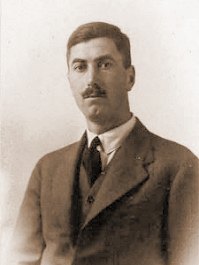
Royal Engineers, attached to 8th Battalion, King's Own Royal Regiment (Lancaster)
Born 25 February 1900 in Kilskeery, County Tyrone, Northern Ireland
Died of wounds, 25 July 1941, aged 41
Commemorated on the Brookwood Memorial, Pirbright, Surrey; and on the war memorial at Gresham's School
Frederick Story was the elder son of Evelyn James Story JP and Hilda Grenside, née Hooper, of Wrington, Somerset.
He was educated at Gresham’s School, Holt, Norfolk, where he was a member of the Officer Training Corps, and after leaving school in 1918 he served as a cadet in the Household Brigade of the Officer Cadet battalion. He was commissioned as a 2nd Lieutenant in the Welsh Guards (Special Reserve of Officers) on 10 March 1919, but relinquished his commission on 1 April 1920, though retaining his rank.
He came up to Merton with a Postmastership in Hilary Term 1919, was awarded a Goldsmith’s Exhibition for Chemistry in 1921, and took a second class degree in Chemistry in 1922. He was a member of the College Hockey XI.
On leaving university Story worked as a chemist for the Guinness Brewery in Dublin, where in 1932 he married Nancy Agnes Kingscote, née Lumsden.
Story was commissioned as a Lieutenant in the 36th (Middlesex) Anti-Aircraft Battalion, Royal Engineers in the Territorial Army on 30 April 1938 and was promoted to Captain on 20 July 1939.
On 11 July 1941, the 8th Battalion, King's Own Royal Regiment, to which Story was attached, set sail from Glasgow bound for Malta via Gibraltar, where they arrived on 20 July. The following day they embarked in two groups on board the light cruisers HMS Manchester and HMS Arethusa for the second leg of their journey. At 9:45am on the morning of 23 July 1941, the fleet came under attack from nine Italian Savoia-Marchetti SM.79 Sparviero bombers. One aircraft dropped a torpedo which hit HMS Manchester in the engine room; Story was wounded during this attack and died from his wounds on board the ship two days later. He was buried at sea.
78 Battery, 38 Light Anti-Aircraft Regiment, Royal Artillery
Born 29 September 1918 in Hampstead, London
Died whilst a Prisoner of War 6 June 1945, aged 26
Buried at Jakarta War Cemetery, Indonesia.
Michael Stuttaford was the son of Charles Stuttaford and Nora Kathleen, née Porter, of Hampstead, London.
He was educated at Westminster School, and whilst at Merton he captained the University fencing team in 1940.
He died whilst being held as a Prisoner of War in 1945, in Palembang, Sumatra.
Burma Auxiliary Force
Born 4 May 1915 in Droitwich
Died 23 December 1941, aged 26
Commemorated on the Taukkyan Memorial, Yangon (formerly Rangoon), Burma.
Ronald Sudbury was the son of Ronald Edwin George Sudbury and Alberta Alice, née Rogers, of Worcester.
He was educated at the Royal Grammar School, Worcester, where he captained the 1934 2nd XI cricket team.
After leaving Merton with a third class honours degree in 1938, he entered the Burmese Civil Service and took up a post in Rangoon. He enlisted in the militia and was taught anti-aircraft gunnery.
On 23 December 1941 Sudbury was in charge of a 40mm gun team when the aerodrome they were defending came under attack from Japanese aircraft. A bomb fell directly onto the gun pit, instantly killing Ronald and six other men alongside him.
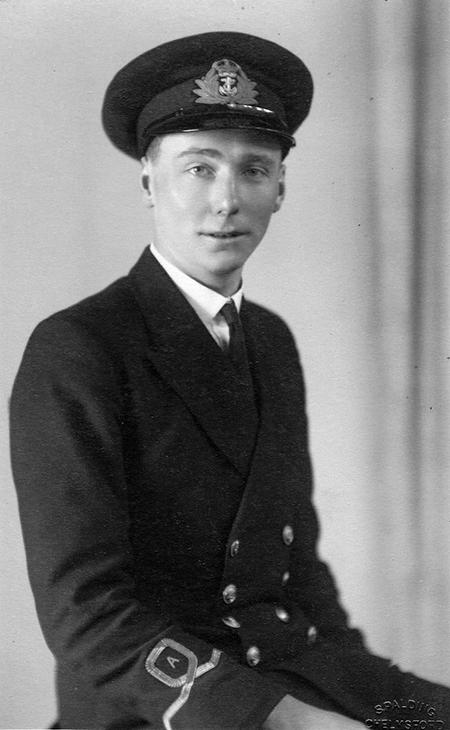
811 Squadron, Royal Naval Air Service
Born 8 October 1917 in Darjeeling, India.
Missing, presumed killed 9 August 1942, aged 24
Commemorated on the Lee-on-Solent Memorial; also on Great Leighs War Memorial, Essex.
Richard Townend was the son of Herbert Patrick Victor Townend and Lettice Joan, née Bevington.
He was educated at Haileybury School, Hertford, and came up to Merton with a Postmastership in 1936, taking a first in Classical Mods in 1938.
HMS Condor was a Royal Naval Air Station at Arbroath in Scotland where crews were trained in signals and deck landings. Townend was an Observer with 811 Squadron RNAS, and was reported missing, presumed killed after an operational flight over the North Sea.
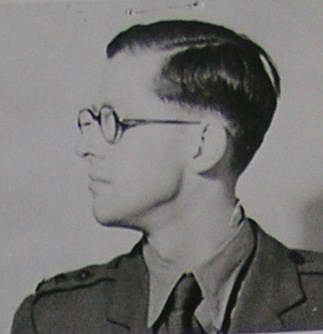
King's Royal Rifle Corps, attached to Special Operations Executive
Born 3 October 1914
Killed in action 17 August 1944, aged 29
Buried at Paramythia Civil Cemetery; also commemorated on the Eton College Roll of Honour.
David Wallace was the son of Capt The Rt Hon Euan Wallace, MC, PC and Lady Myra Idina, née Sackville, of Petworth, Sussex. David married Joan Prudence, née Magor, on 24 January 1939, and they lived in Kensington. They had two daughters.
He was educated at Eton College, and came up to Balliol in 1933, taking a first in Classics in 1936 before coming to Merton as a Harmsworth Senior Scholar the following year.
Wallace served in the KRRC and was part of the SOE. He was an observer attached to the 10th Greek Division, the strongest national resistance force fighting against the Germans. He was killed during the conquest of Fort Menina.
He is buried in the only Commonwealth War Grave in an old churchyard in Greece. He is marked by a memorial inscribed in Greek:
‘Here rests amongst his guerilla comrades an Englishman, Major David Wallace, killed on 17th August, 1944, in the battle of Meninas. The soil of Greece is honoured to give shelter to this hero.’
Two of his three brothers, Gerard and Peter, were also killed whilst serving during the war.
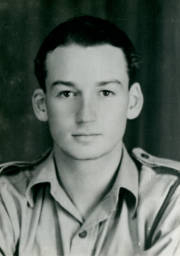
2nd Battalion, Somerset Light Infantry
Born 25 March 1920 in Sculcoates, Yorkshire
Died 5 April 1944, aged 24
Buried at Cassino War Cemetery, Italy. Also commemorated on his parents’ headstone at St Augustine's Church, Hedon, East Yorkshire.
William Watson was the only son of James Watson (Mertonian, 1899) and Jessie Burton, née Prior, of Holyrood House, Hedon, Yorkshire.
He was educated at Horris Hill Prep School, and at Radley College from 1933 to 1938, where he was a member of the Politics and Debating Societies.
His obituary in The Radleian reads:
“He was an active and energetic figure in our midst, eager for talk and discussion, delighting in the company of many friends, and always ready to uphold downright views. He played cricket and hockey for College and Social teams with the utmost abandon and enjoyment. He was a Junior Prefect and a member of several societies. When he left he went to Merton College, Oxford, to read law. On the outbreak of war he joined up at once as a gunner in the RA. In 1941 he was commissioned in the S.L.I., after a short period of service with the East Yorks Regiment. His death will be the cause of great sorrow to a wide circle of friends and acquaintances.”
81 Operational Training Unit, Royal Air Force Volunteer Reserve
Born 12 June 1921 in Barnet, London
Died 10 February 1943, aged 21
Buried at Northwood Cemetery, London.
Dennis Wild was the son of Paul Arthur Eric Wild and Ida Mildred Kathleen, née Cook, of Northwood, Middlesex.
He was educated at Merchant Taylor’s School, and took a second in Classical Mods in 1941.
No. 81 OTU was formed in July 1942 at RAF Ashbourne, Derbyshire, to train night bomber crews with the Armstrong Whitworth Whitley.
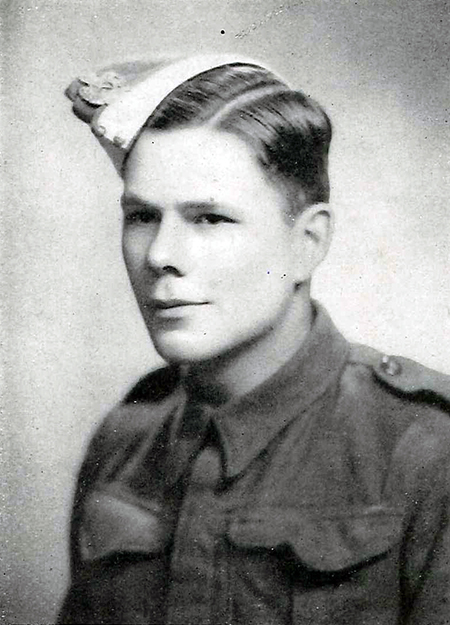
Royal Engineers
Born 12 May 1918, in Richmond, Surrey
Killed on active service 14 September 1940, aged 22
Buried at Bournemouth East Cemetery.
Vernon Winter was the son of Carl T Raoul Winter and Violet Scott, née Miller.
He was educated at a private school in Deal, Kent, and came up to Merton in 1936 to read Mathematics. Whilst at Merton he played both hockey and football for the college. He also performed with the College Dramatic Society.
He volunteered for the Royal Engineers within a few weeks of the outbreak of war, and spent six months training at Folkestone before being gazetted Second Lieutenant. He was killed in a mine-laying accident, aged 22, along with several other members of his Company.
77 Squadron, Royal Air Force Volunteer Reserve
Born 2 April 1924
Killed in action 7 February 1945, aged 20
Buried at Reichswald Forest War Cemetery, Kleve, Germany. Also commemorated on a memorial window in St Ternan’s Church, Banchory, Scotland.
Harry Wright was the son of Colonel Wright of the Gordon Highlanders.
He was educated at Uppingham School.
He was killed whilst flying an Avro Lancaster on a bombing mission over Heligoland in February 1945.
Royal Air Force Volunteer Reserve
Born 13 July 1923 in Gainsborough, Lincolnshire
Died while on active service 26 June 1943, aged 19
Buried at Medicine Hat (Hillside) Cemetery, Alberta, Canada.
Richard Wright was the son of James Frank Wright and Lilian, née Glover, of Kirton Lindsey, Lincolnshire.
He was educated at Brigg Grammar School. He later wrote to the school magazine, The Briggensian, from Oxford:
“14th June, 1942
It is with mixed feelings that I take up my pen to write this, my second and last wartime Oxford letter. However the natural feeling of regret which everyone experiences on going down from Oxford is tempered in my case by the fact that I am keenly looking forward to what promises to be an interesting career in the RAF. Even my short air experience has convinced me that flying is not without its thrills. Still I shall miss the majestic splendour of the High, arrayed in all its glory in the evening sun of early summer; I shall miss the rugged beauty of the 14th-century quad where I live, the misplaced cheerfulness of my scout in the early morning and all the things to which I have become so accustomed…
At the moment most people are fully occupied with "Schools" i.e. examinations—a spectre which is always hovering in the background and well calculated to spoil the second half of an otherwise perfect summer term.
Many attractions have inevitably disappeared, but otherwise life is much the same as I imagine it was in pre-war days. College dances are still held with regularity, but obviously not on the same lavish scale as "Commem. Balls" of yore; parties are less numerous but not less gay. Cambridge beat Oxford at tennis, BNC. and Christ Church finished head of the river in Eights Week, and there is to be no Boat Race. At the theatre John Gielgud played Macbeth to enthusiastic audiences, and "Hellzapopping" was popular at the cinema; the former House of Commons' chef gives the best food in Oxford at the Union, and so life goes on…
The outstanding event in the political world was the election of a negro President of the Union for the first time in its history. He comes from the West Indies, and his election is definitely an Empire event. The fact that he is a Socialist, and a very Left Socialist at that, is significant of the current trend of political thought in Oxford. The powerful Conservative caucus in the Union has now almost disappeared and the tendency at the moment is to break away from the shackles of the party system. A project was even considered whereby all political clubs should unite under the name of the Progressive Club. Rightly this was rejected: to take an example, although we all want to go forward. it is patently obvious that the Liberals want to progress in quite a different direction to the Communists. A political truce would serve no useful purpose whatever in Oxford.
However this letter was not meant to be political and I fear that I have already written more than enough.”
The following are not commemorated on the war memorial, but were listed in the Merton College War Record 1939-1946, published by Oxford University Press:
1st Battalion, Hampshire Regiment
Born 8 April 1926 in Paddington, London
Died on active service 5 August 1946, aged 20
Buried at Nicosia War Cemetery, Cyprus.
The Honourable Robert Douglas Collier was the only son of Robert Alfred Hardcastle Collier, 3rd Baron Monkswell, and of Lady Katharine Edith Collier, née Gastrell.
He was educated at Eton, and was elected to a Chambers Postmastership in History in April 1944, but did not matriculate.
He was drowned accidentally whilst on active service in Kyrenia, Cyprus on 5 August 1946.
Royal South African Artillery
Born 20 September 1918
Killed in action 21 November 1941, aged 23
Buried at Knightsbridge War Cemetery, Acroma, Libya.
John David Pitman was the youngest son of George John Edward Pitman, a doctor, and Dora Lucy Wilmot Pitman of Mossel Bay, Cape Province, South Africa.
He was educated at Bishops Diocesan College, Rondebosch, and at the University of Cape Town, where he took his BA in 1938. He was awarded a Rhodes Scholarship in 1939, but joined the South African Artillery before he could come to Merton.
He served in the Middle East, and was killed in action in Libya on 21 November 1941, at the start of Operation Crusader that lifted the siege of Tobruk.
Do you have additional information or a picture of anyone listed here? We are always interested to find out more about those who gave their lives in the World Wars; if you would like to share what you have, please contact Rebecca Wilson, Web & Media Officer or Julian Reid, Archivist (01865 286315).